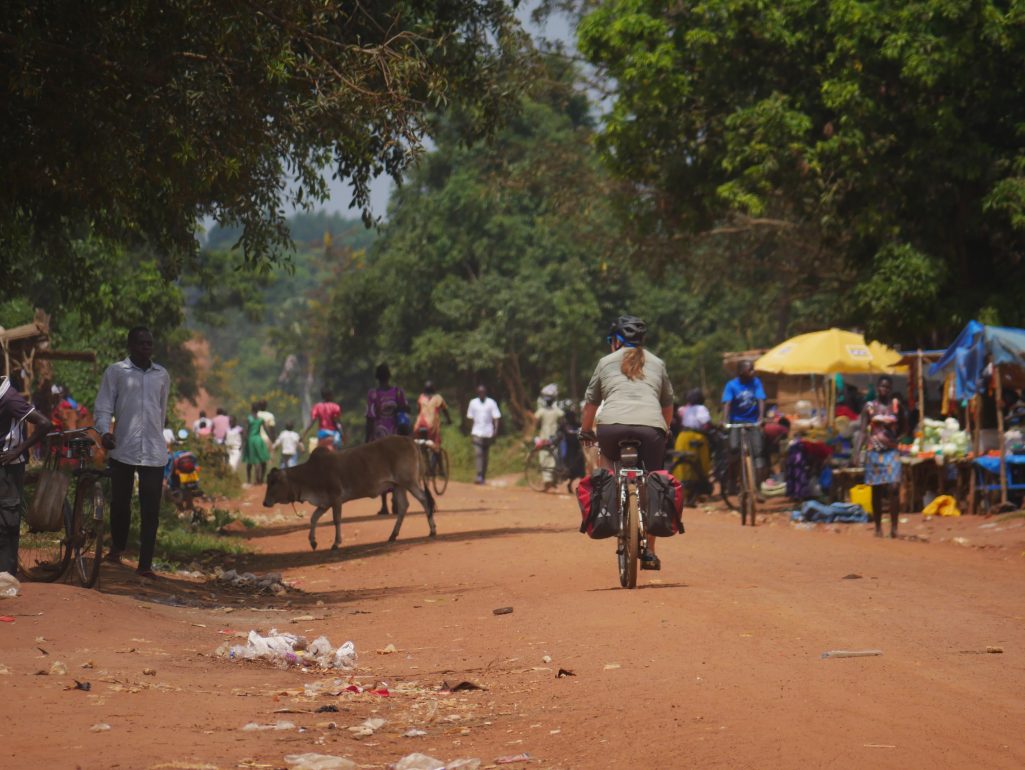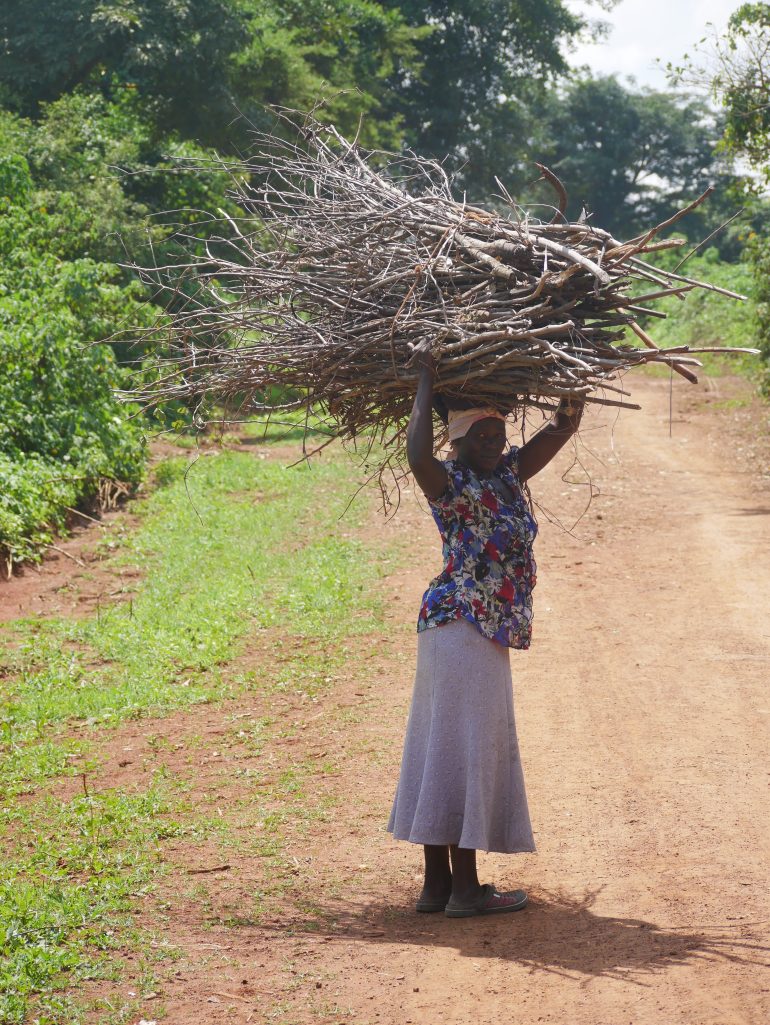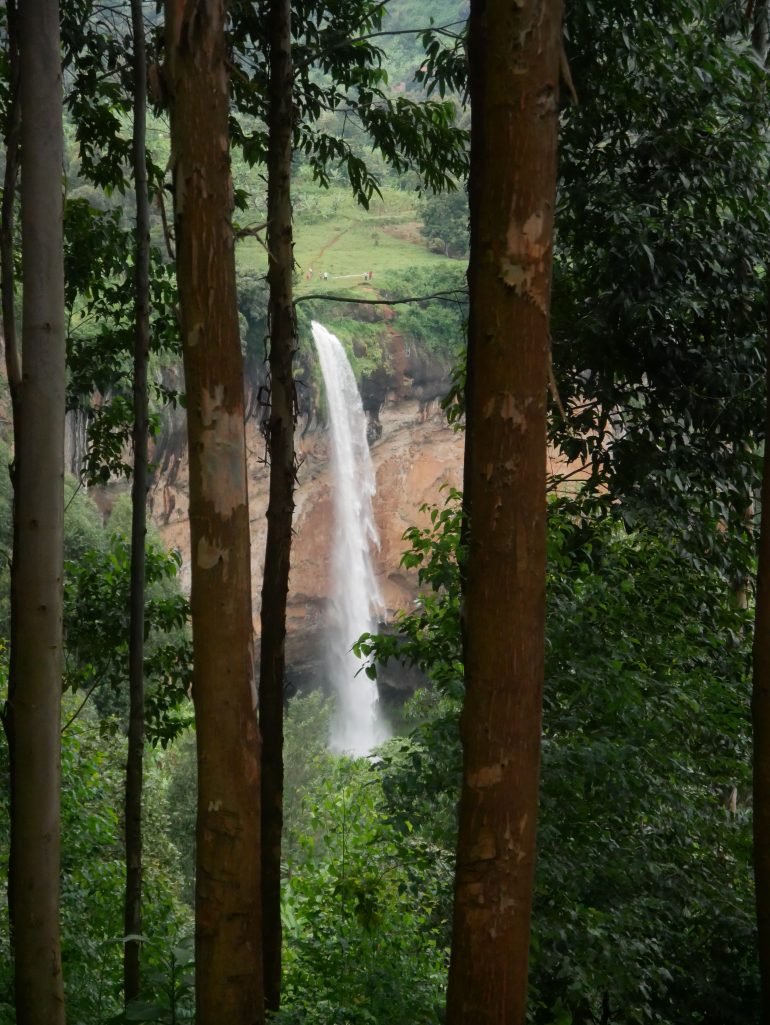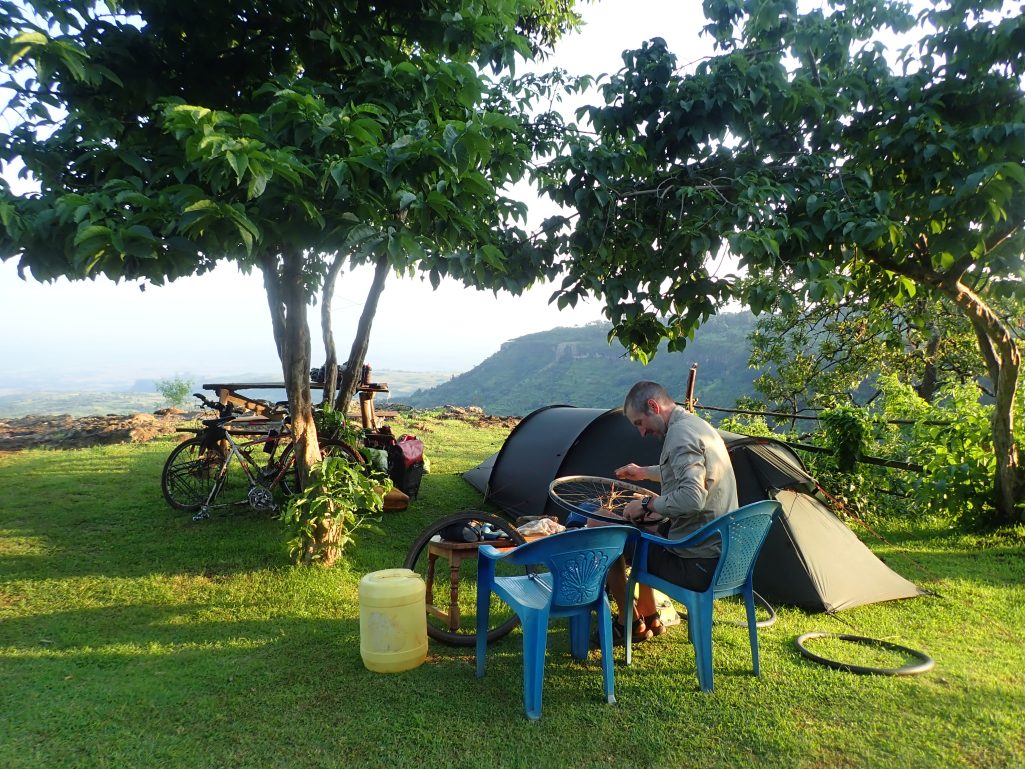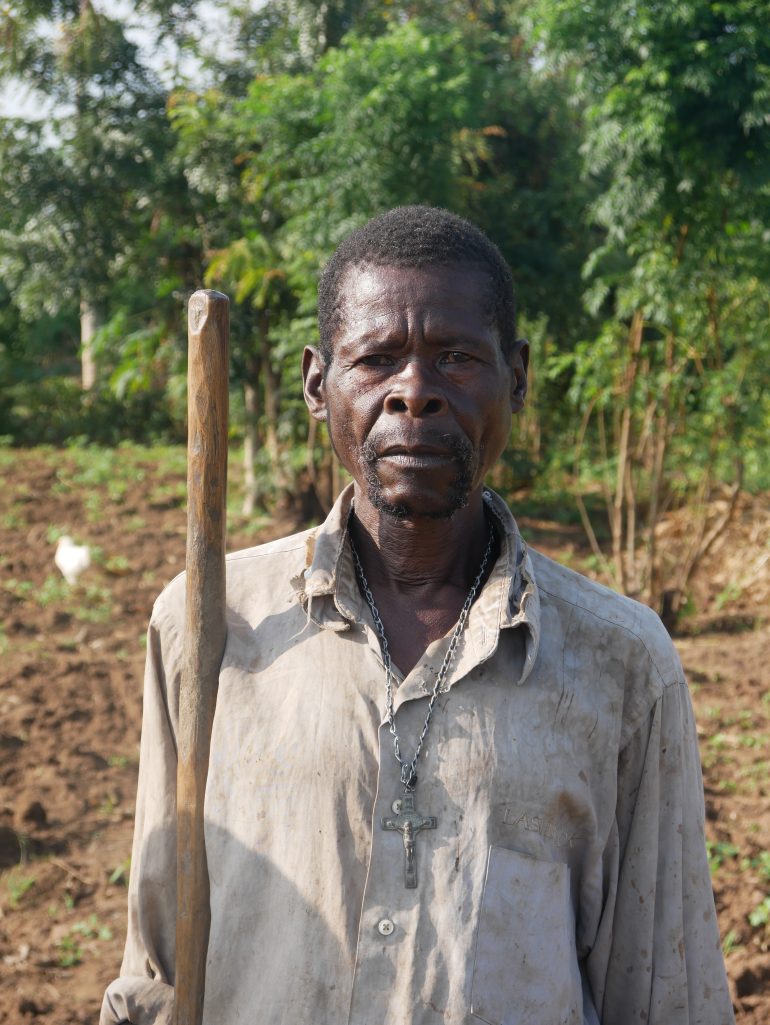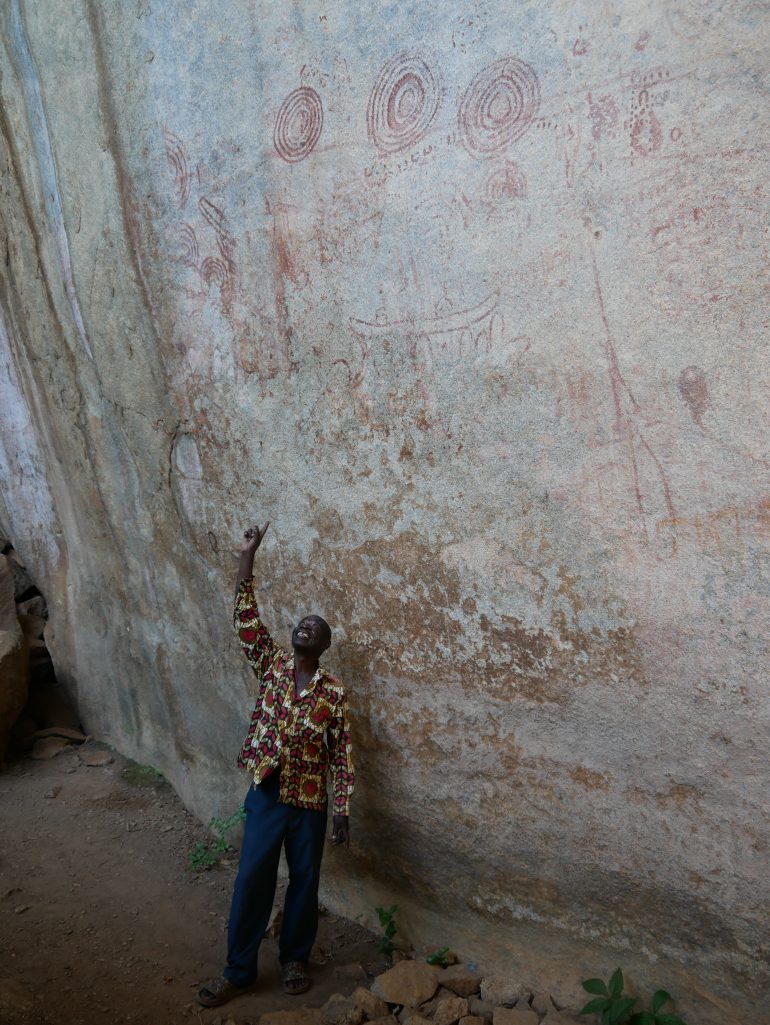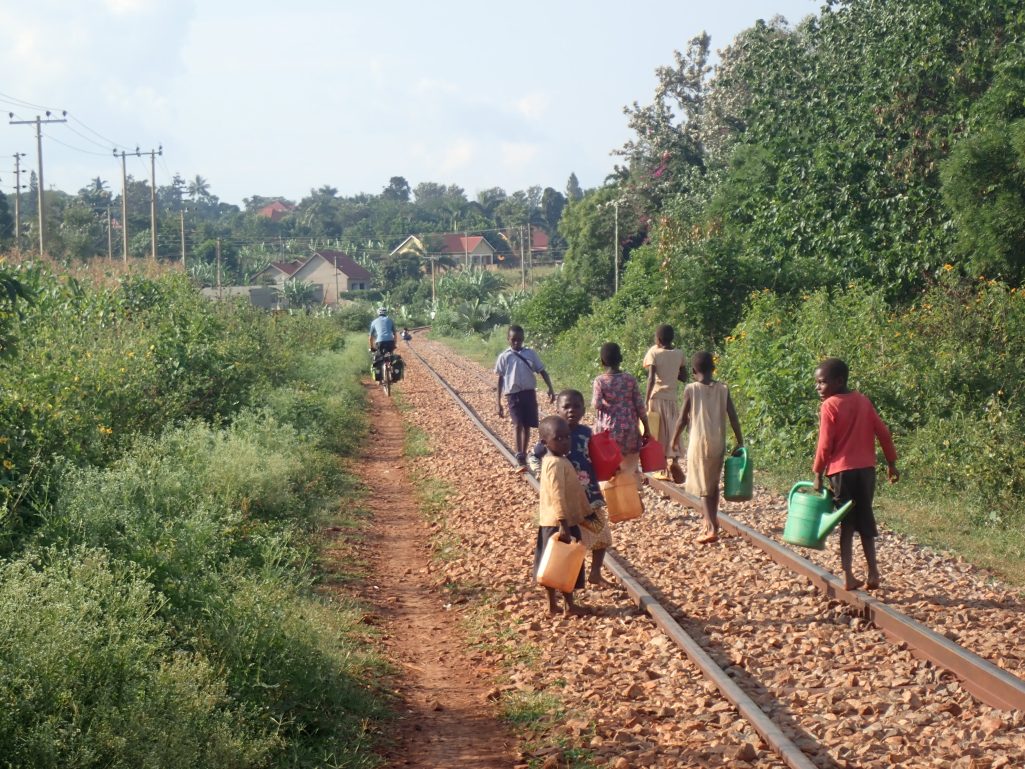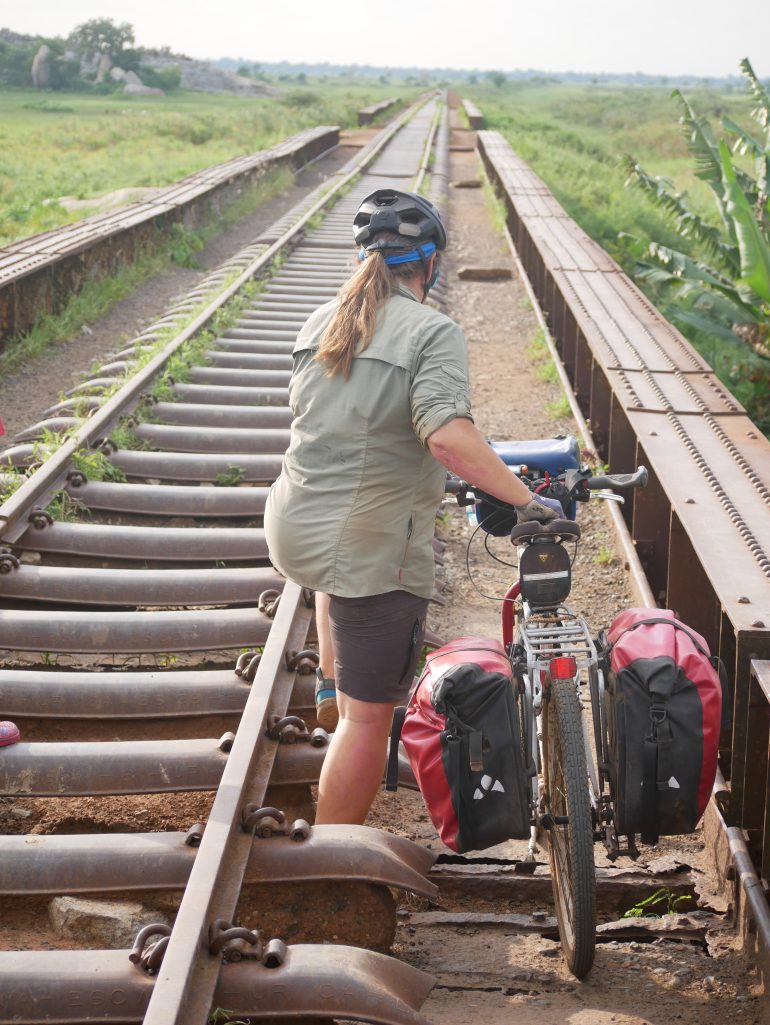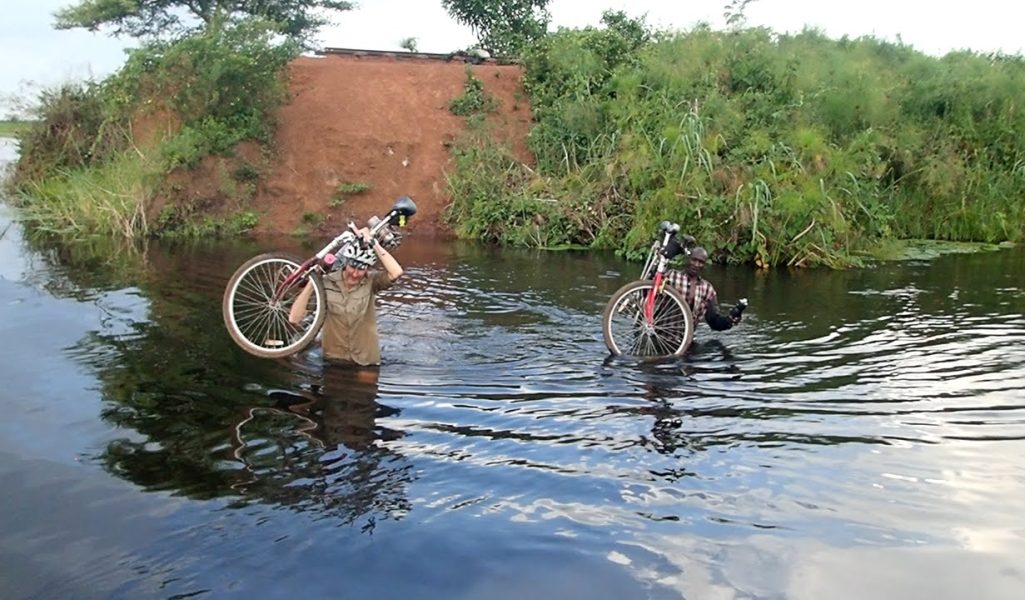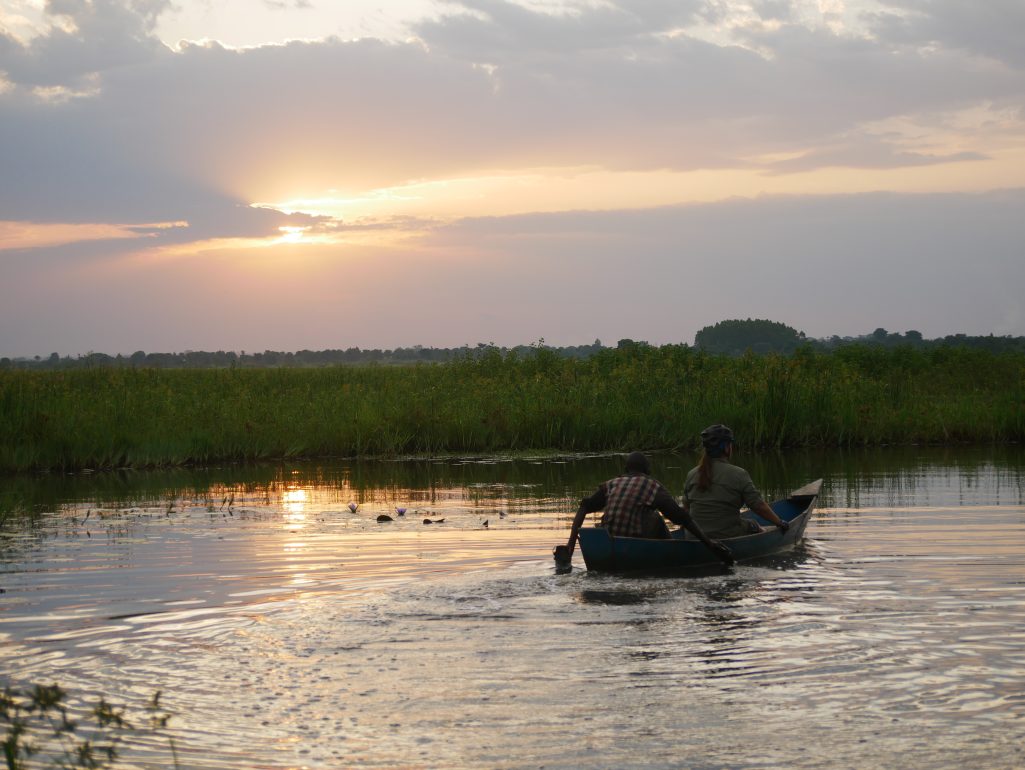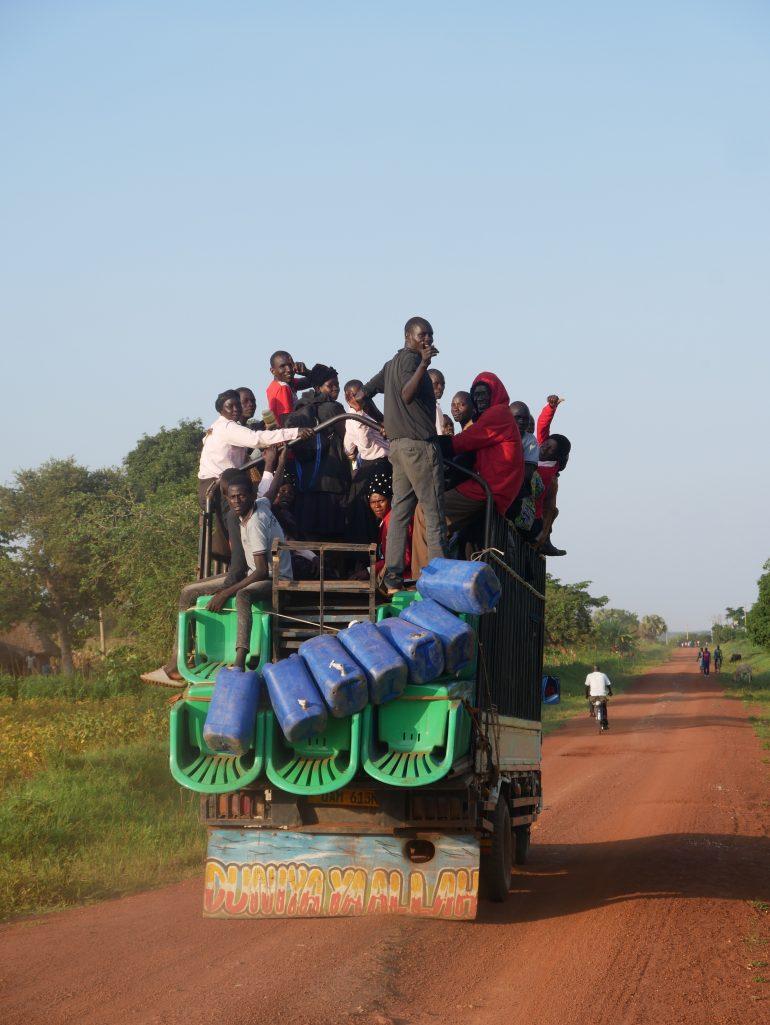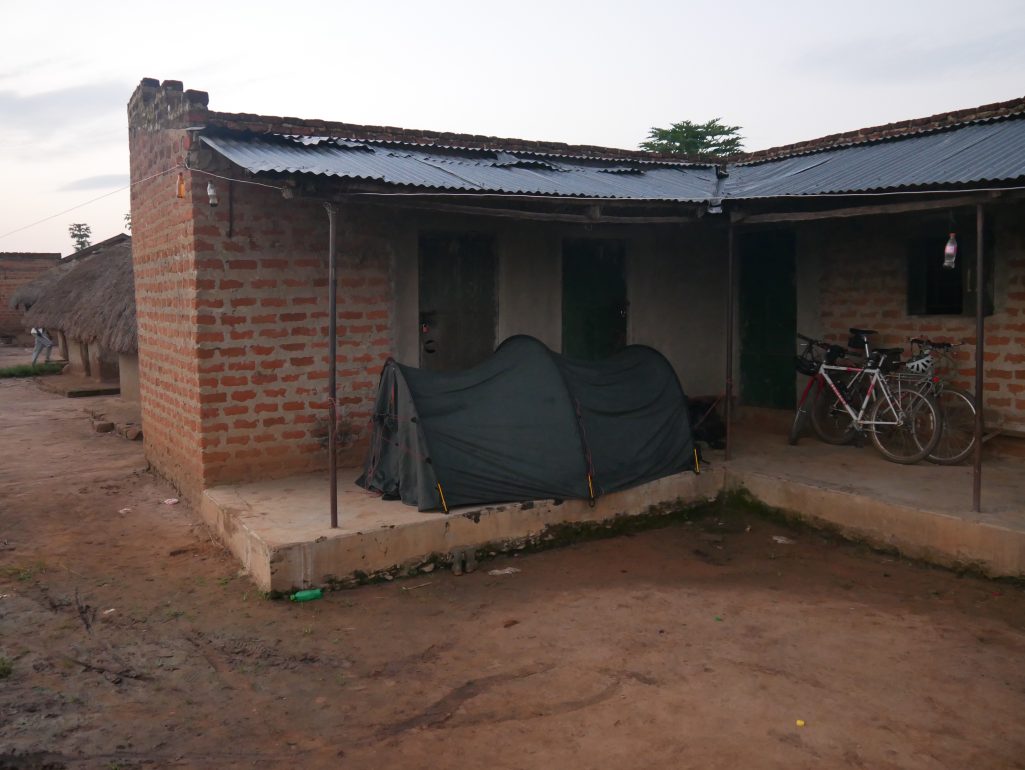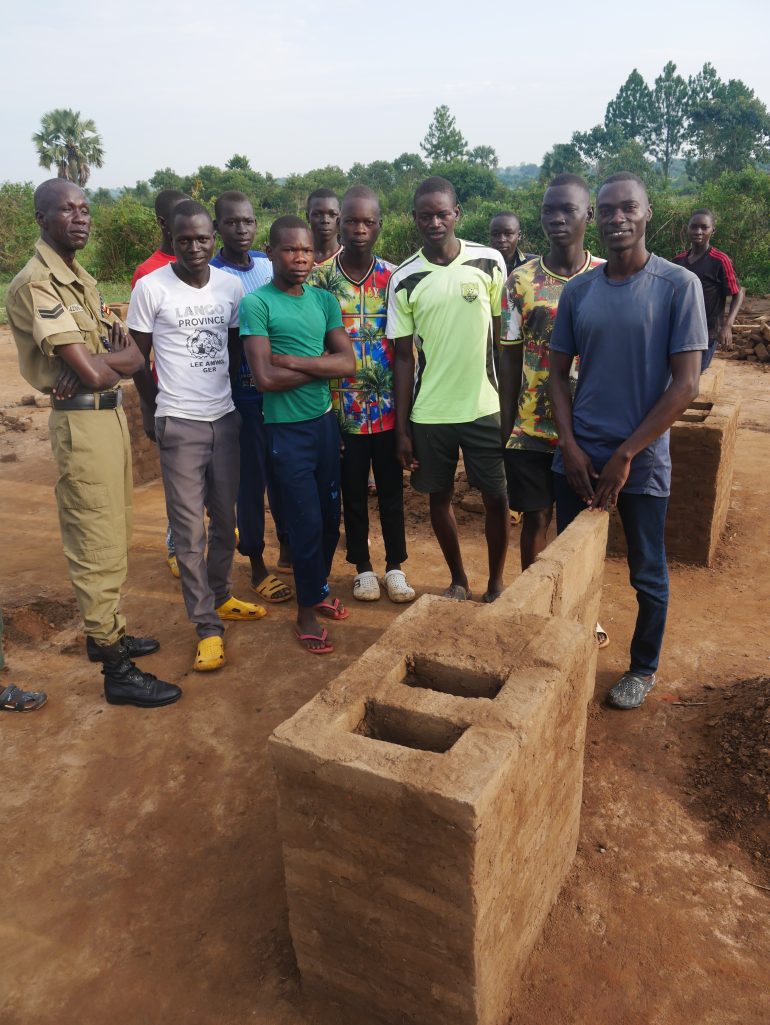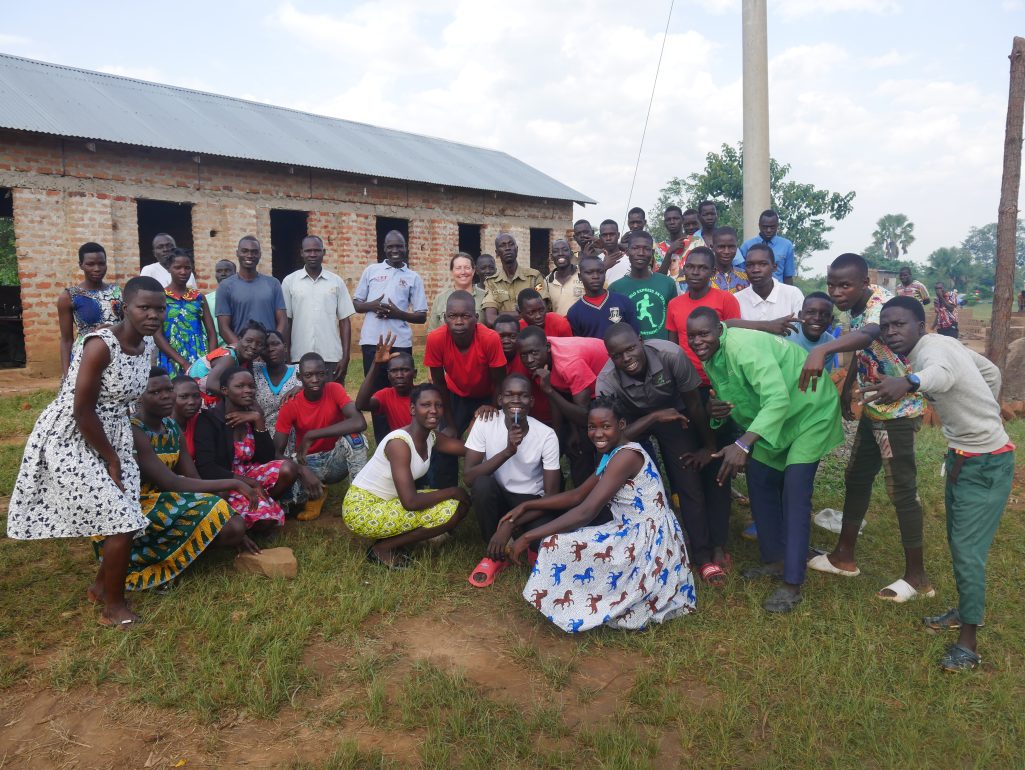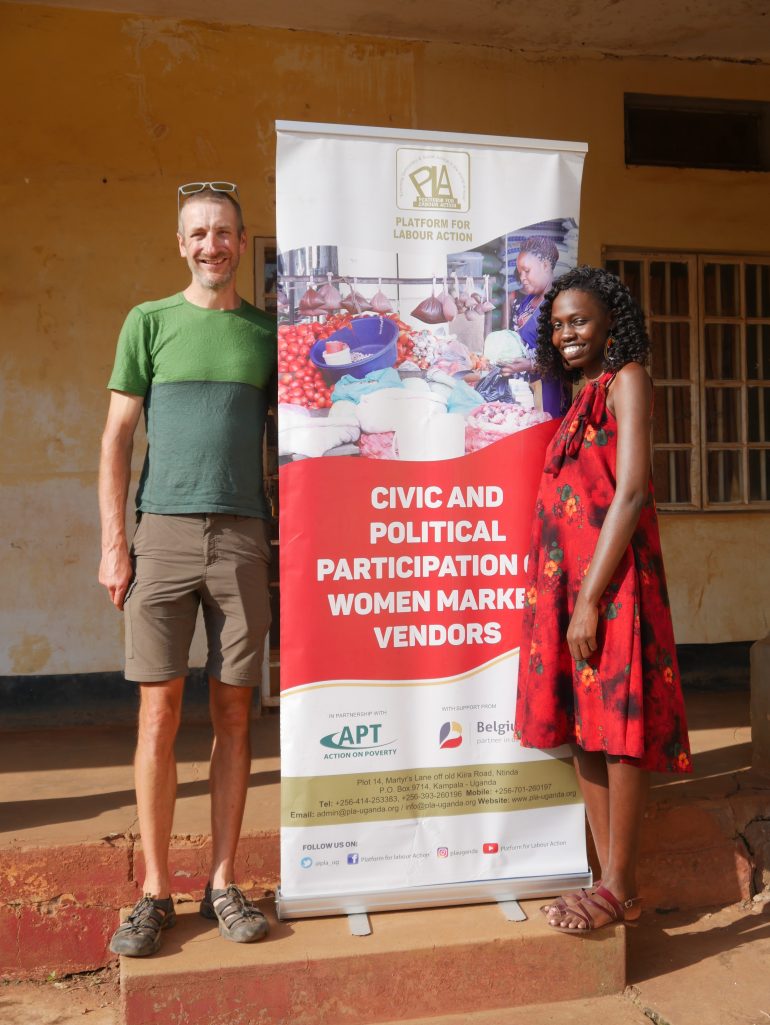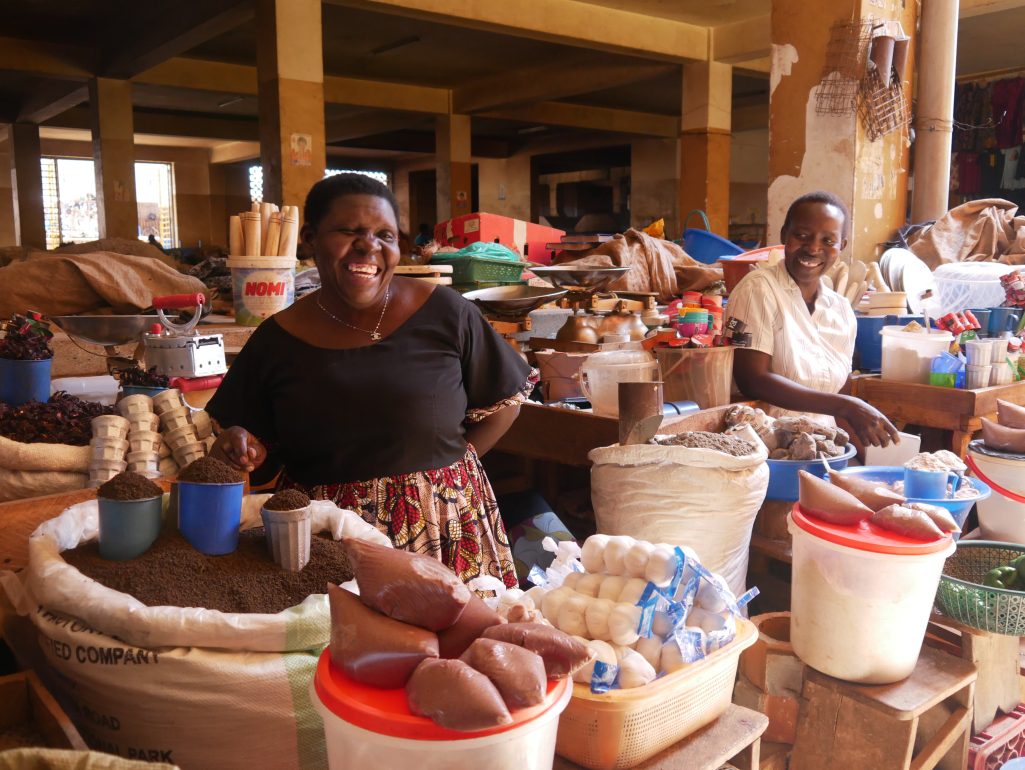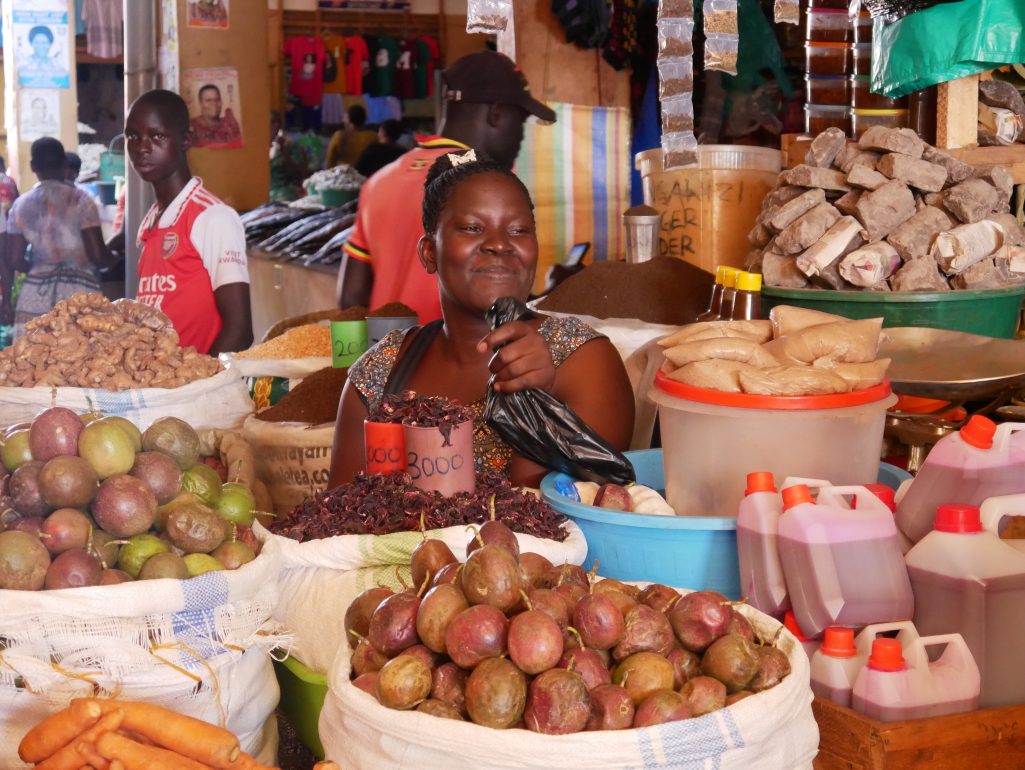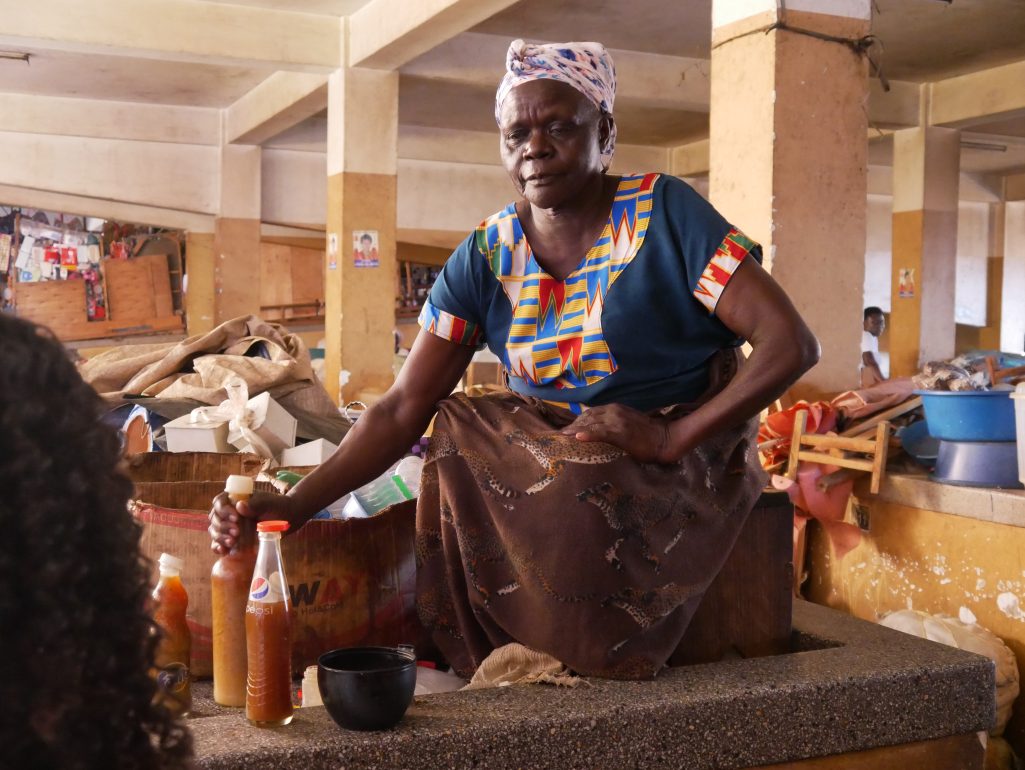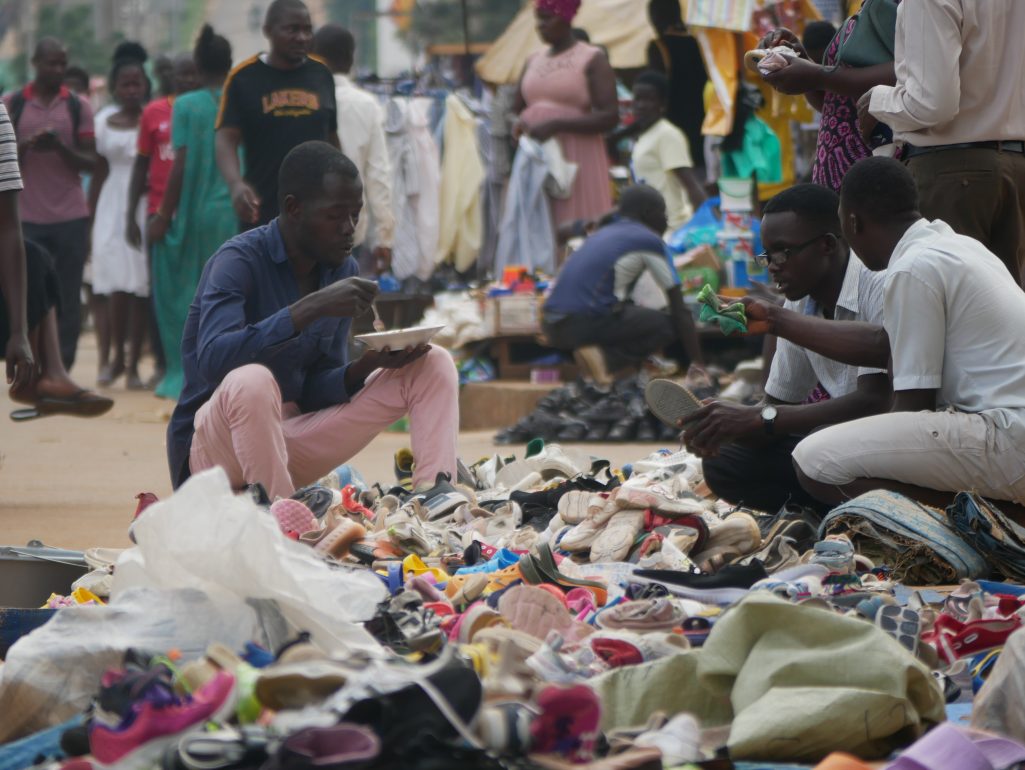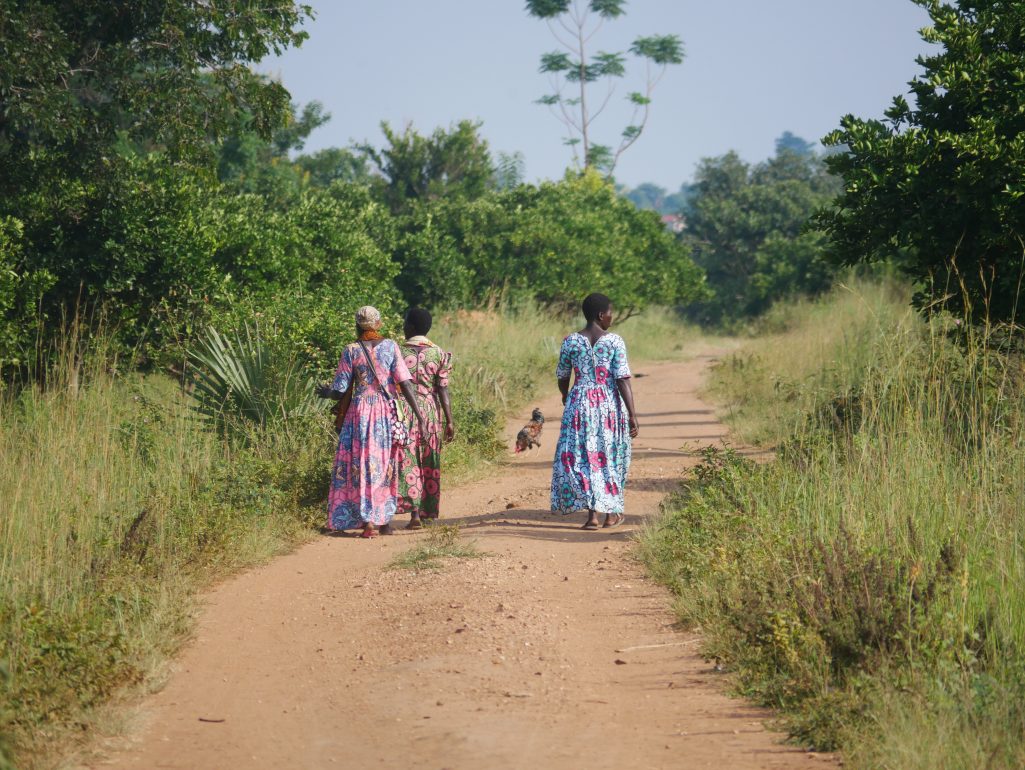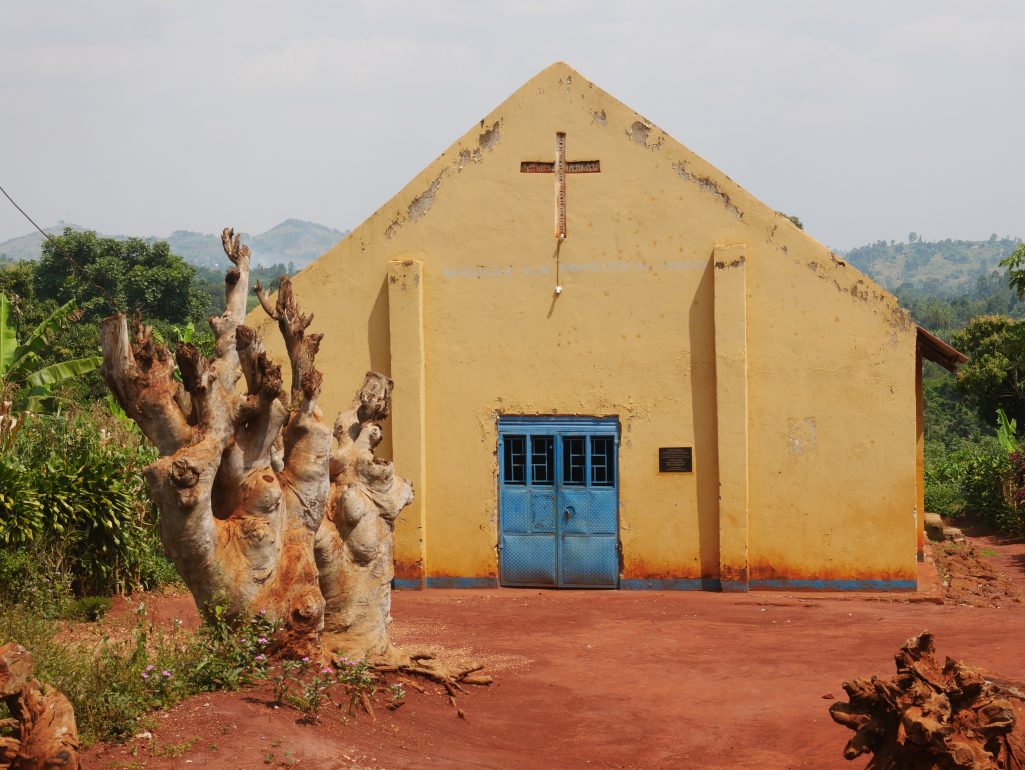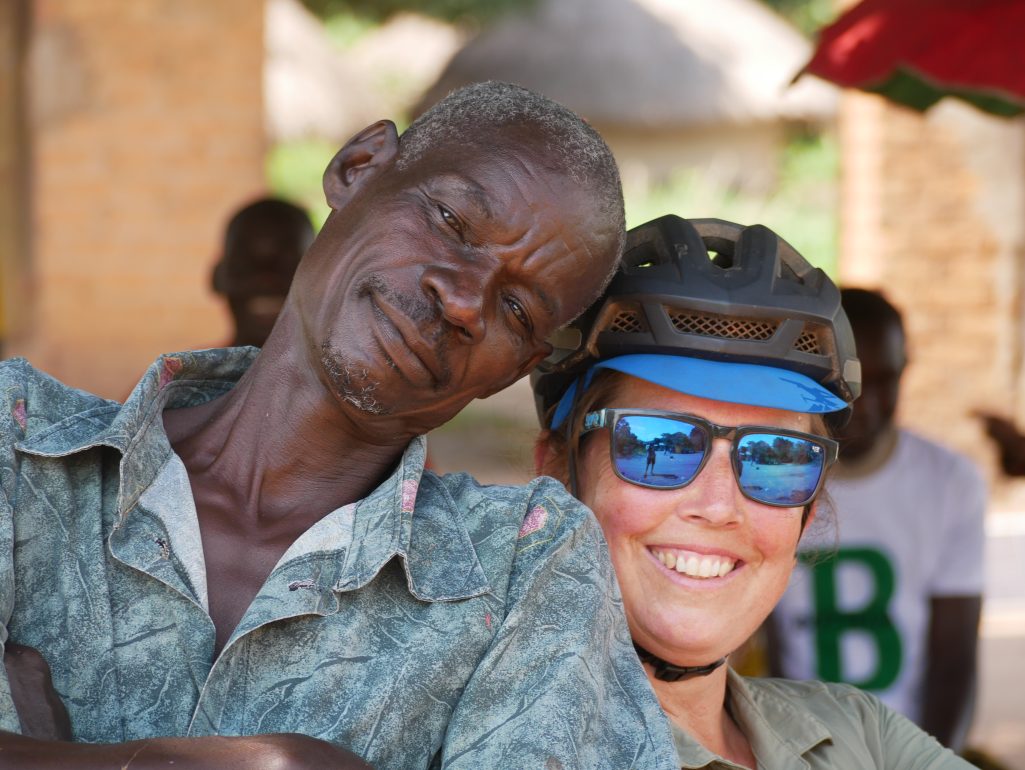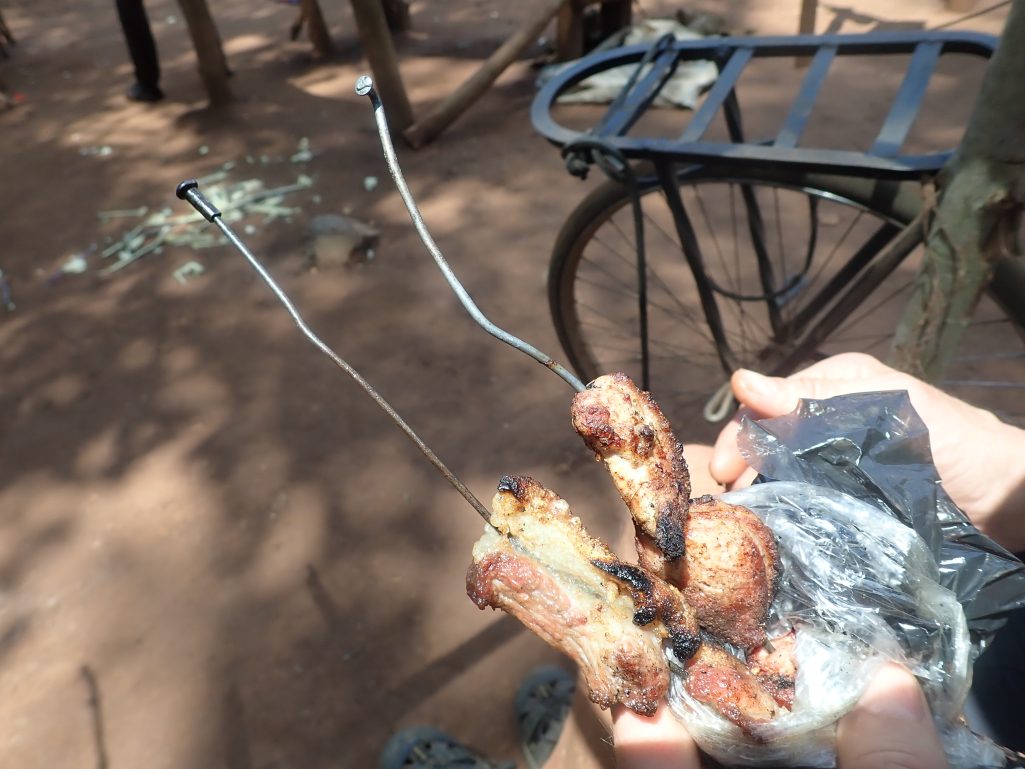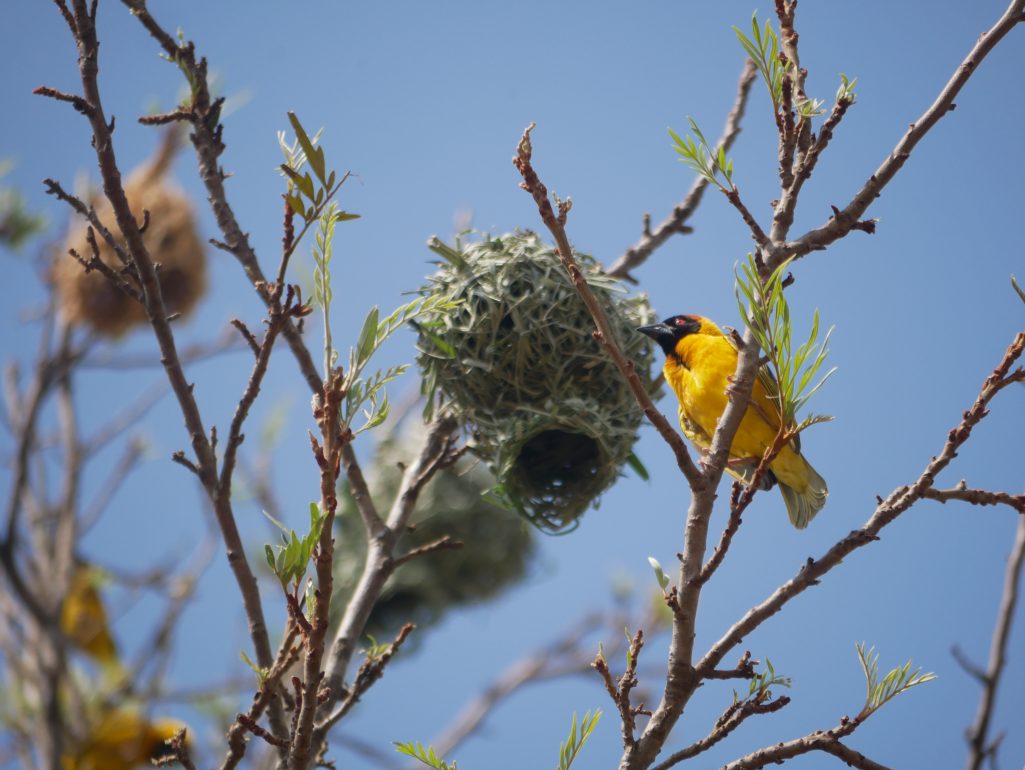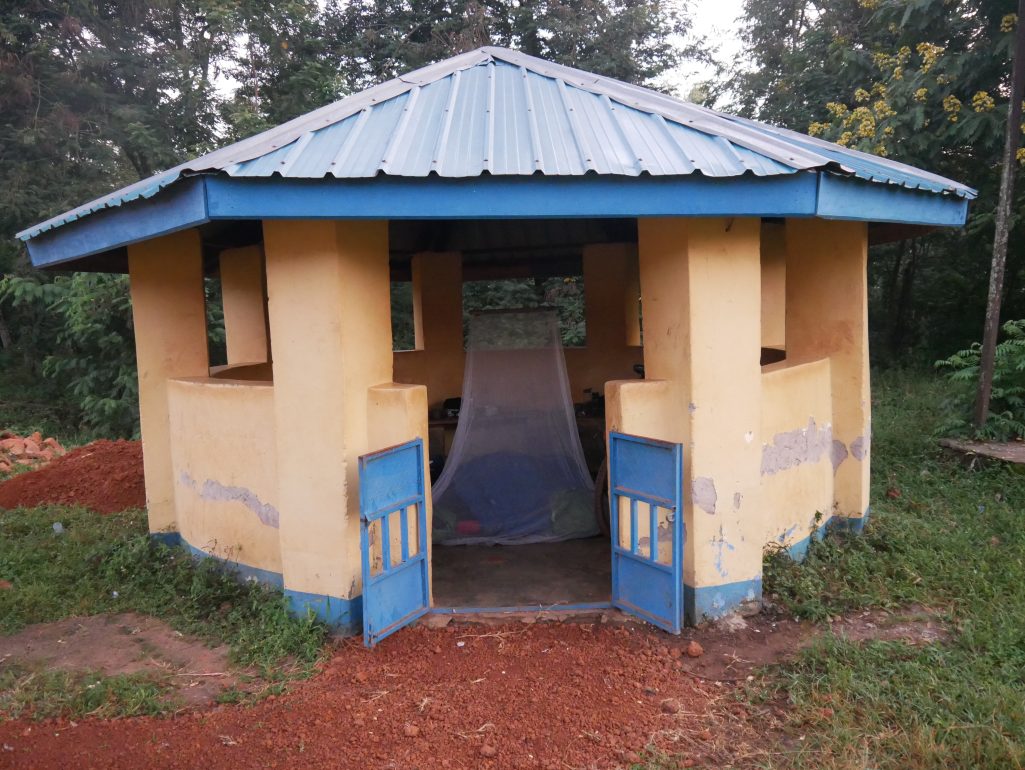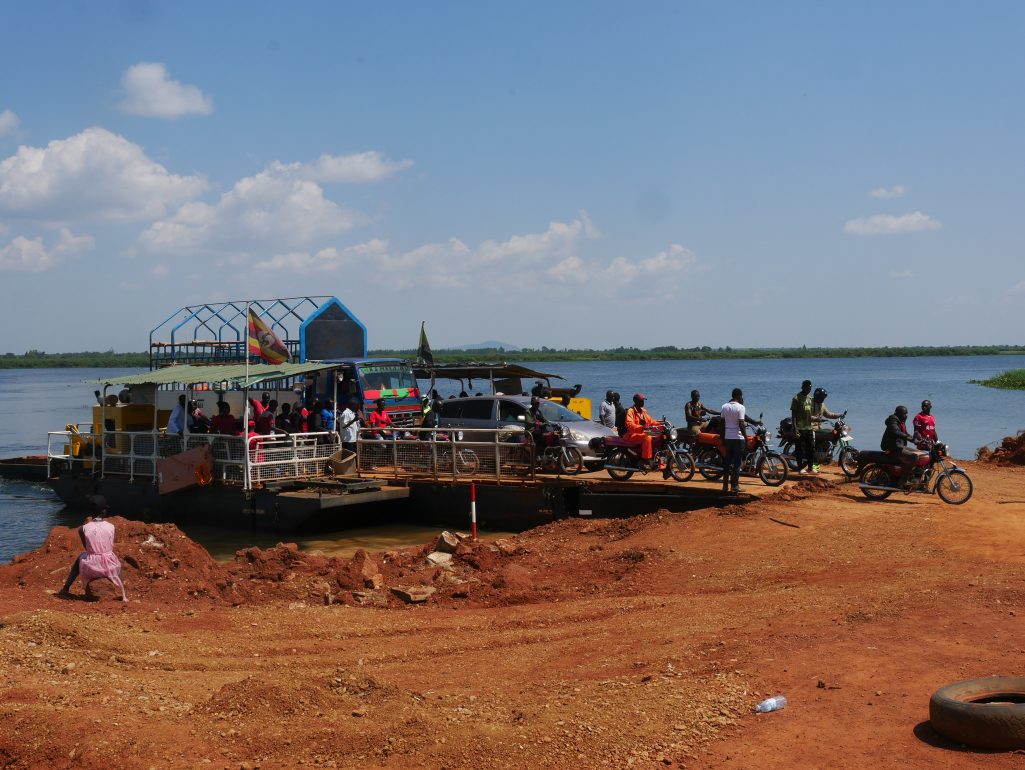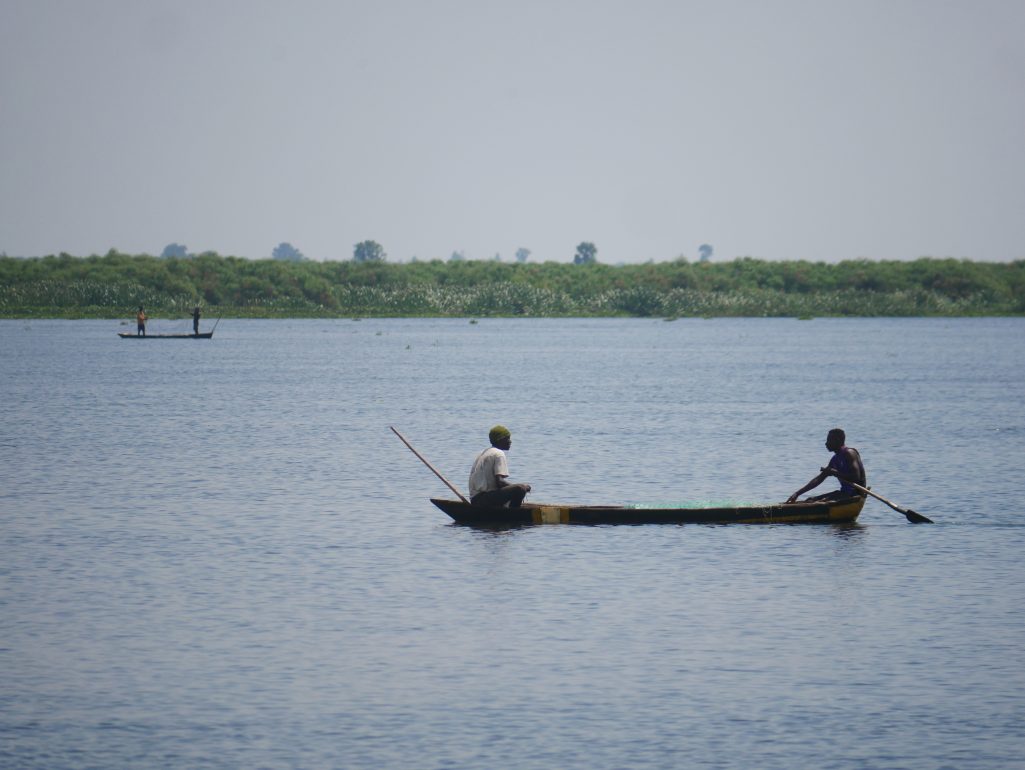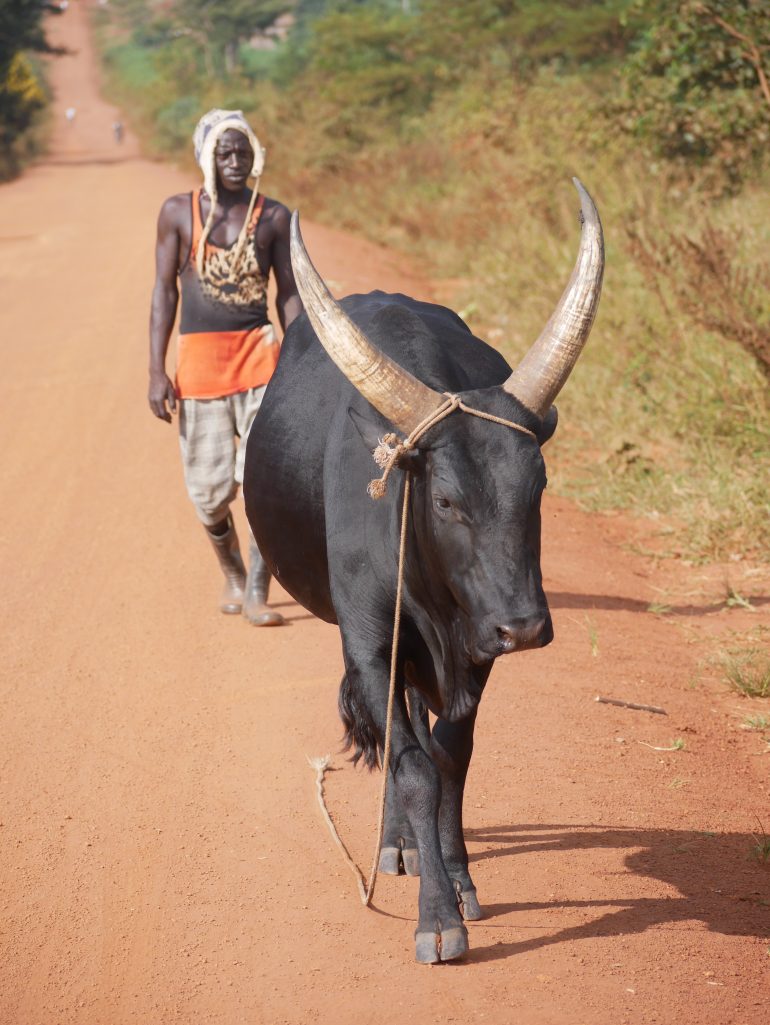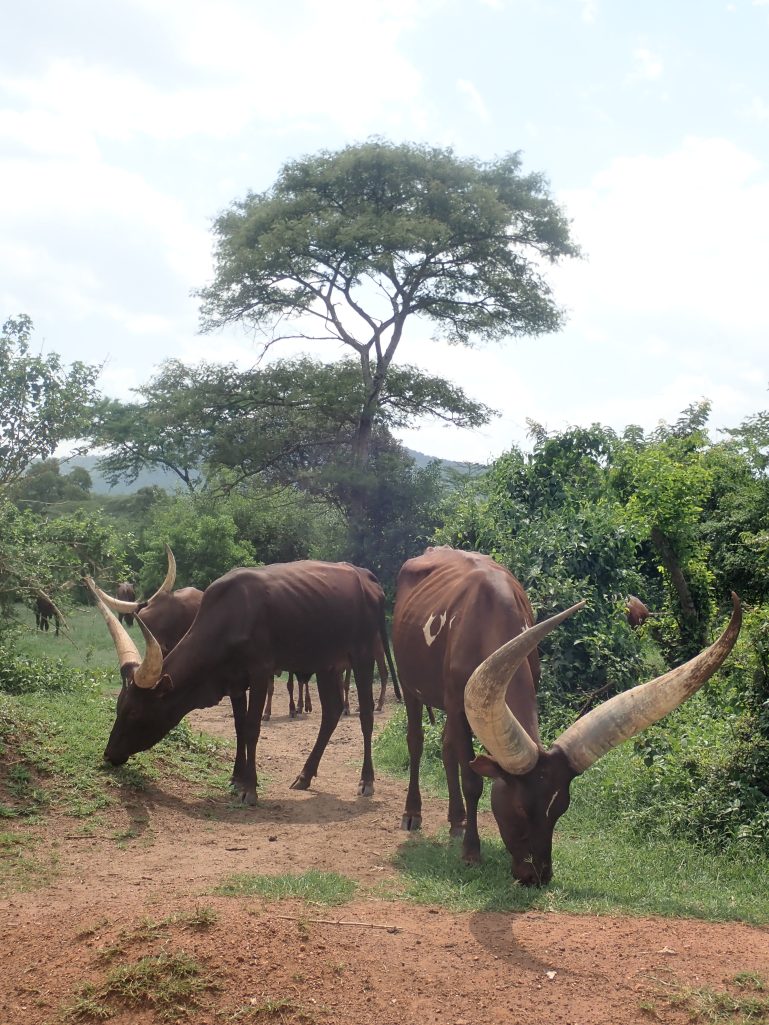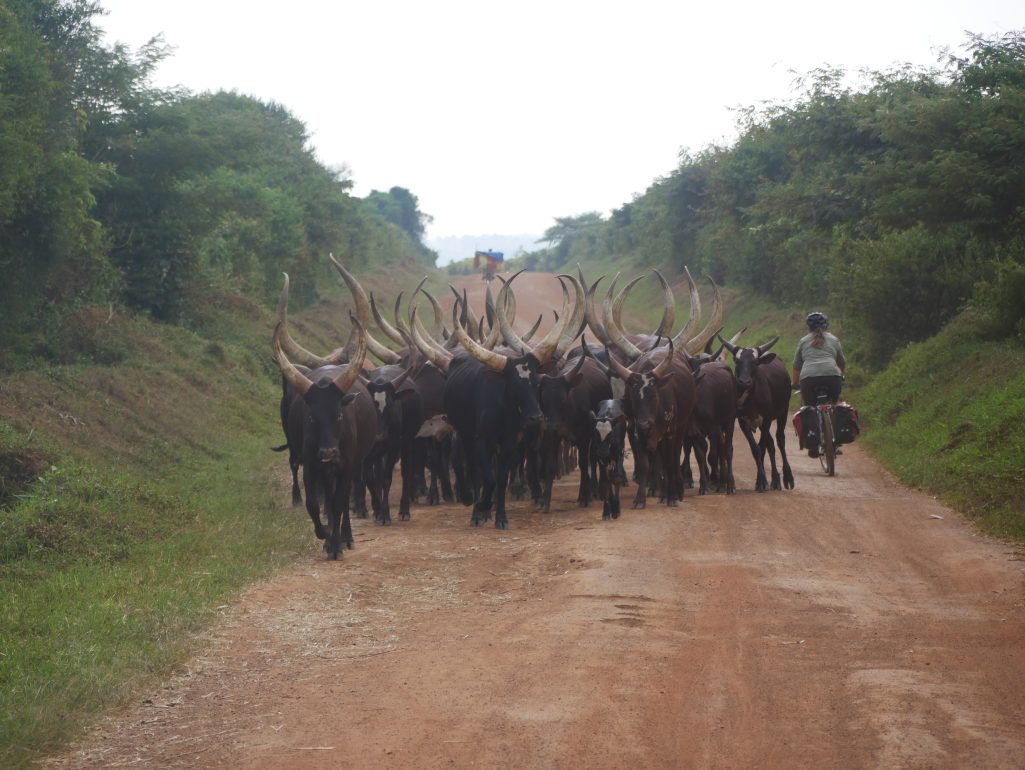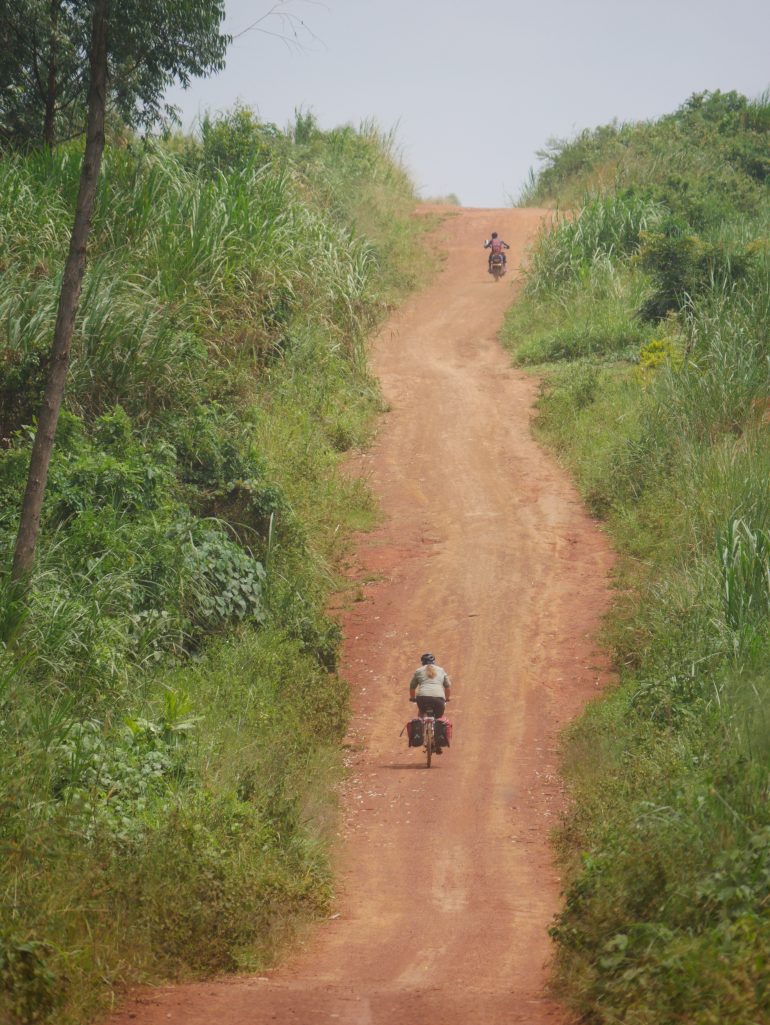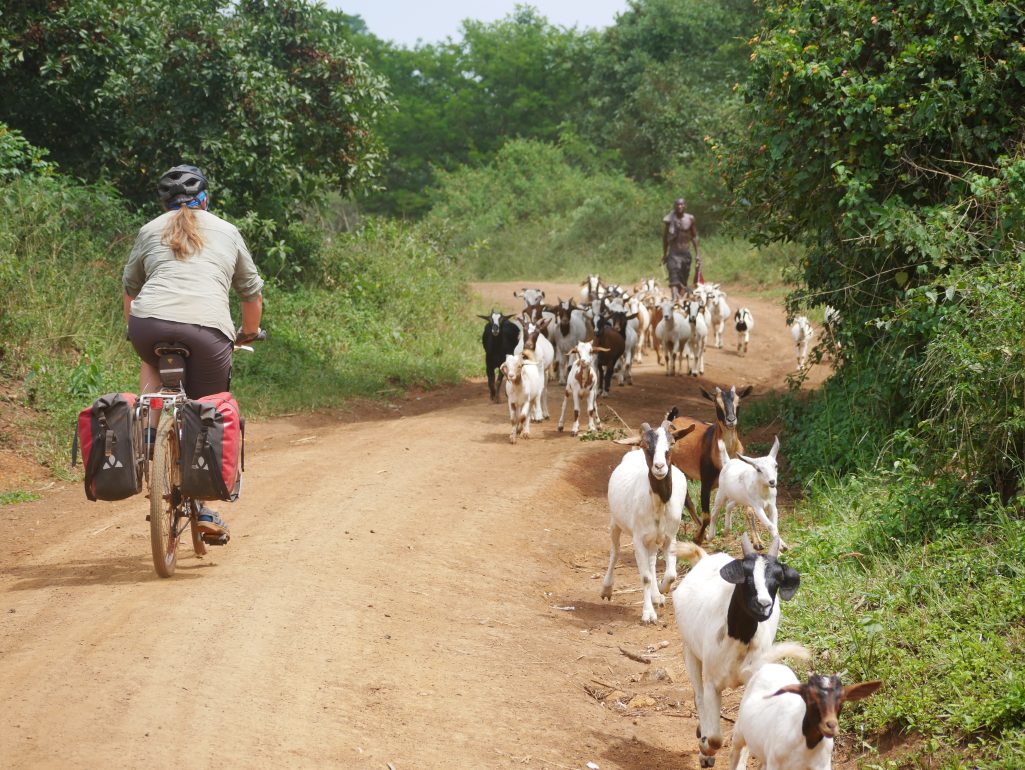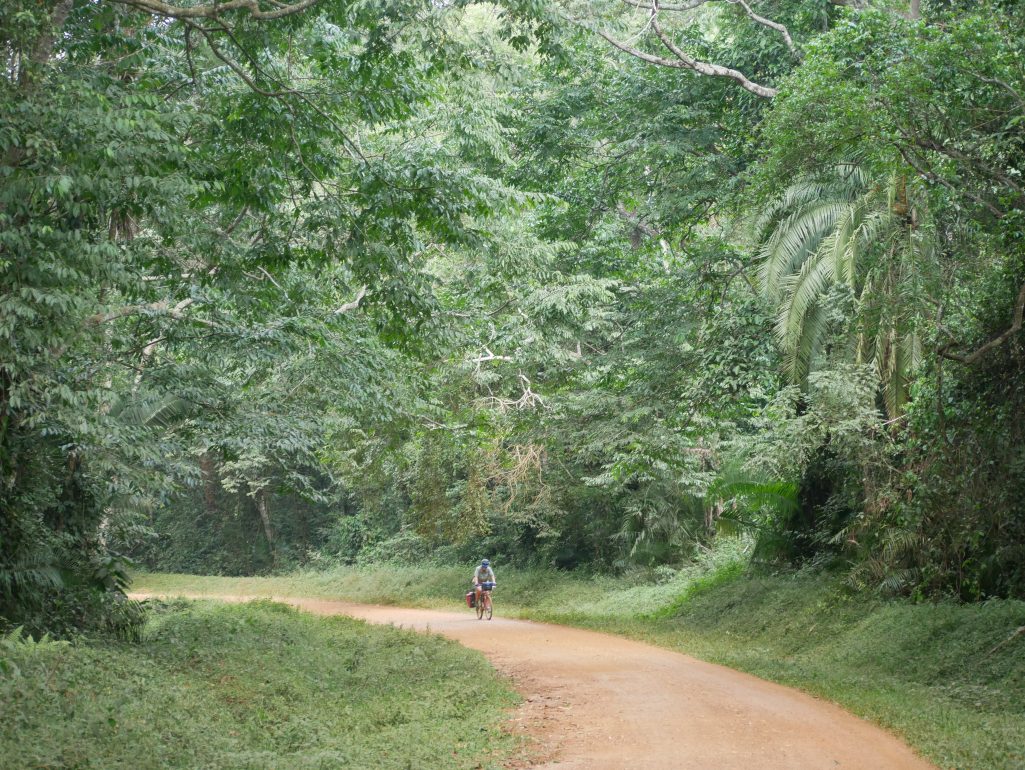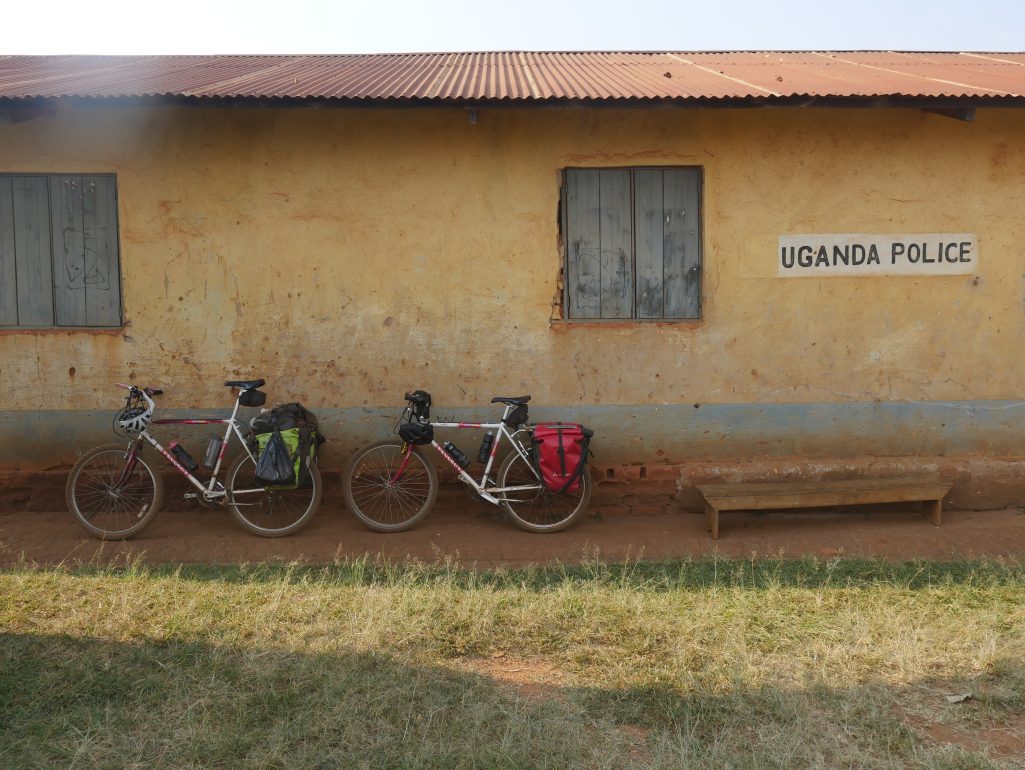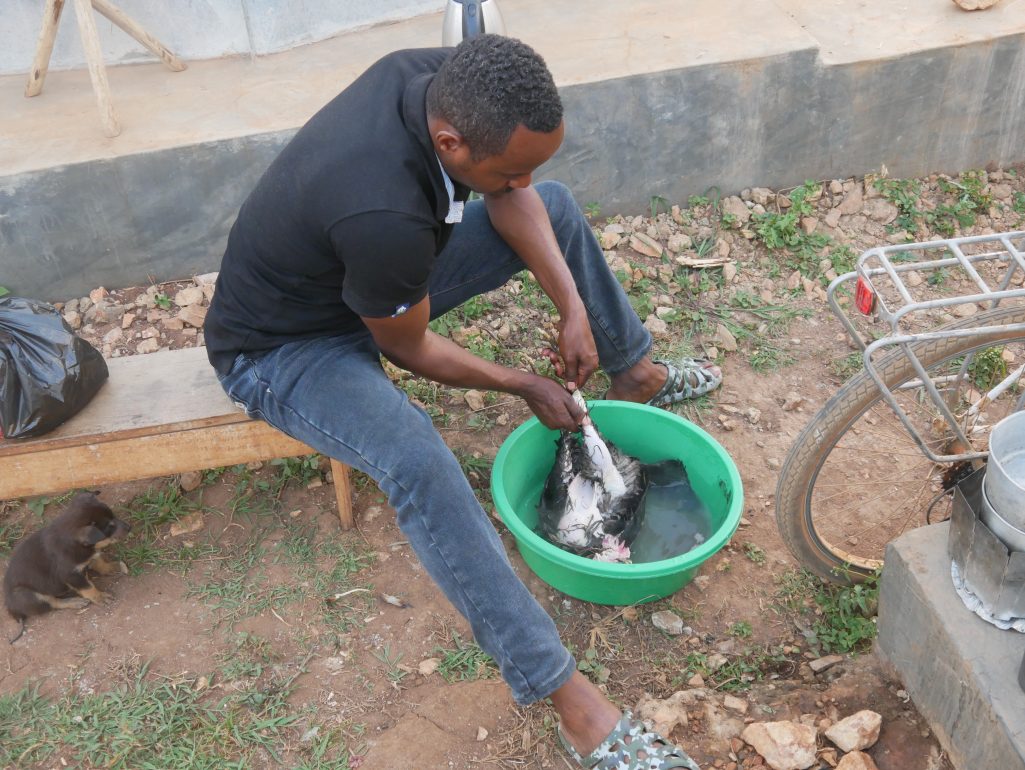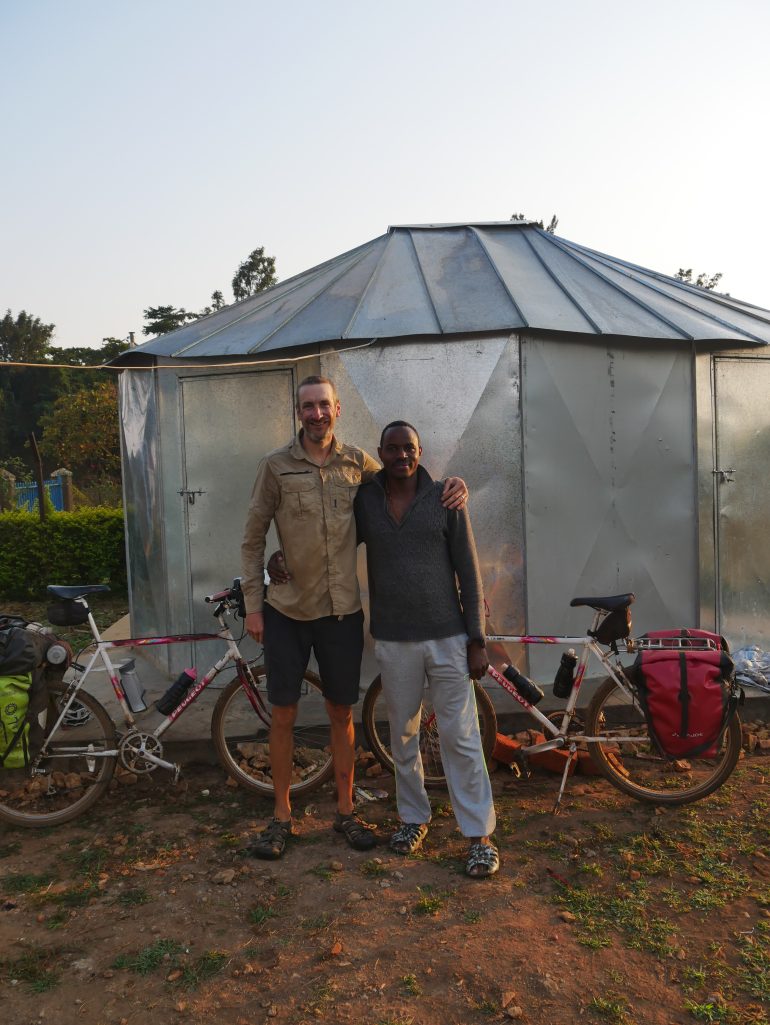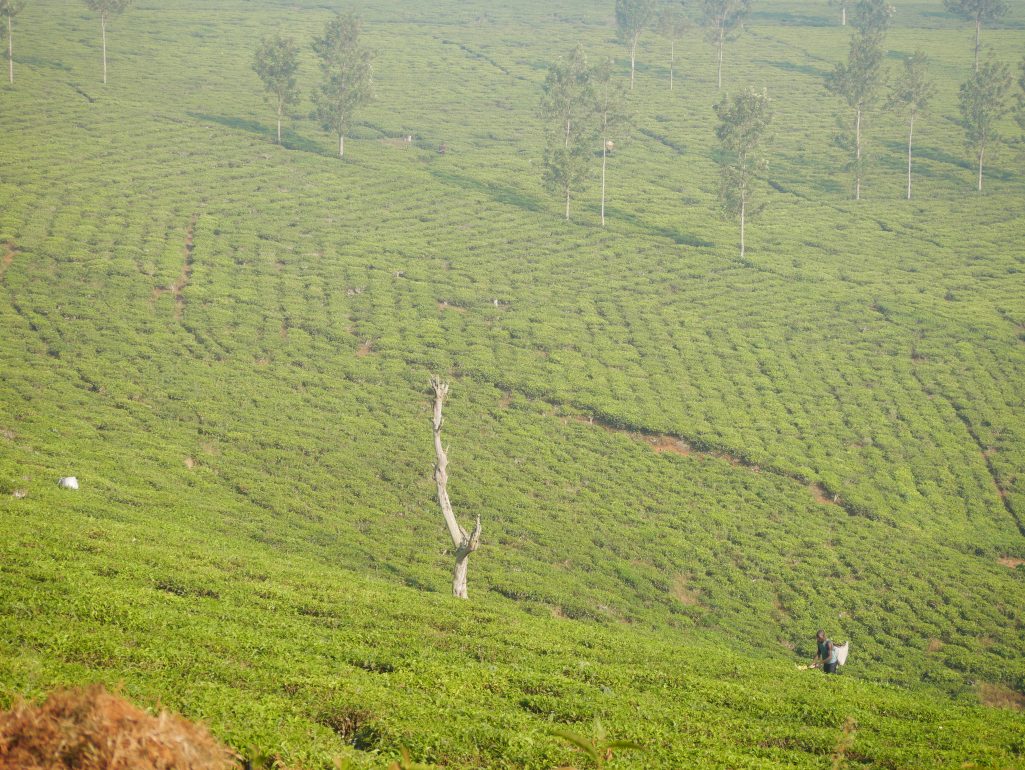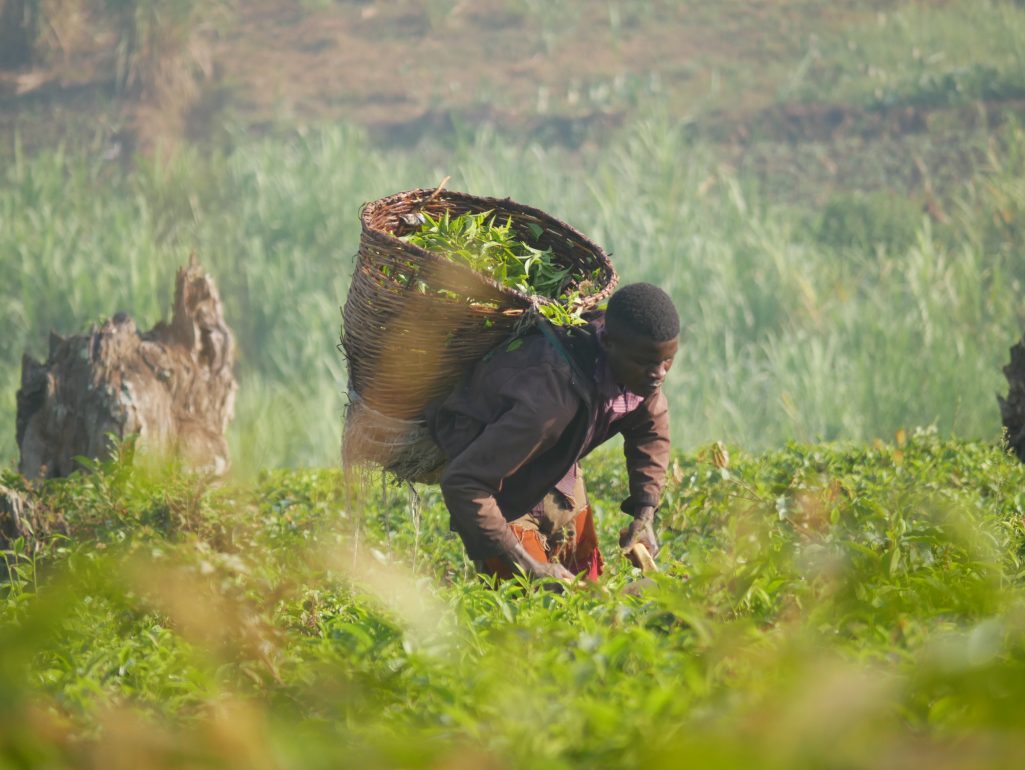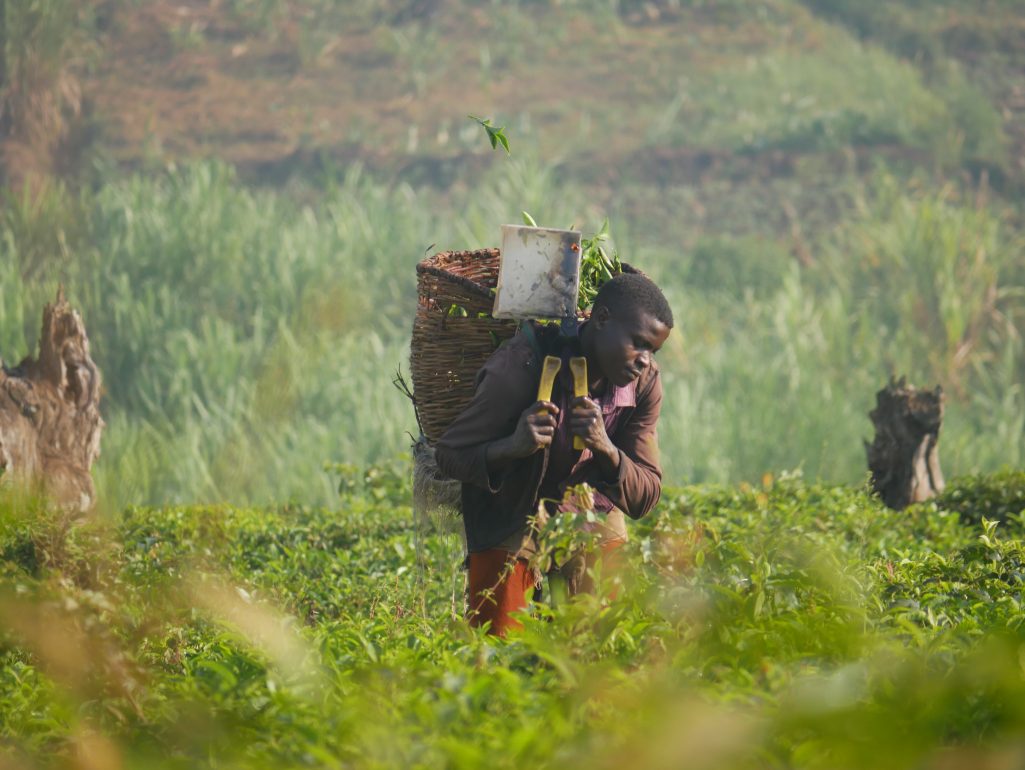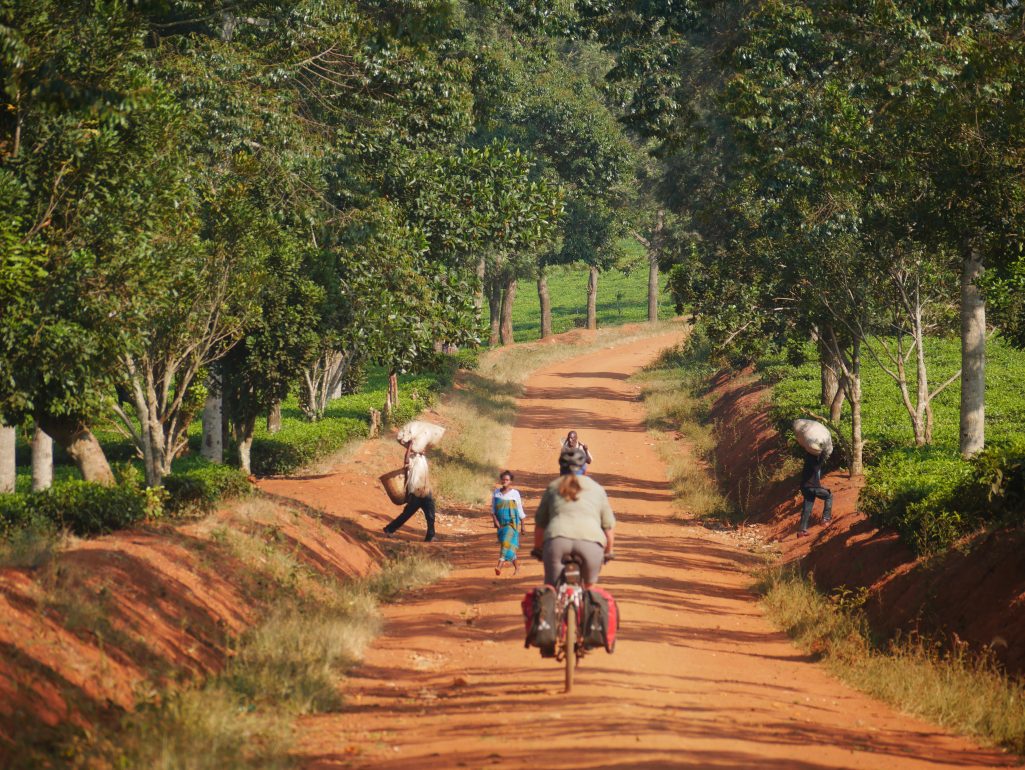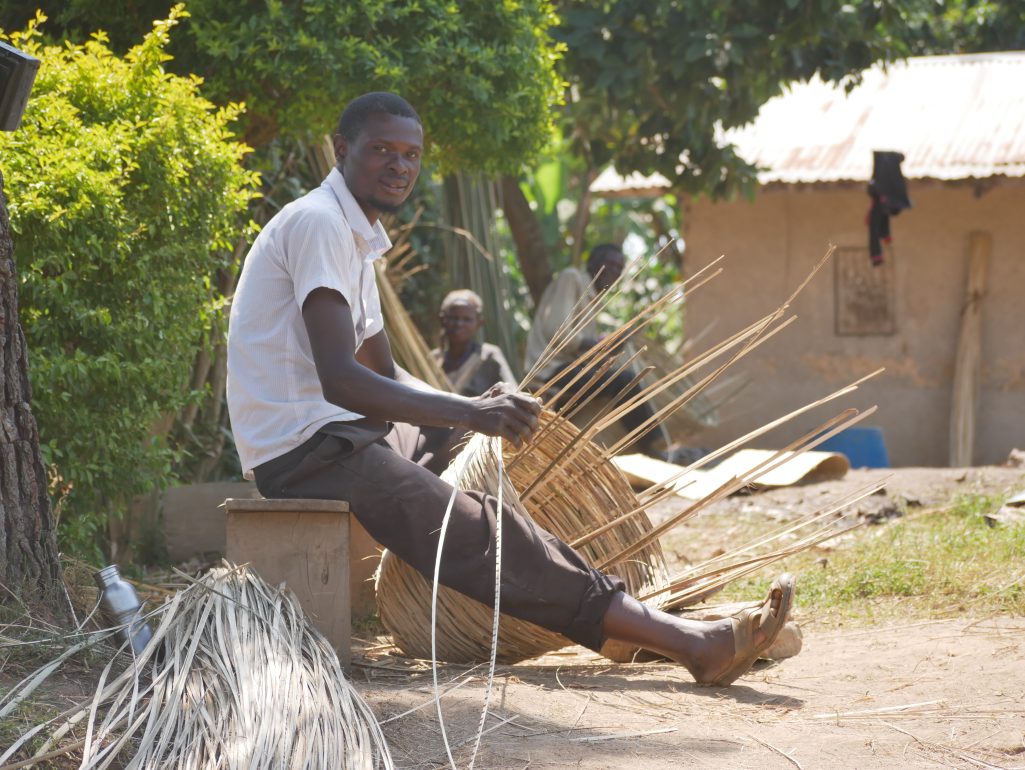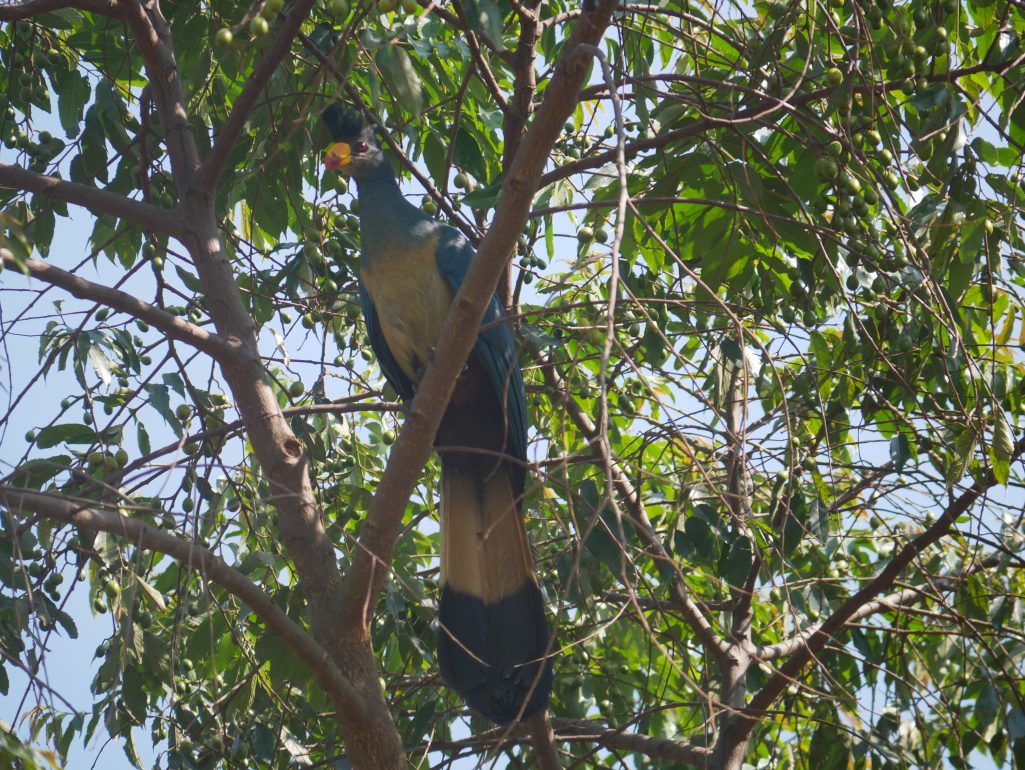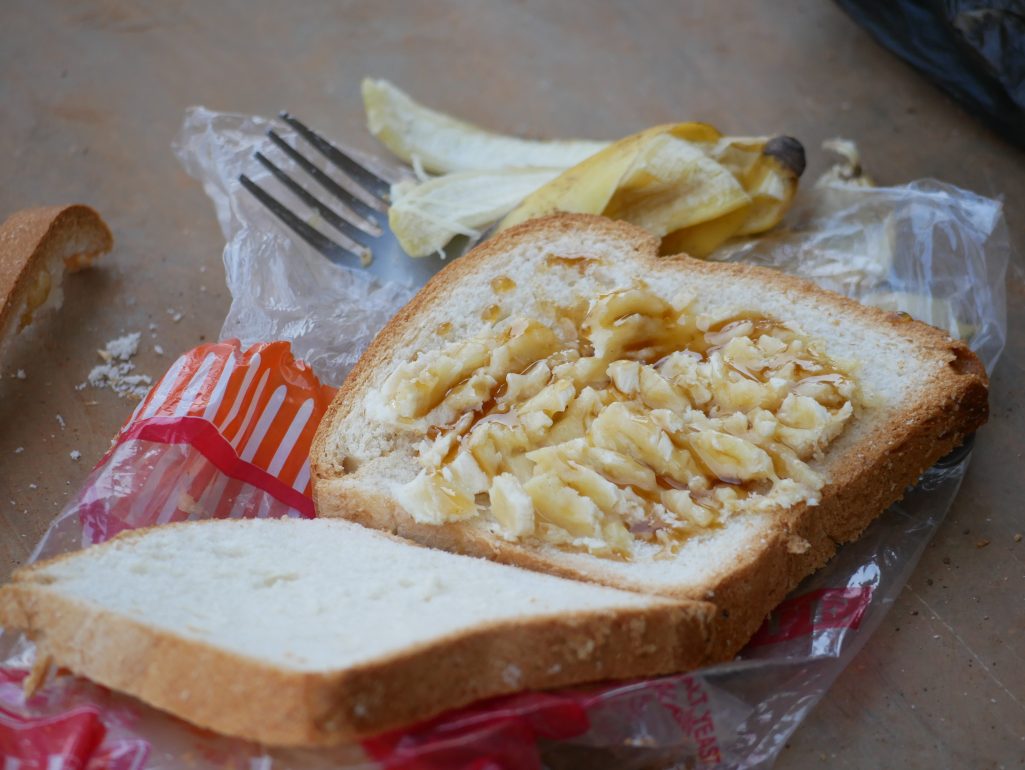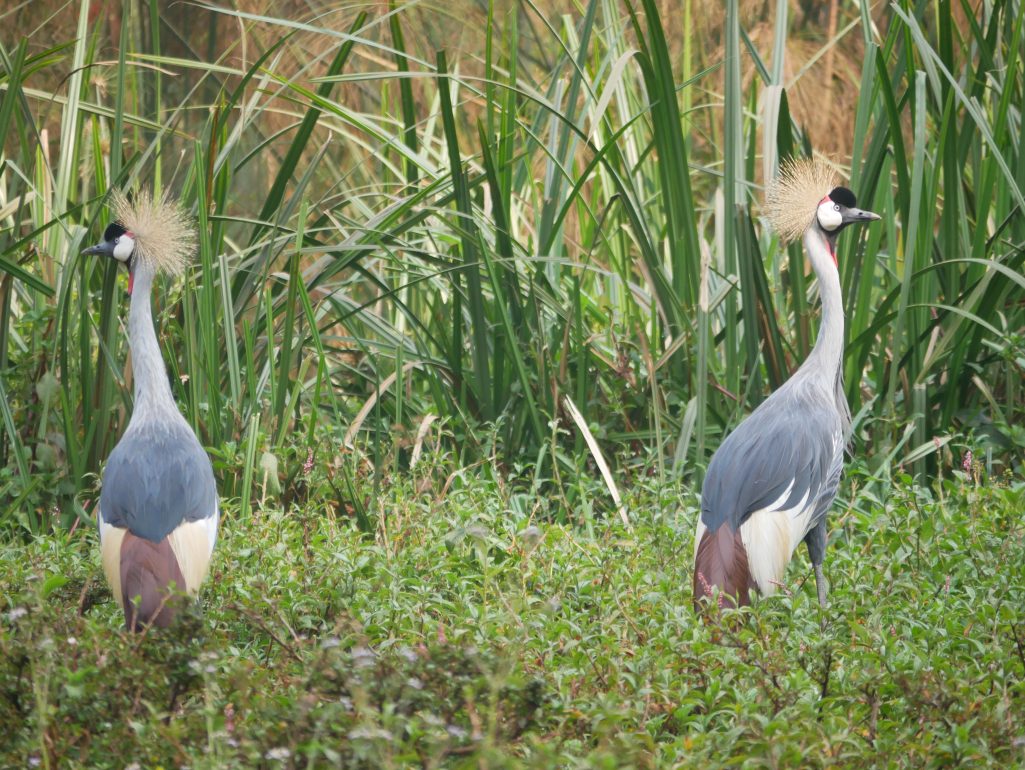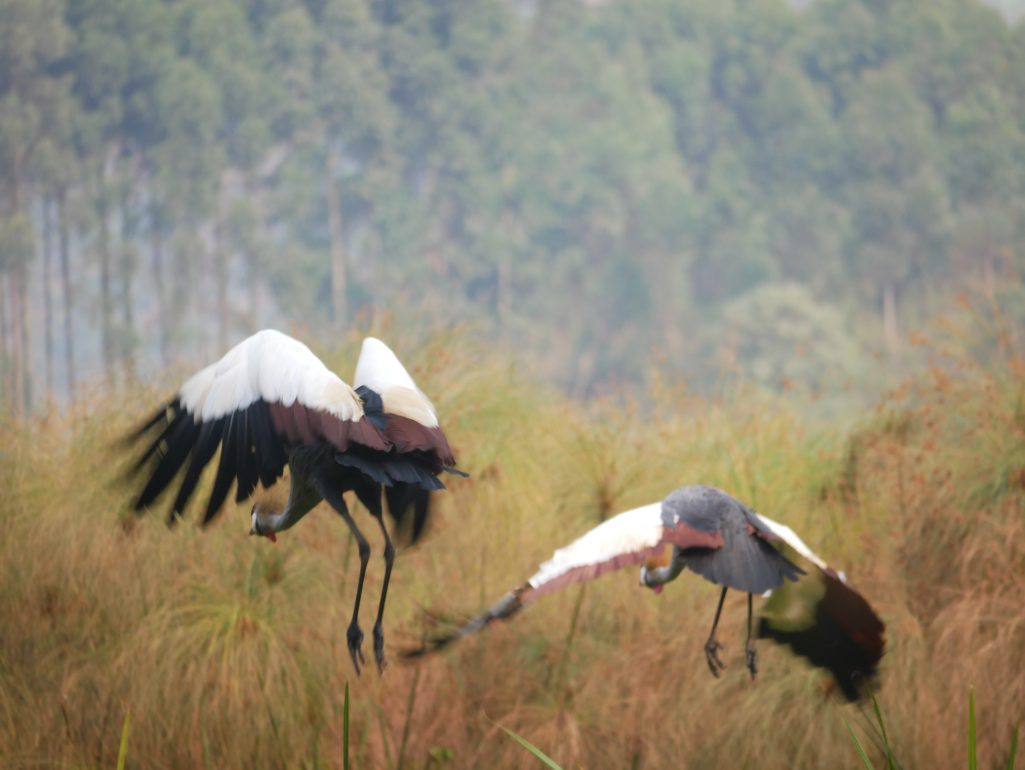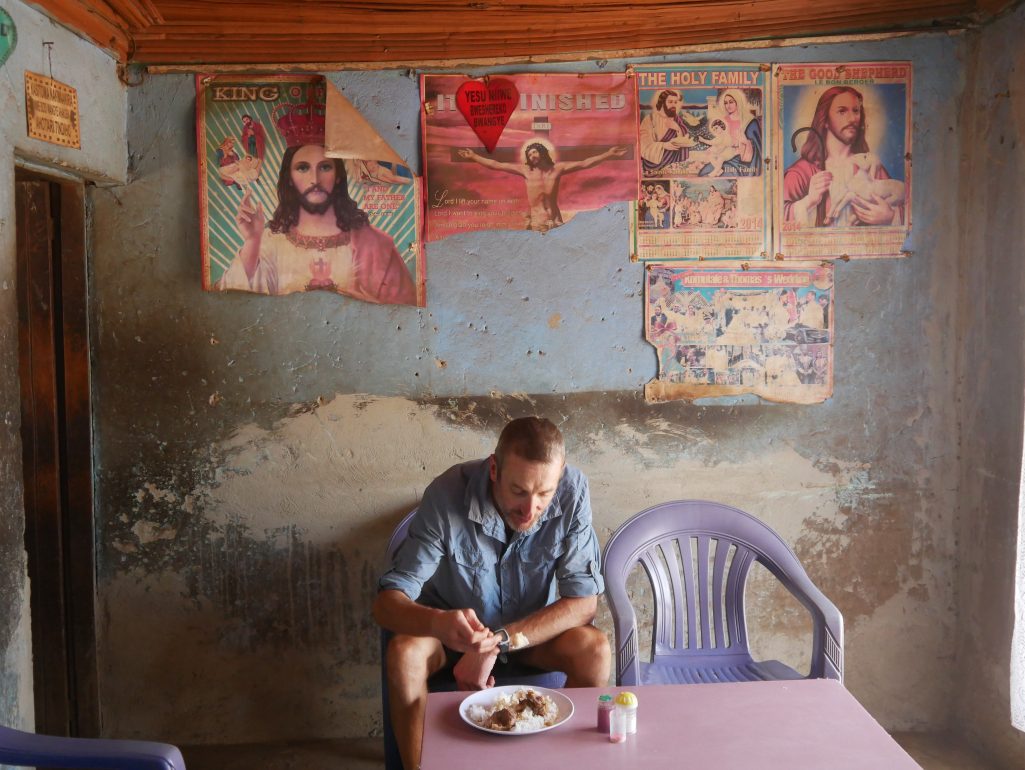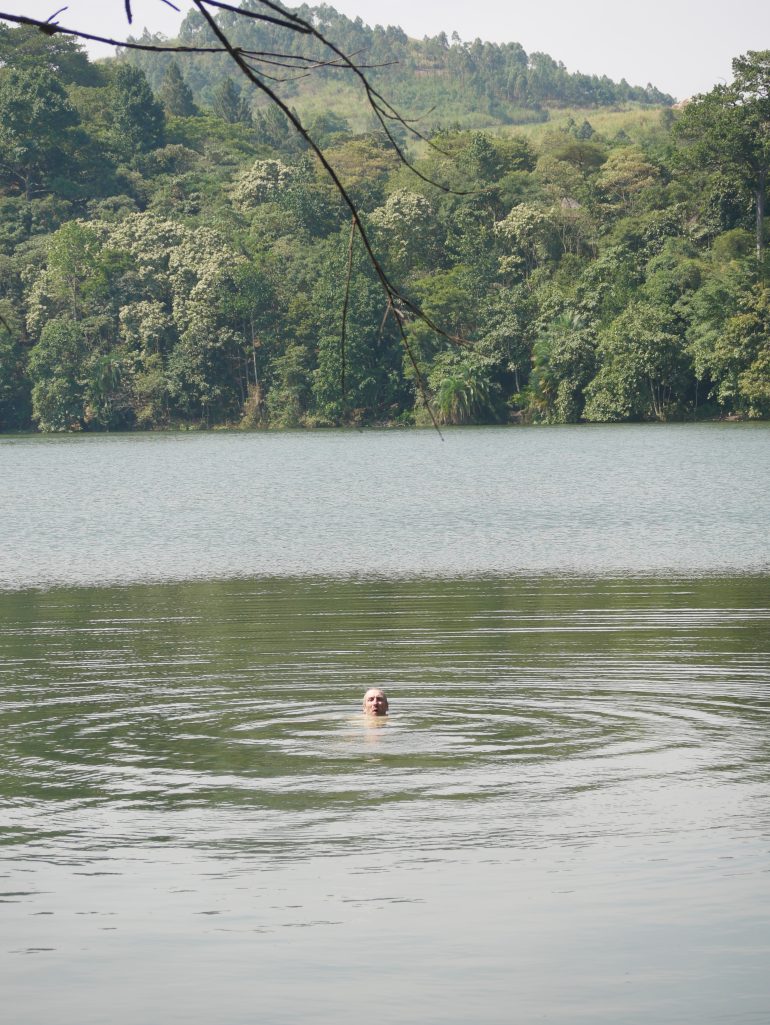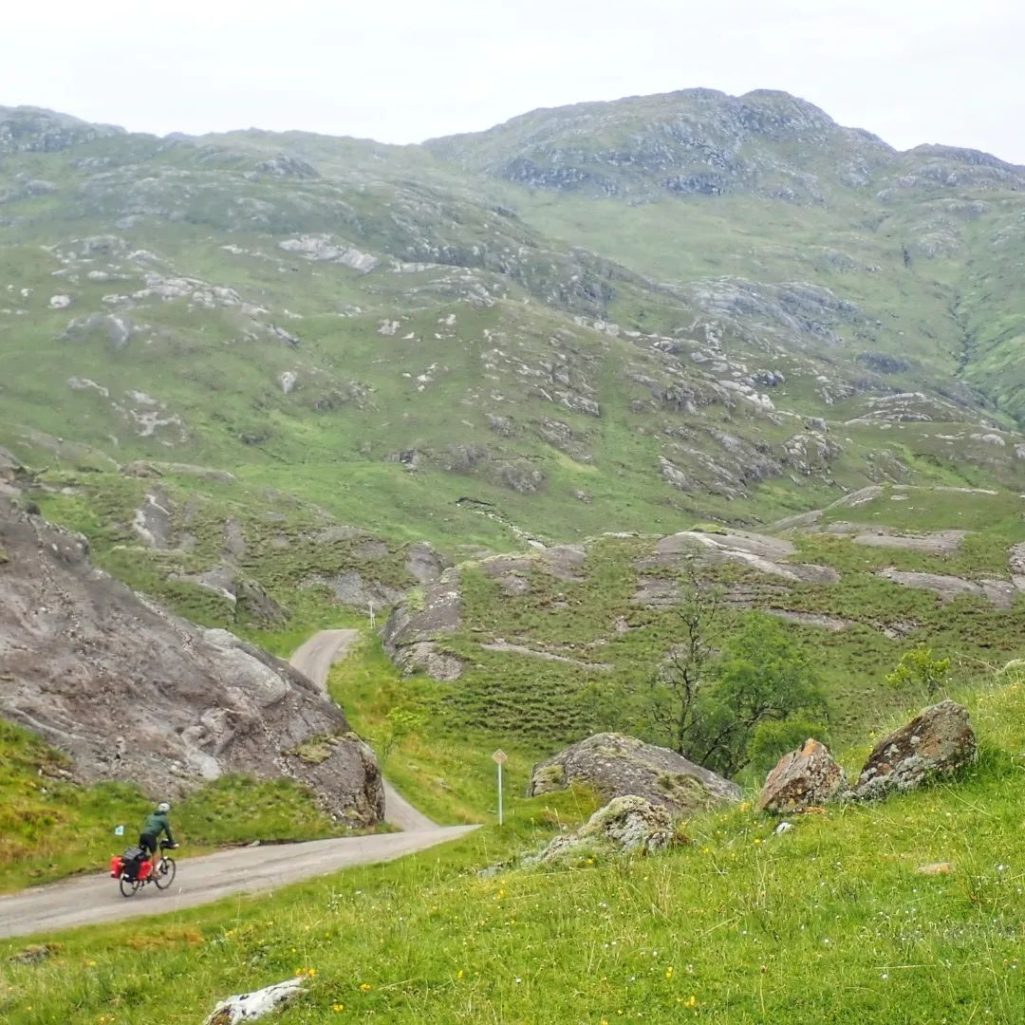Uganda Part 3 Lake Lyantonde to Kampala

23rd July to 8th August 2023
We head for the hills. A jagged outline fills the horizon through the hazy morning air. In front of us the landscape is ruffled up like an unmade bed. This is going to be a tough day.
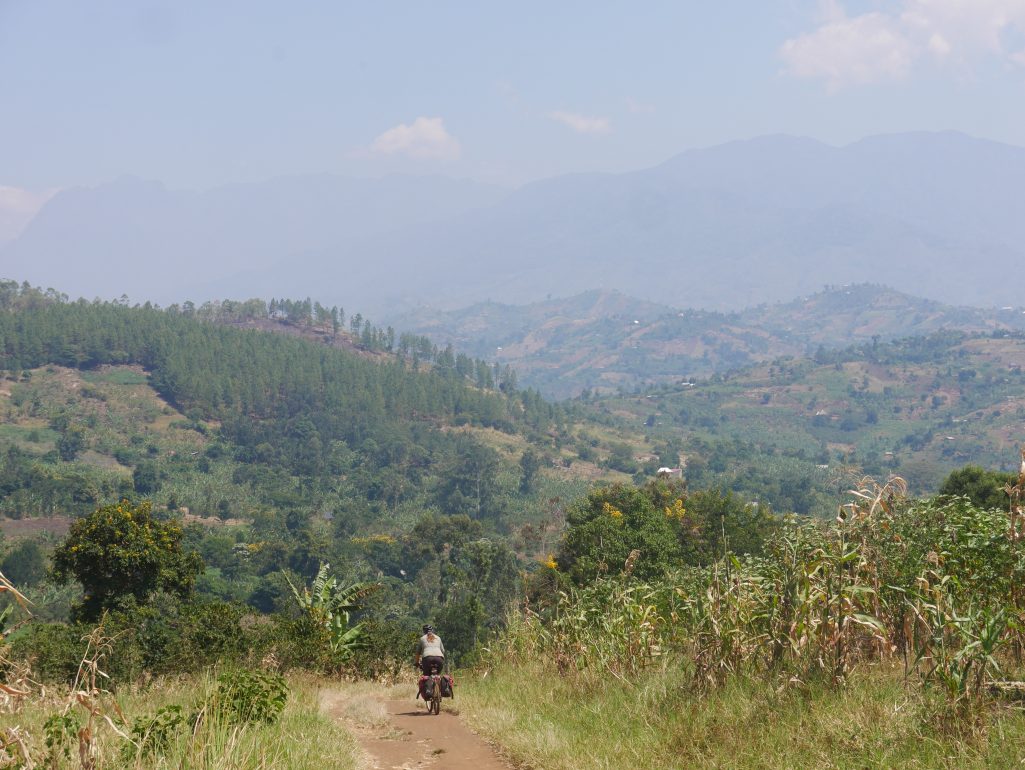
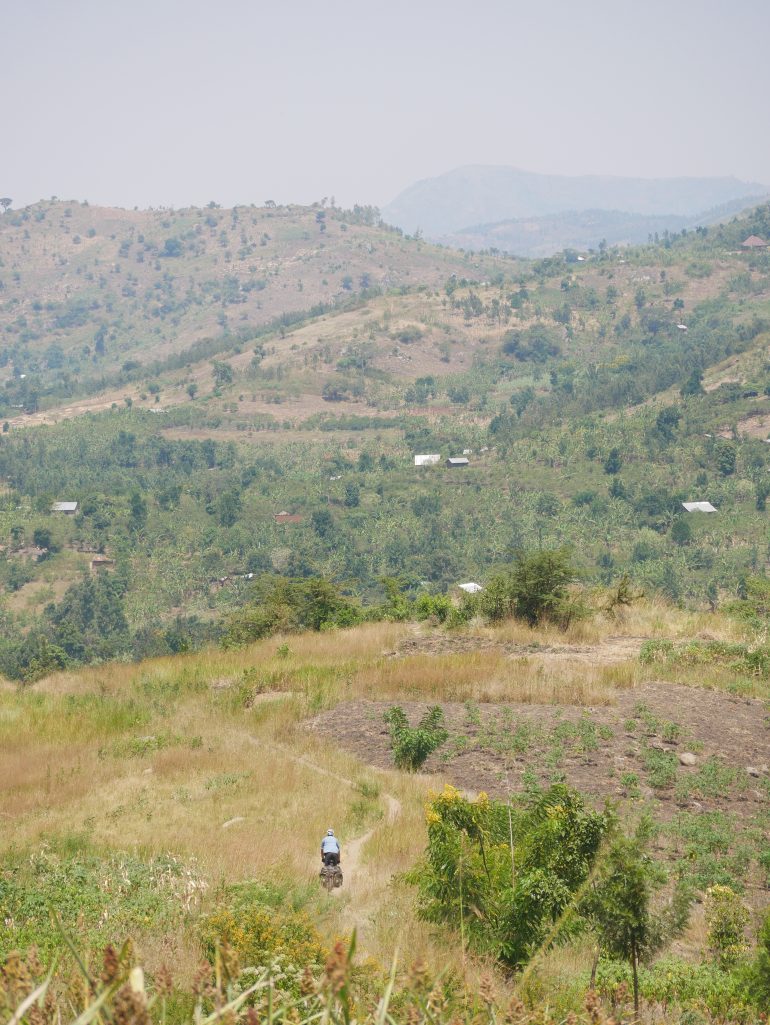
The Trans-Uganda route that we are following steers us off the tarmac and onto a narrow, dirt singletrack that quickly points to the sky forcing us out of the saddle and using our full weight on the pedals to haul our heavy bikes up the steep gradients until we are forced to dismount and push. There is a brief respite at the top with a section of descent. A double edged sword as we know we’ll have to regain the altitude we’d just lost with interest. Repeat until fade
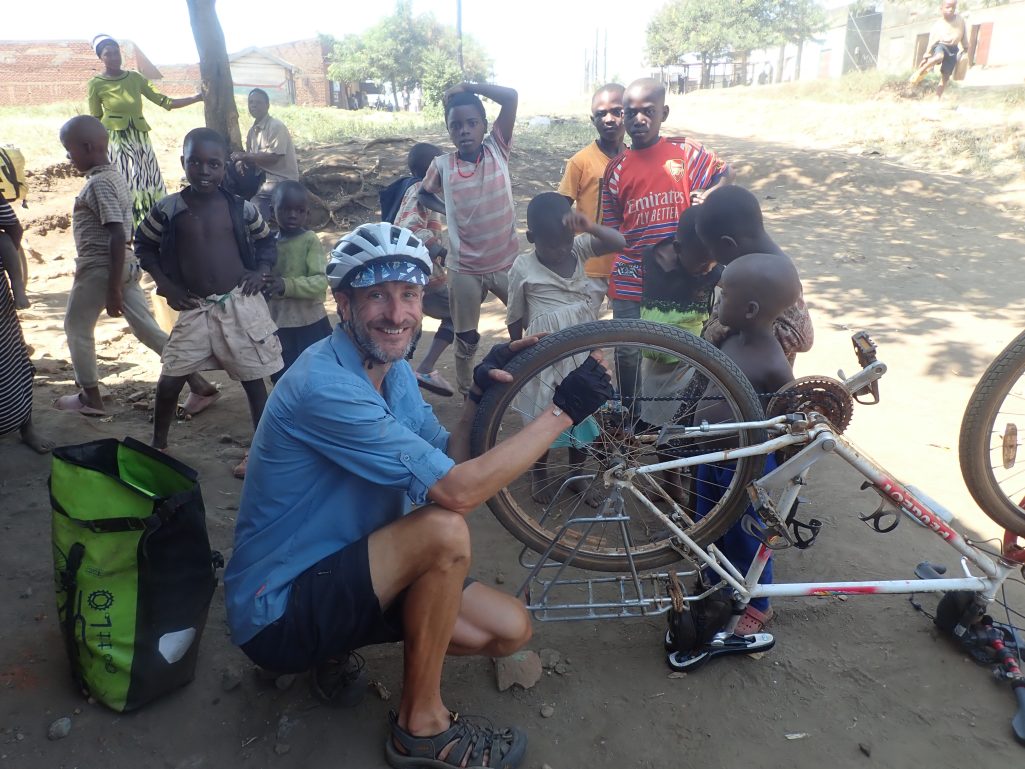
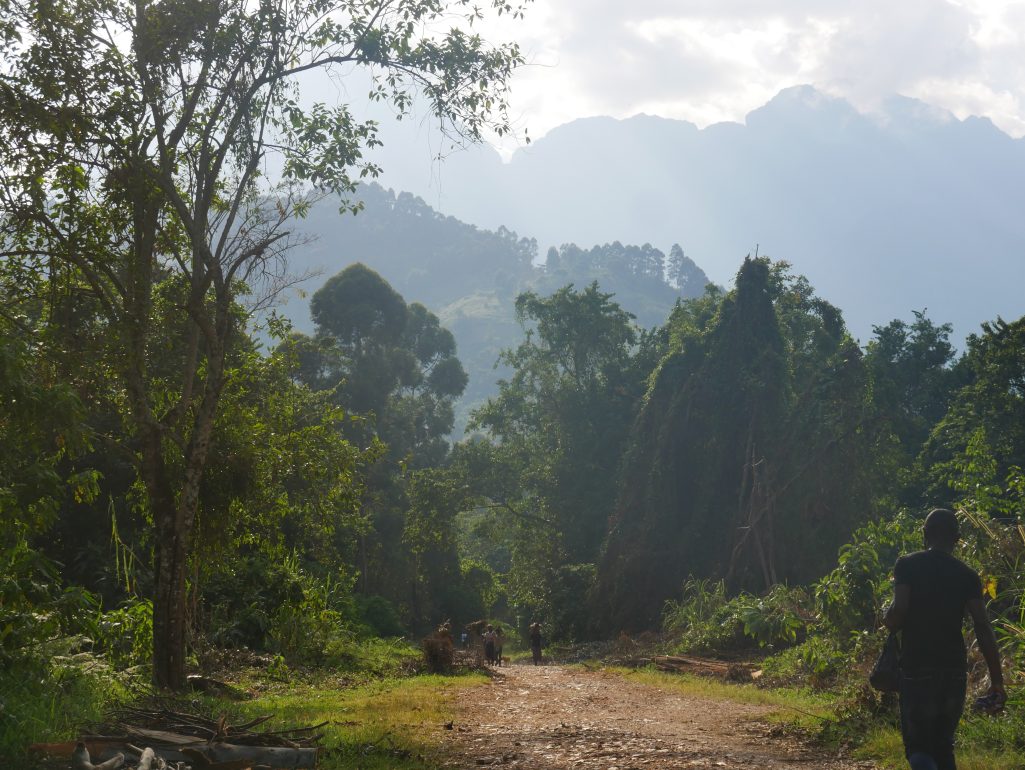
Eventually we arrive at our destination, an eco lodge high up in the Rwenzori mountains where we can enjoy one of the hardest earned bottles of beer while admiring one of the most wonderful views of the trip so far.
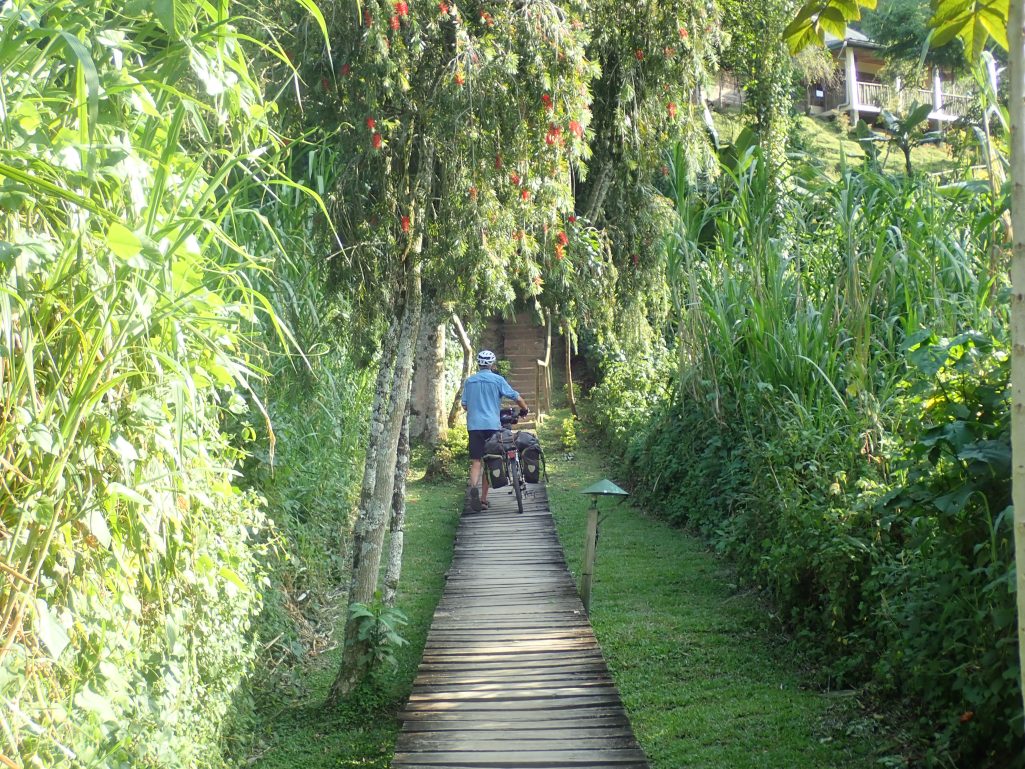
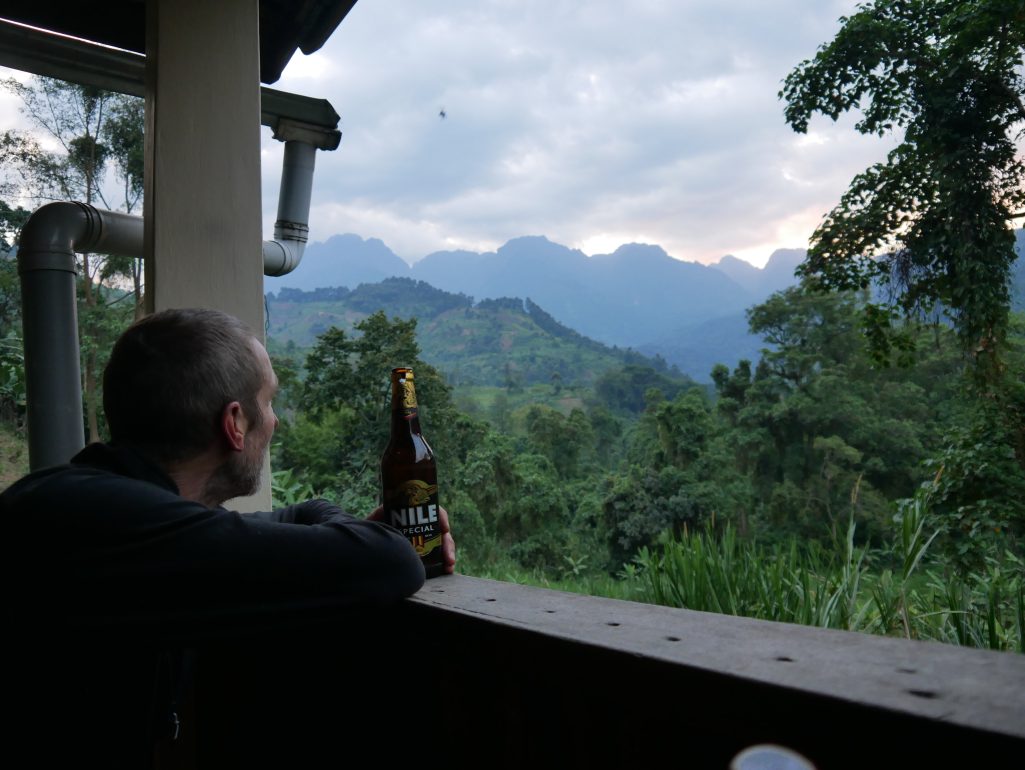
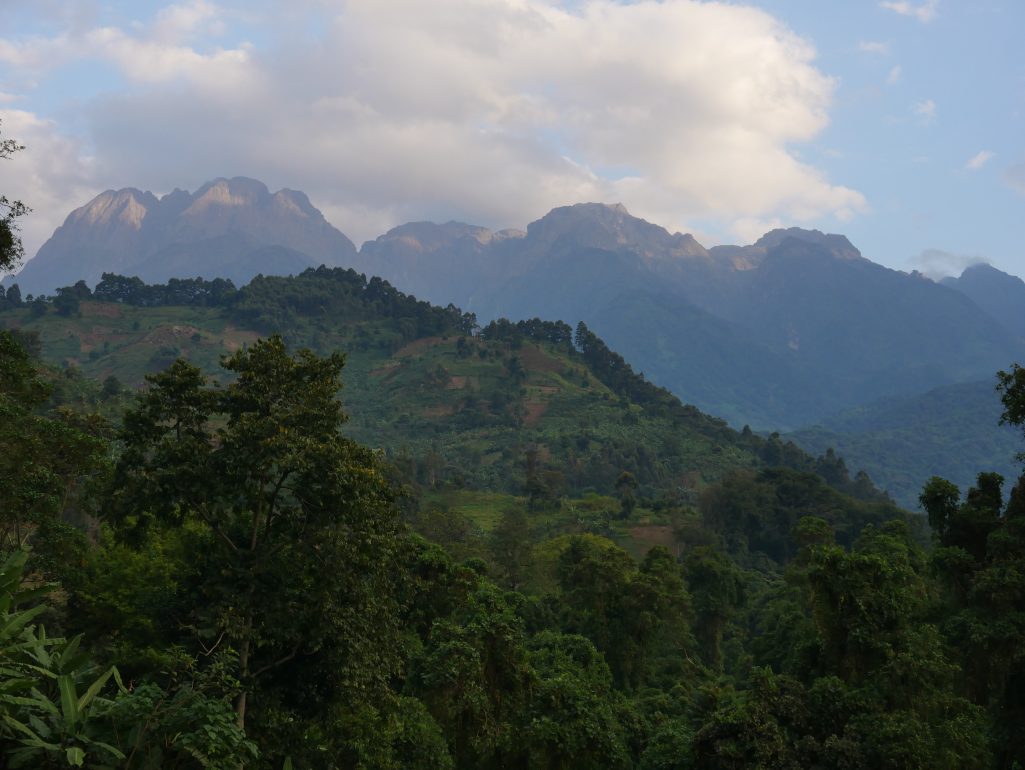
Surrounding us is dense forest and the next day we are led out into the trees by Chris, a local guide. As we pick our way along the mountainside Chris stops suddenly and points up at a branch “There! Do you see it?”. We squint and peer and try to follow where he’s looking but only see bark and leaves. “It’s a three horned chameleon!”. Eventually the tiny camouflaged creature comes into focus, but how Chris had spotted it can only be put down to black magic. We see plenty more before returning to the camp, but without Chris our chameleon count would have been precisely zero.
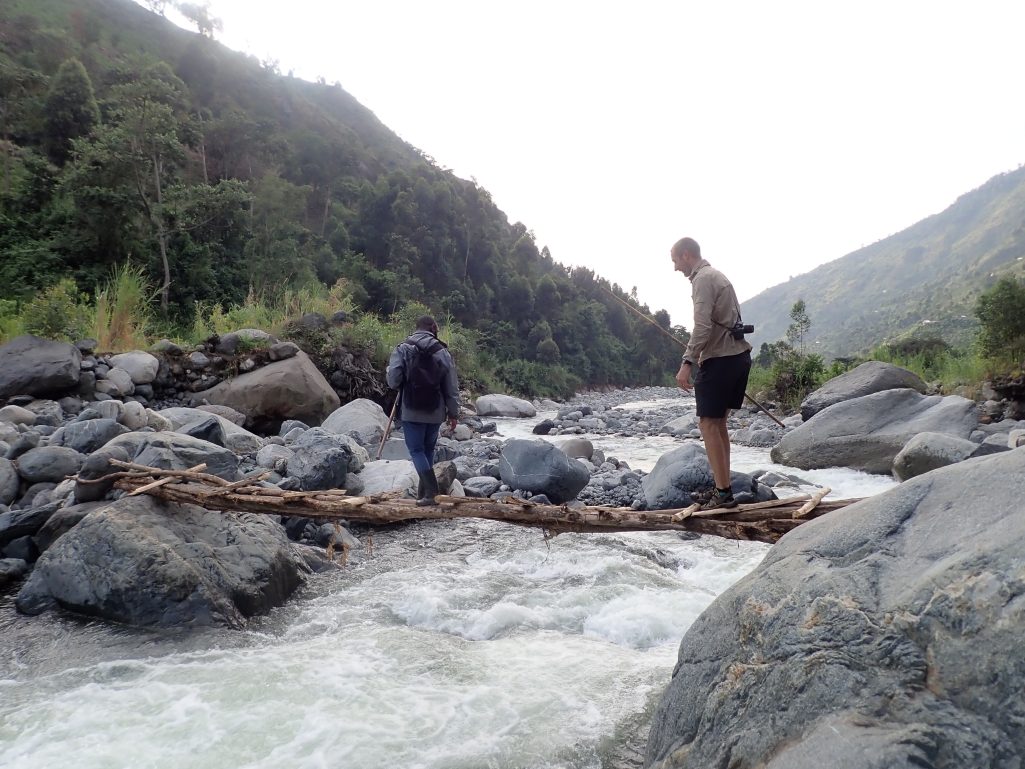
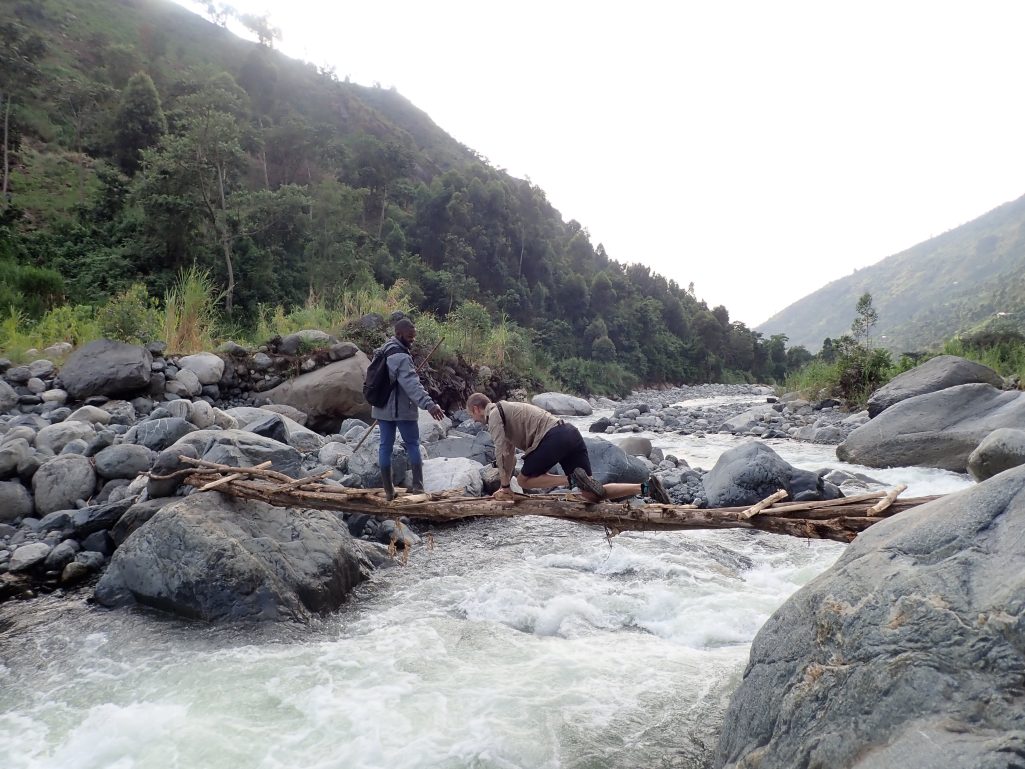
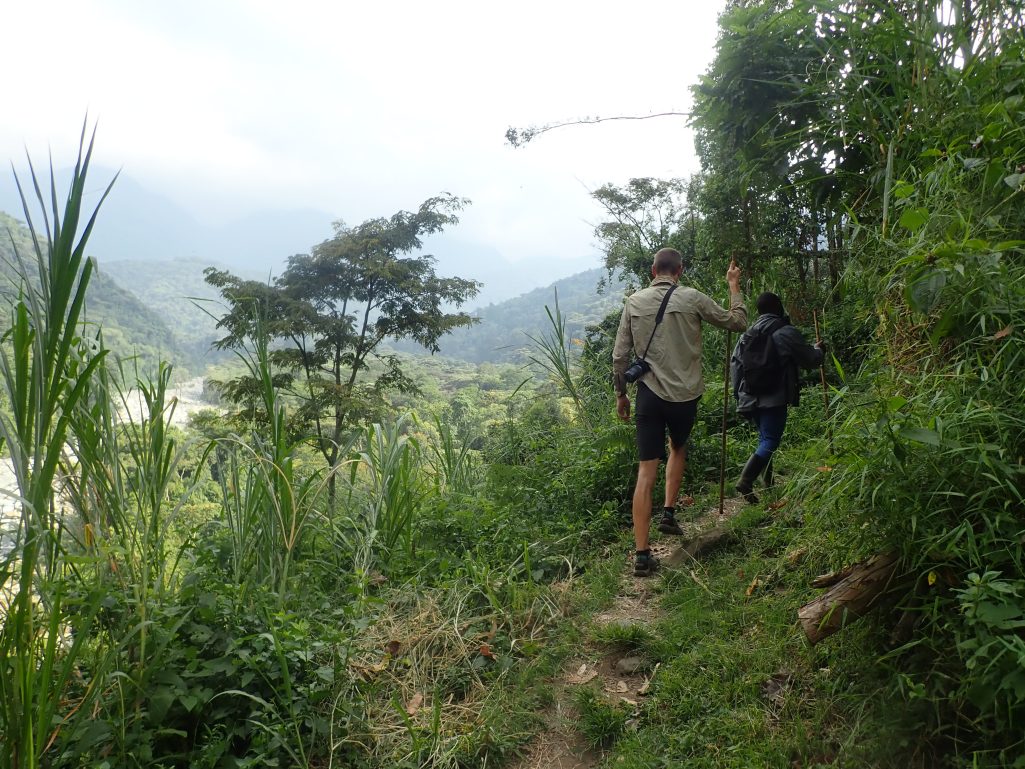
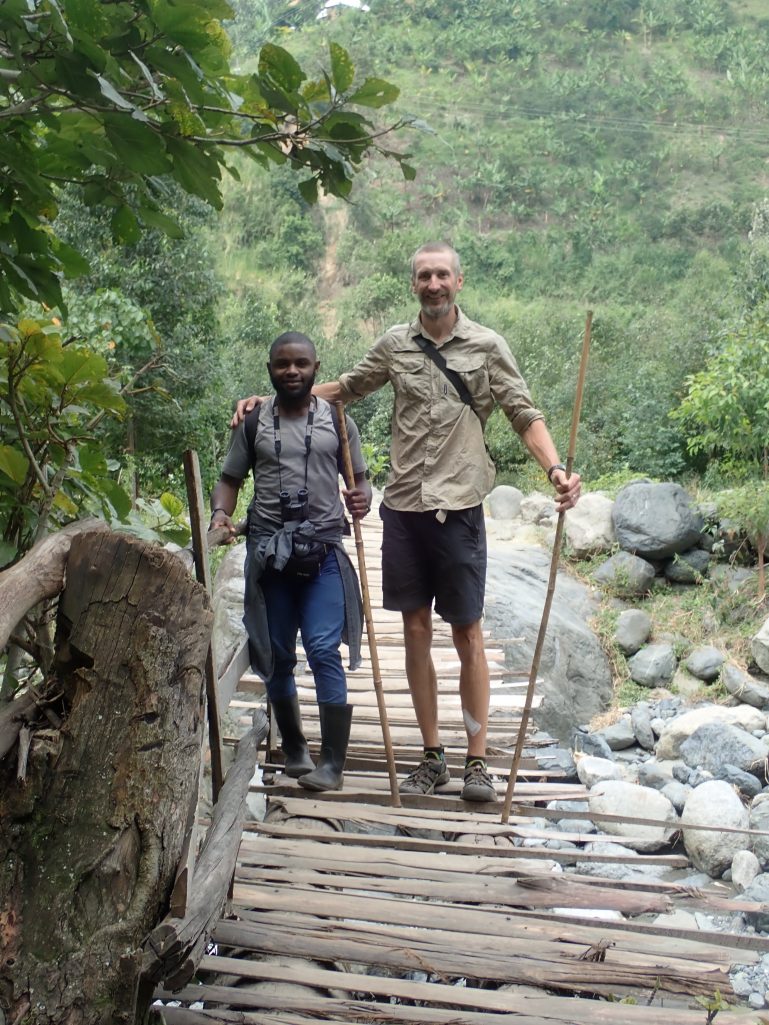
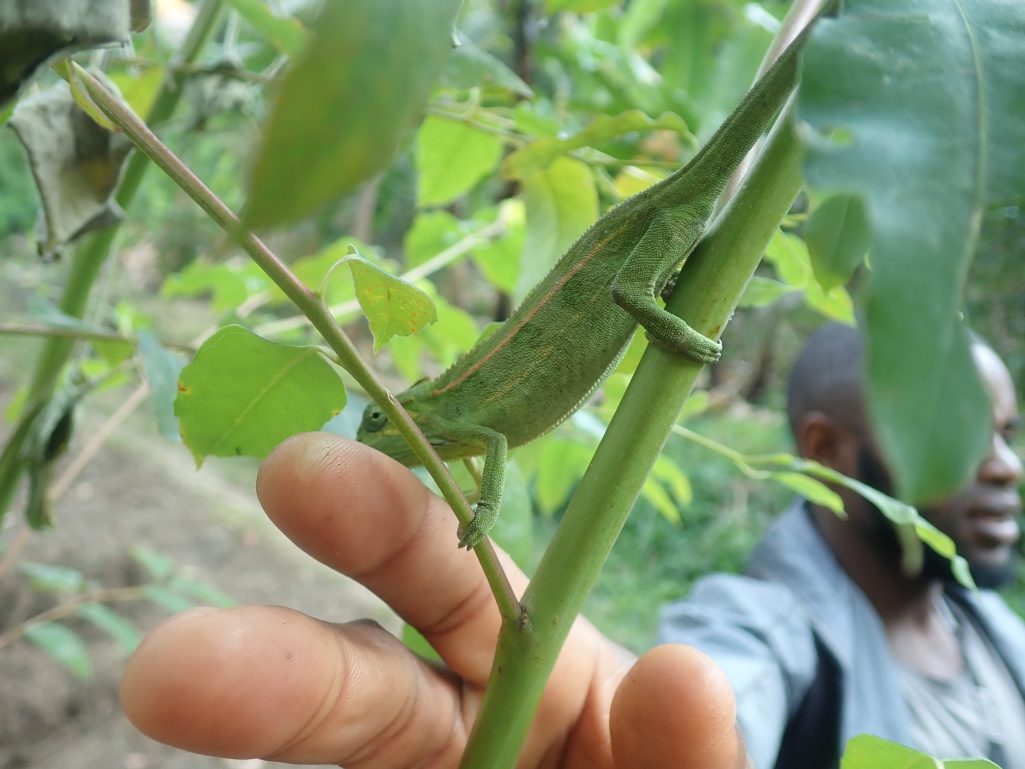
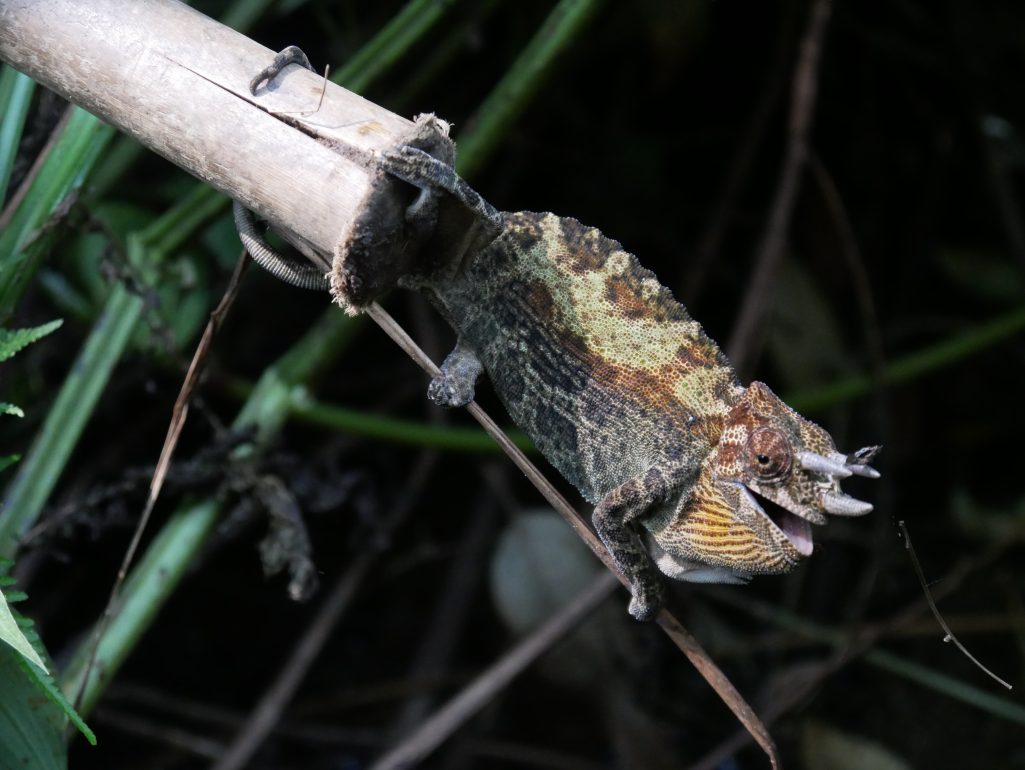
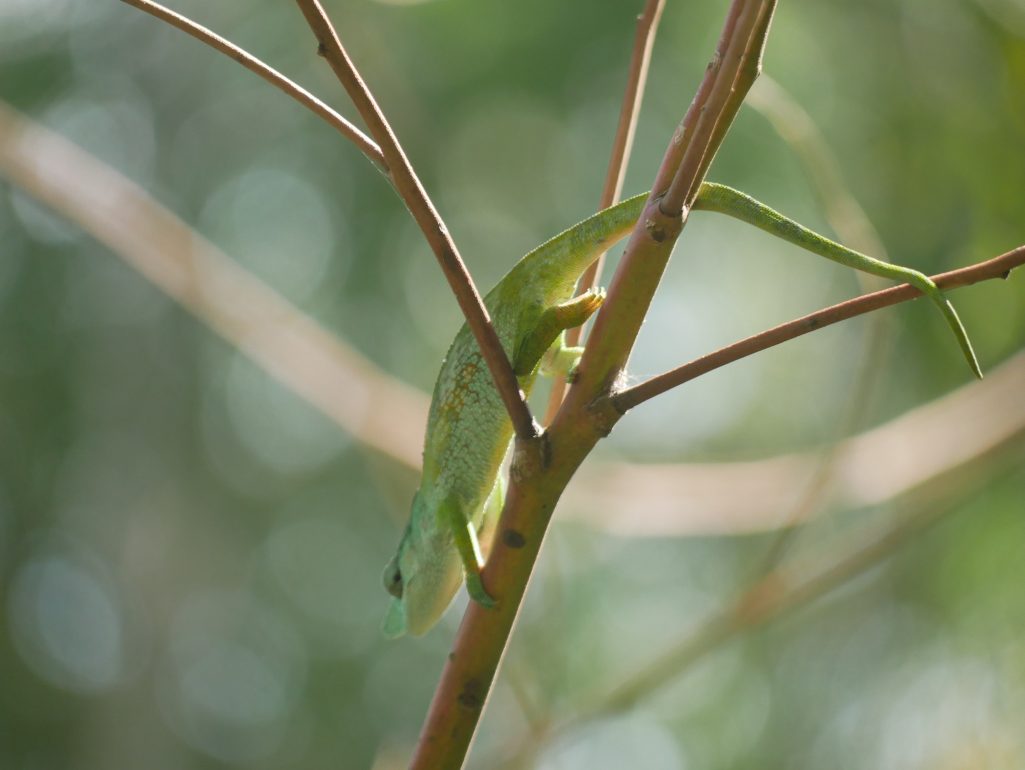
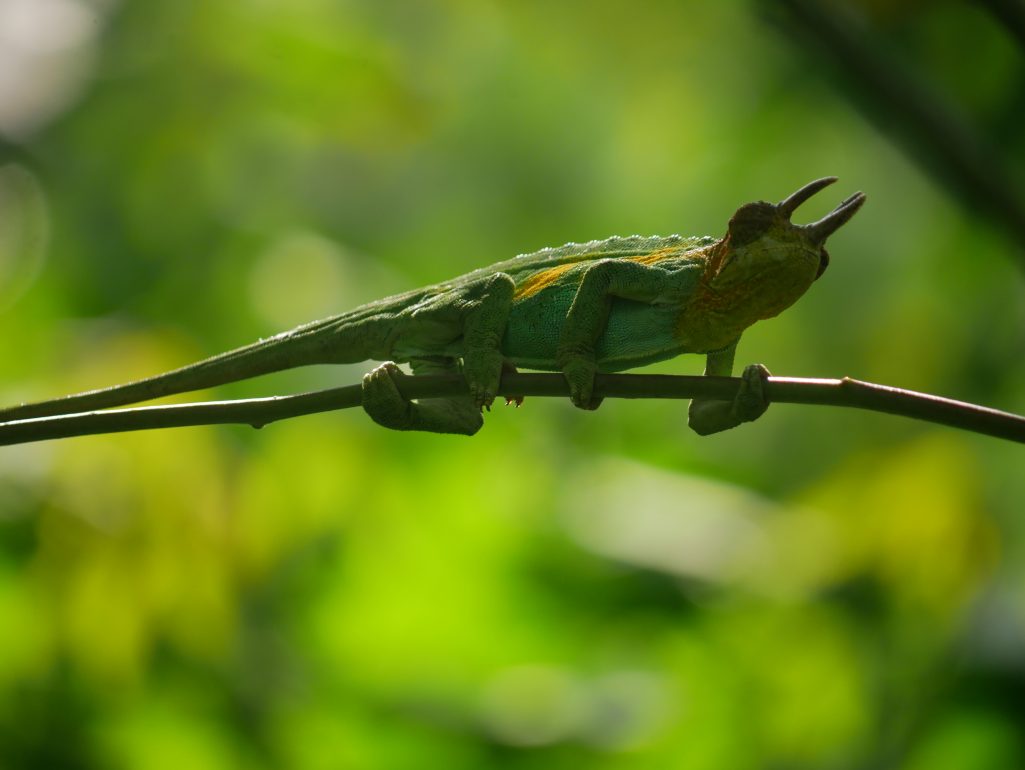
We now have a lot of potential energy to cash in, so enjoy a solid hour and a half of bumping back down the mountain to the main road before our first ever crossing of the equator which takes us into Queen Elizabeth National Park. We’d been told we would be able to camp next to one of the safari lodges on the edge of the park, and they are very obliging but issue a warning. The nearby river is home to a herd of hippos that like to graze around the camp at night. “Don’t worry, they won’t trample your tent but if you go to the loo then take a torch. The light will dazzle them and scare them away.” We don’t sleep much with the eerie sound of the hippos grumbling nearby.
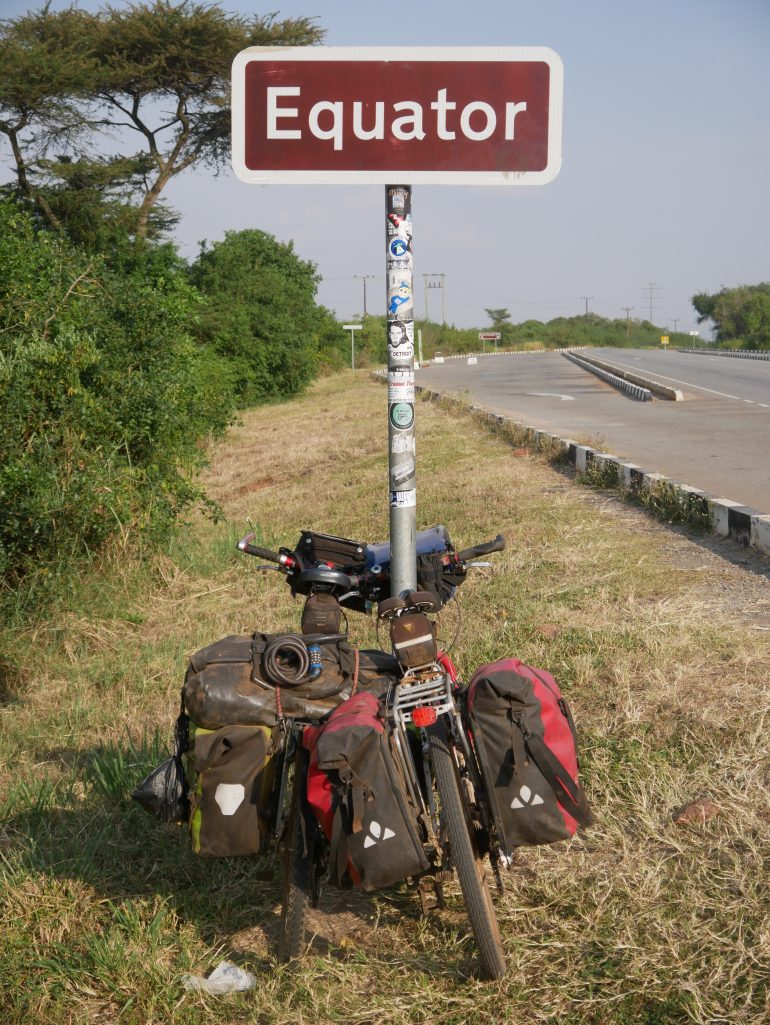
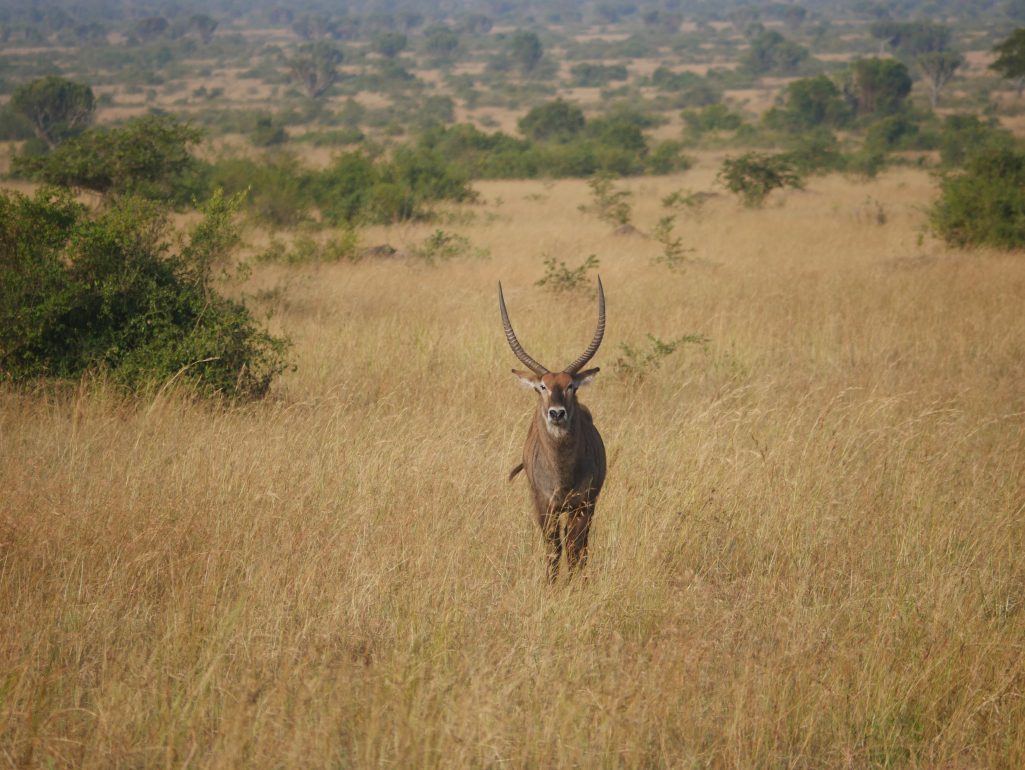
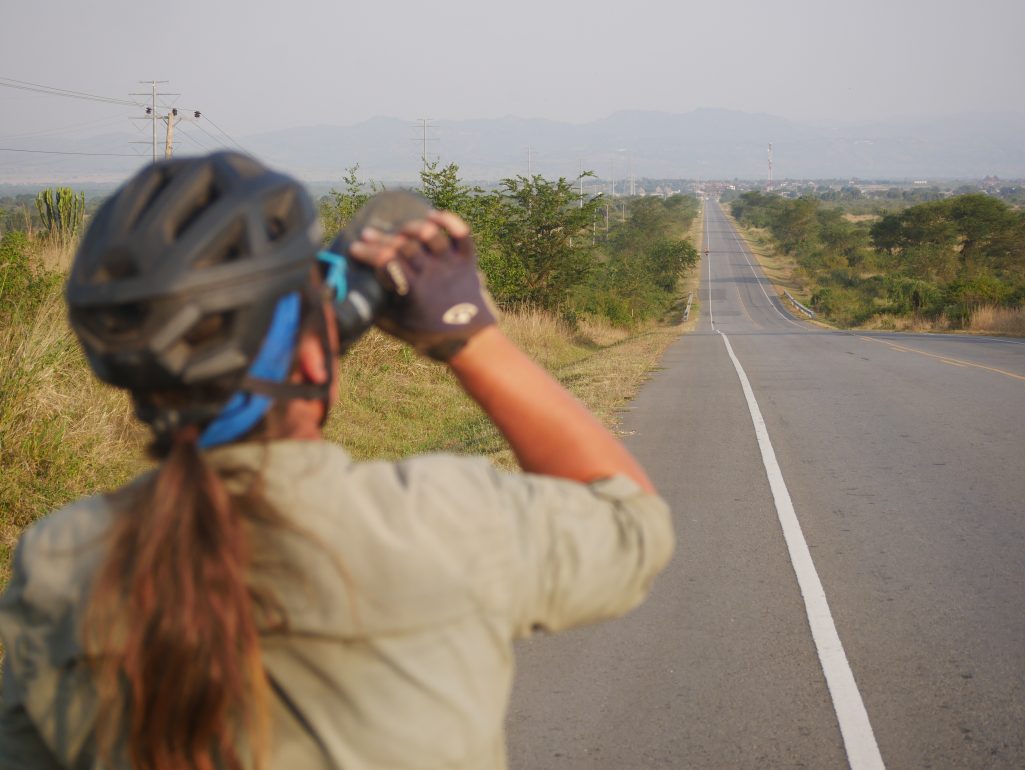
We often bang on about how the beauty of travelling by bike is that it’s slow enough to allow you to see more and that you’re fully exposed to the natural surroundings. This stretch of the journey is a great case in point.
The public road across Queen Elizabeth NP is so poor that we couldn’t hurry even if we wanted to, but when we aren’t trying to find the elusive ‘good’ line between the rocks and sand, we’re busy scanning the savannah on either side for wildlife. Some distant elephant sightings are followed by warthogs hanging out with antelope and a flash of black and white as some colobus monkeys dash across in front of us.
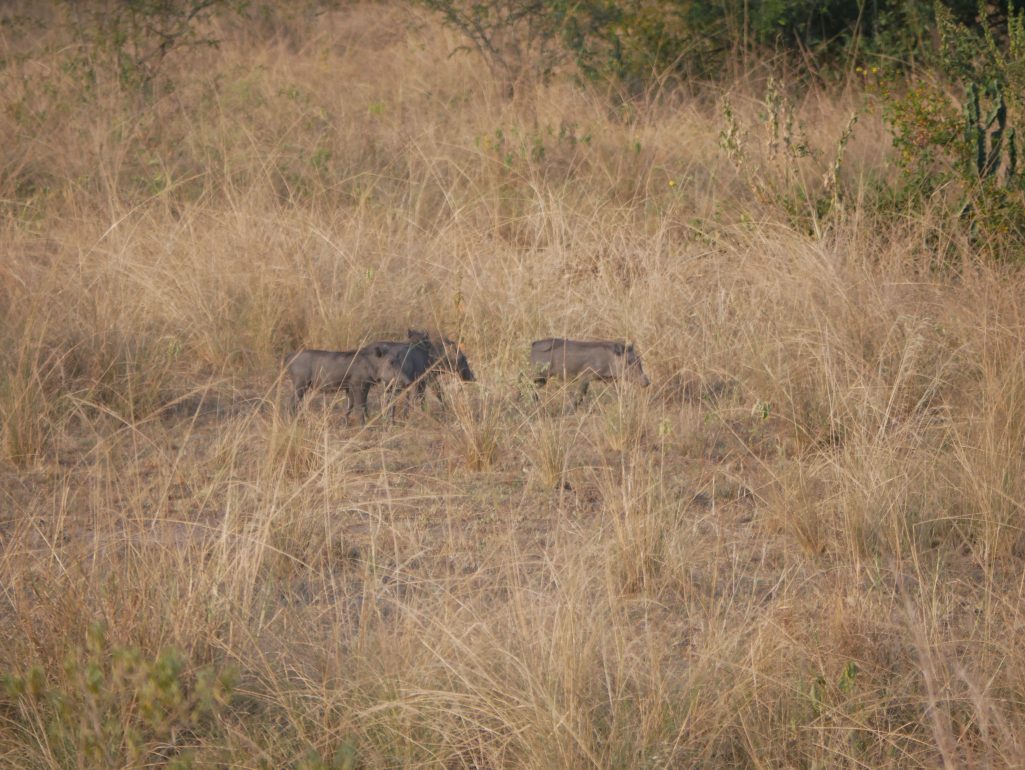
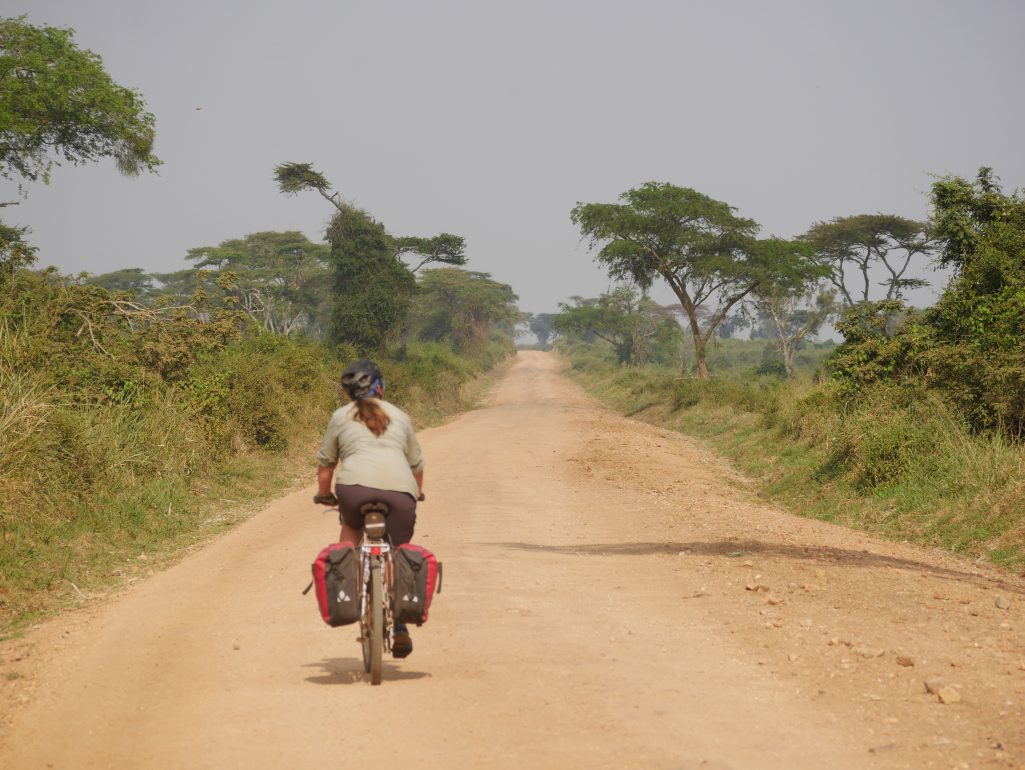
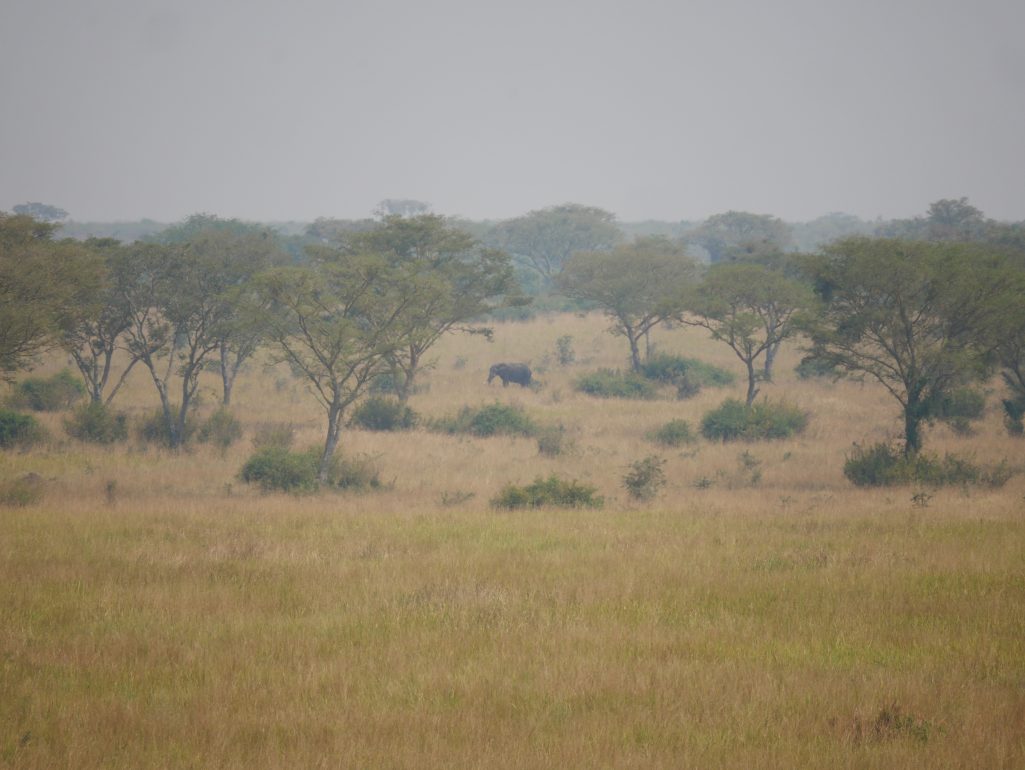
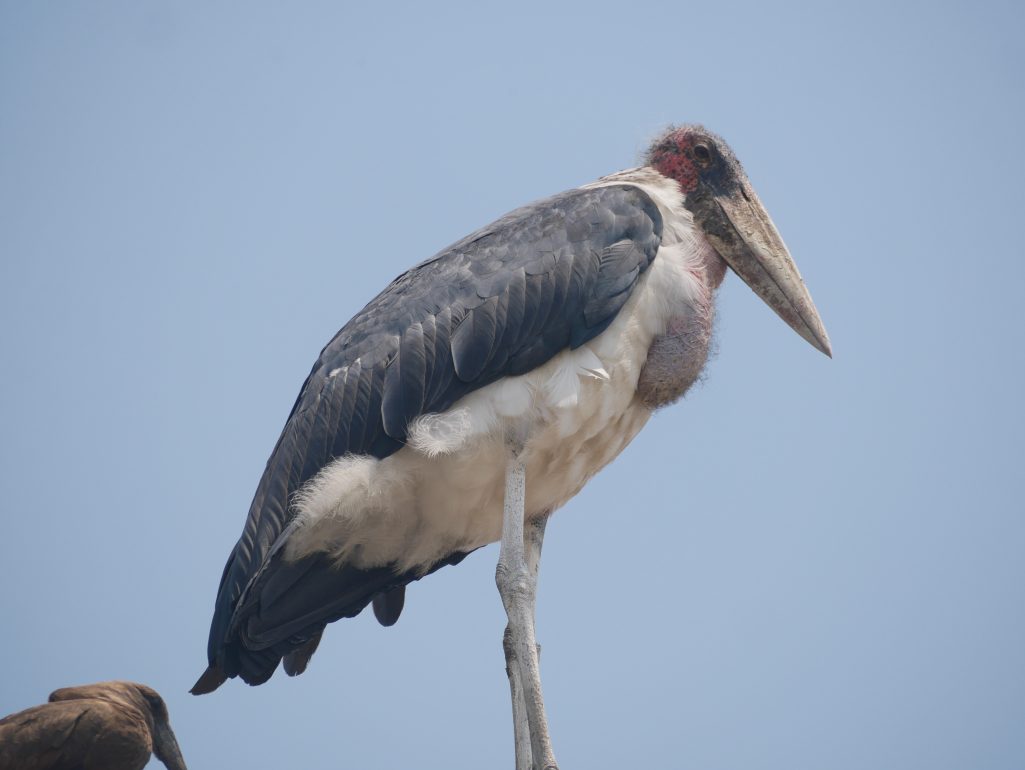
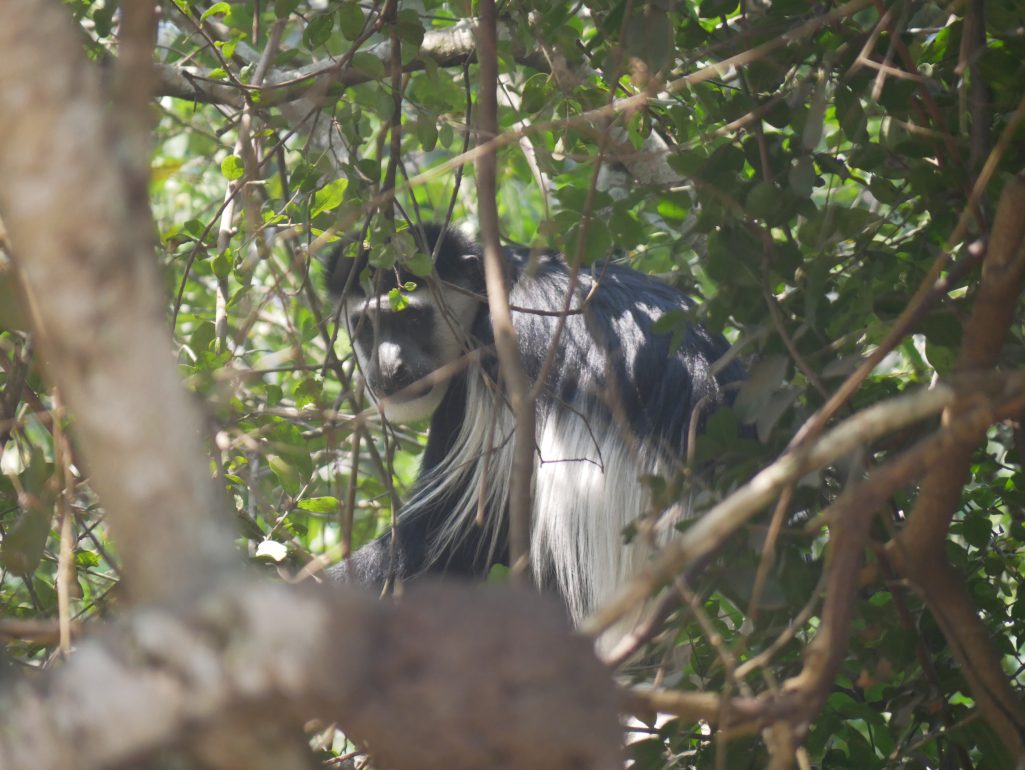
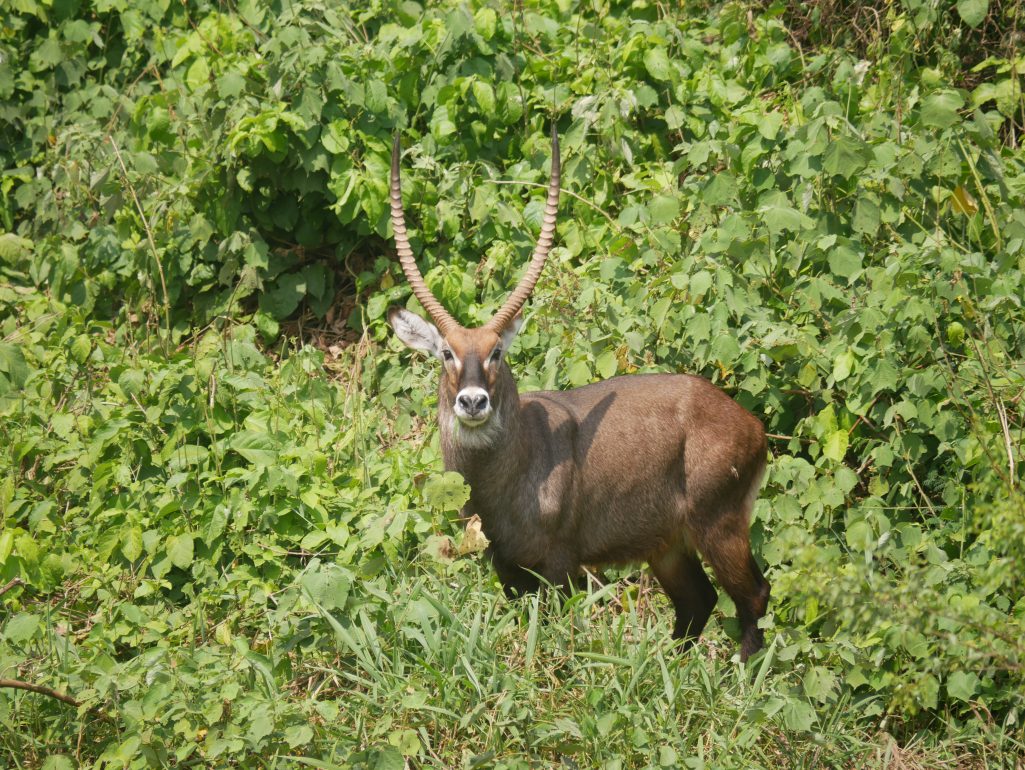
Stopping on a bridge for a banana break, we both gasp as a baby elephant emerges just upstream to be joined by its mother for a drink. They soon disappear out of view again, but that moment is something very special.
Herds of buffalo watched us suspiciously before Kirsty spots a huge fish eagle just off the road. On closer inspection it was perched over a marshy lake full of yawning hippos with all manner of other animals around it. At another bridge a troop of baboons line the roadside with a few whoops as we go past.
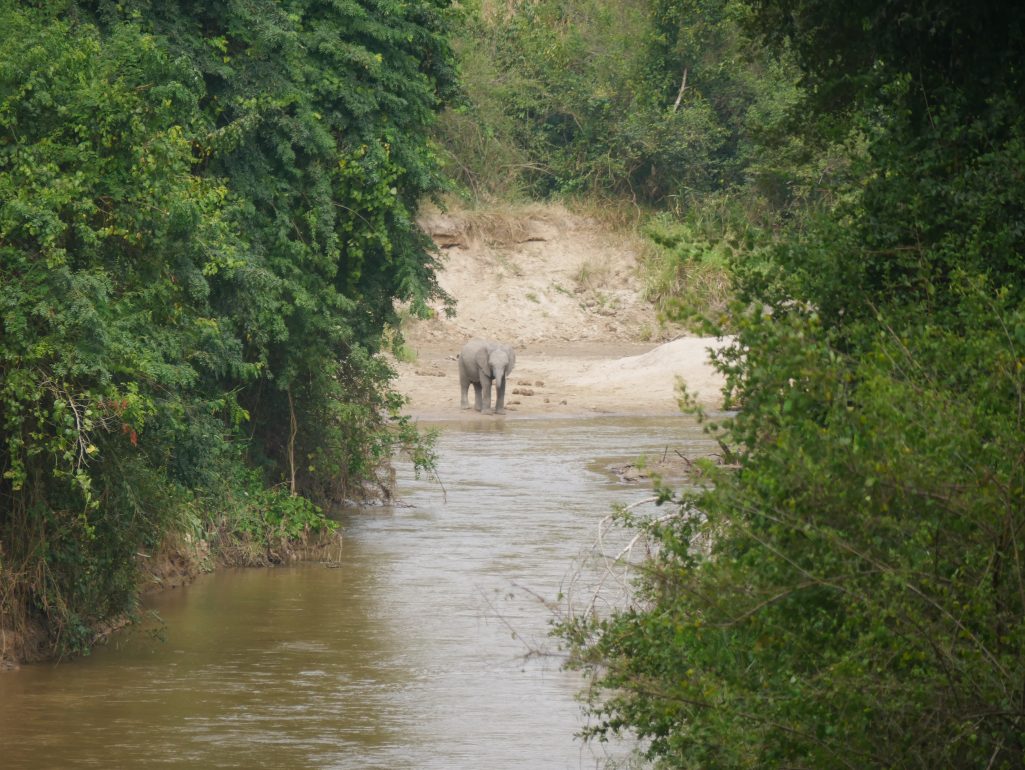
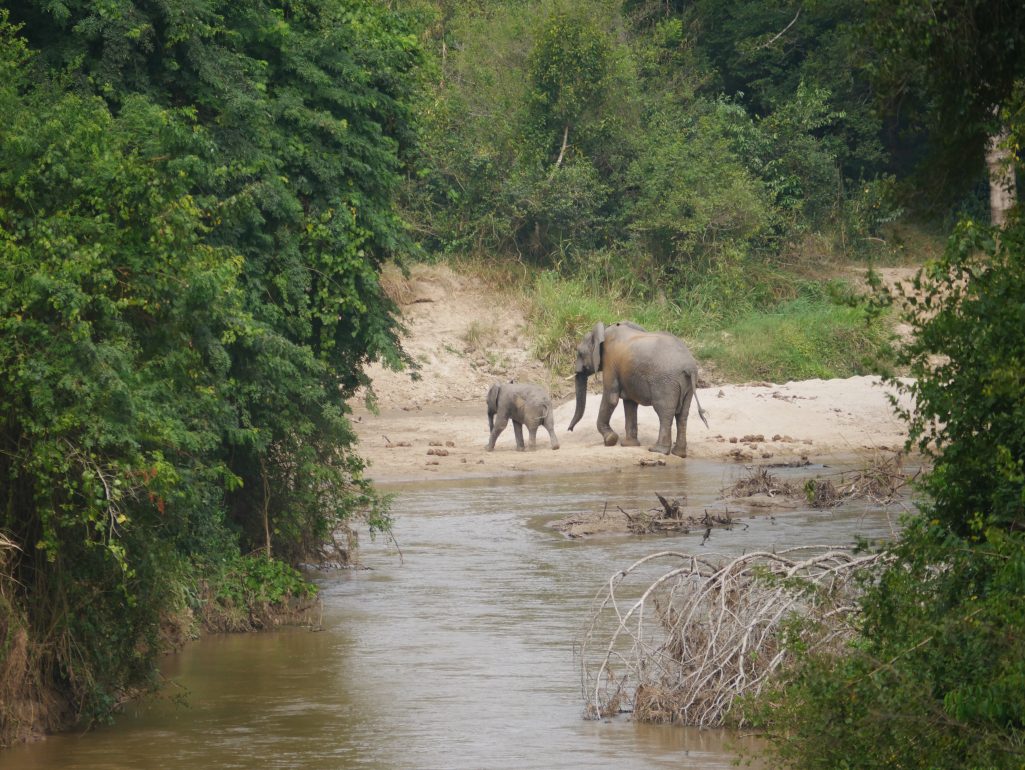
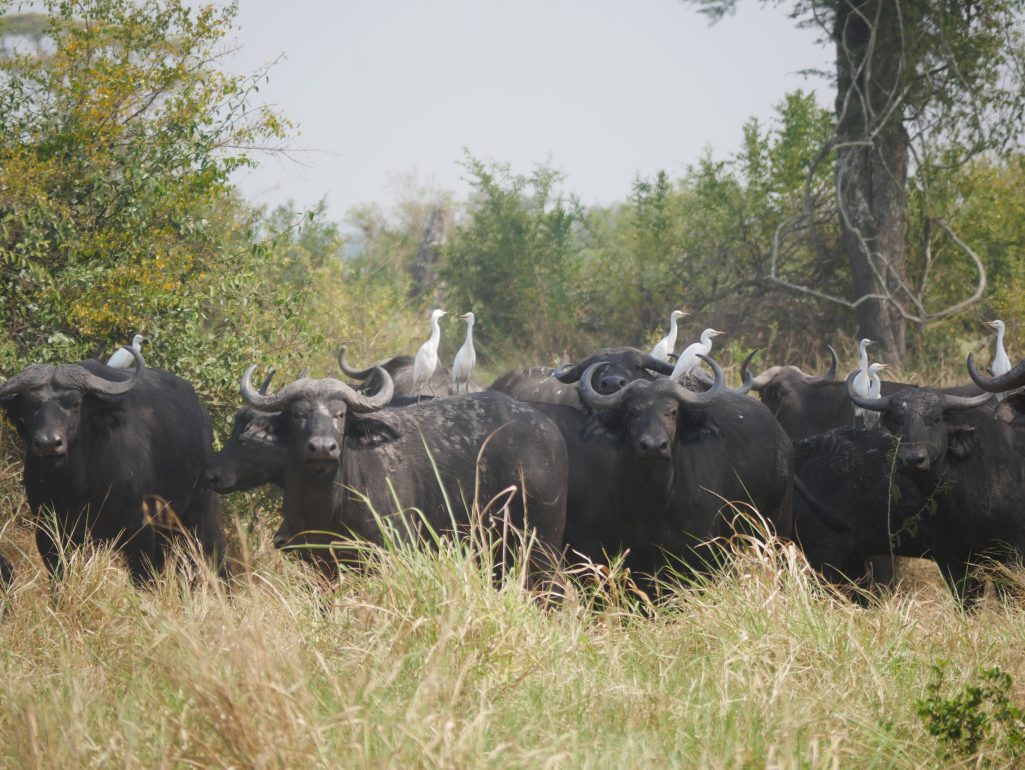
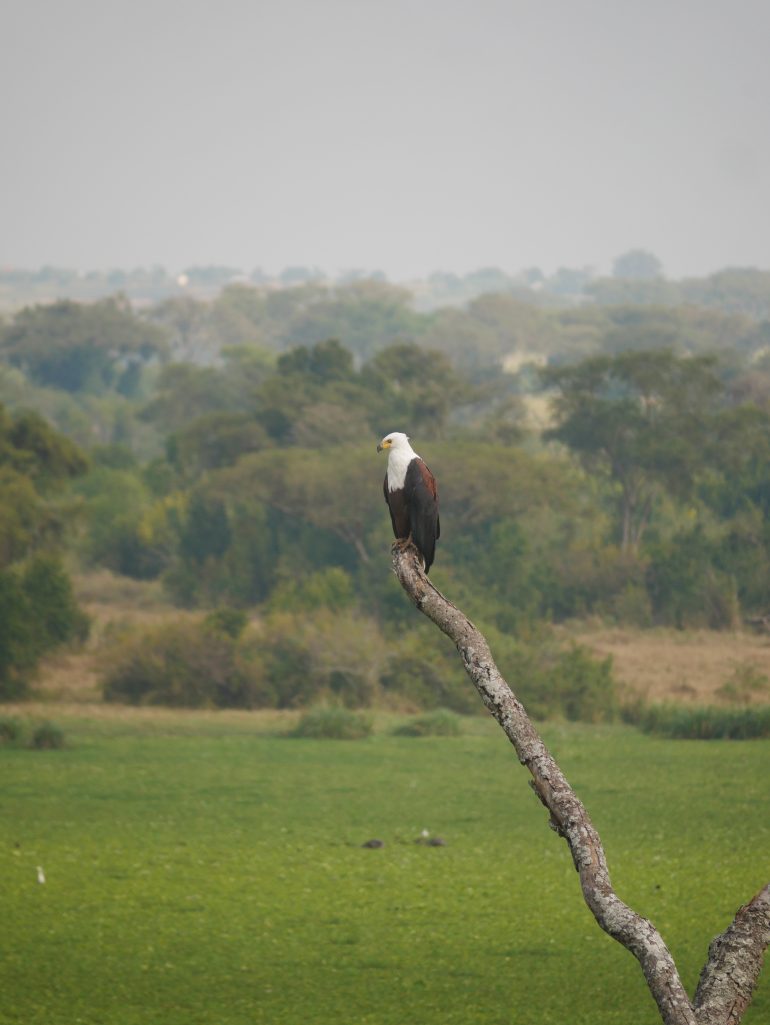
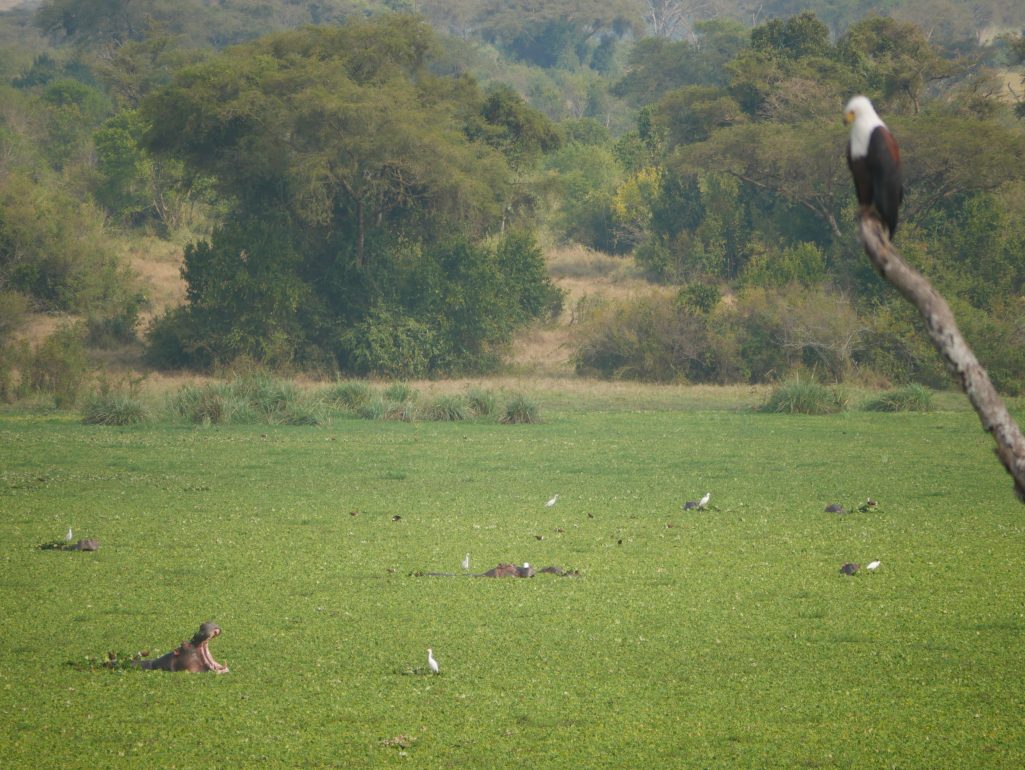
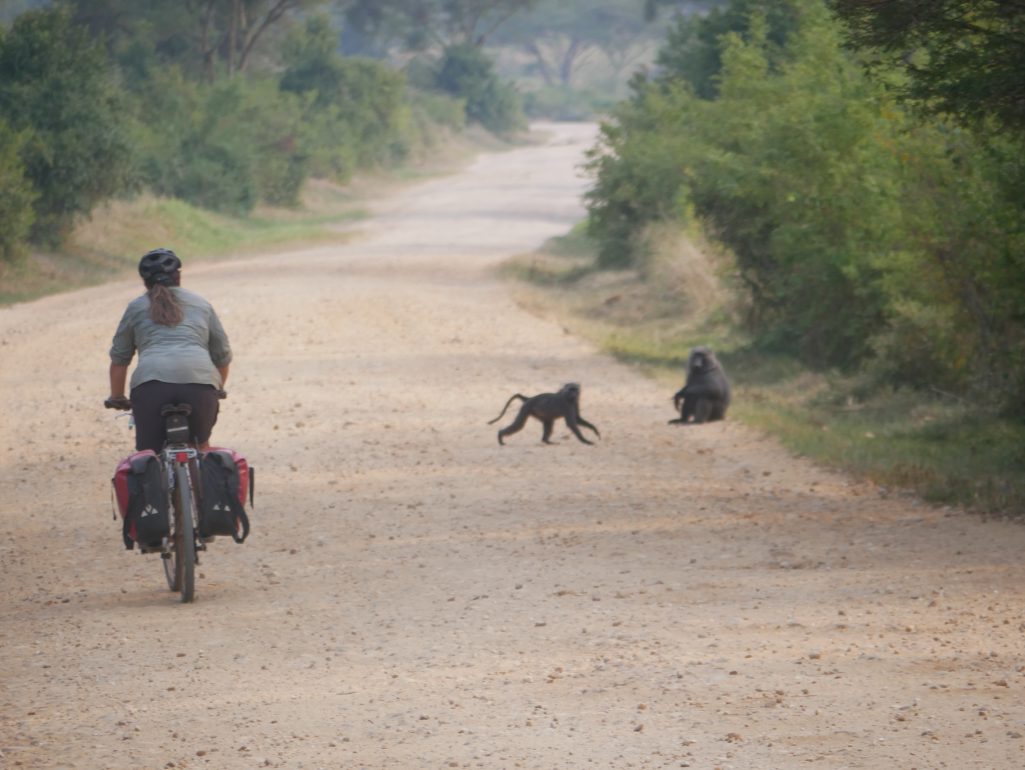
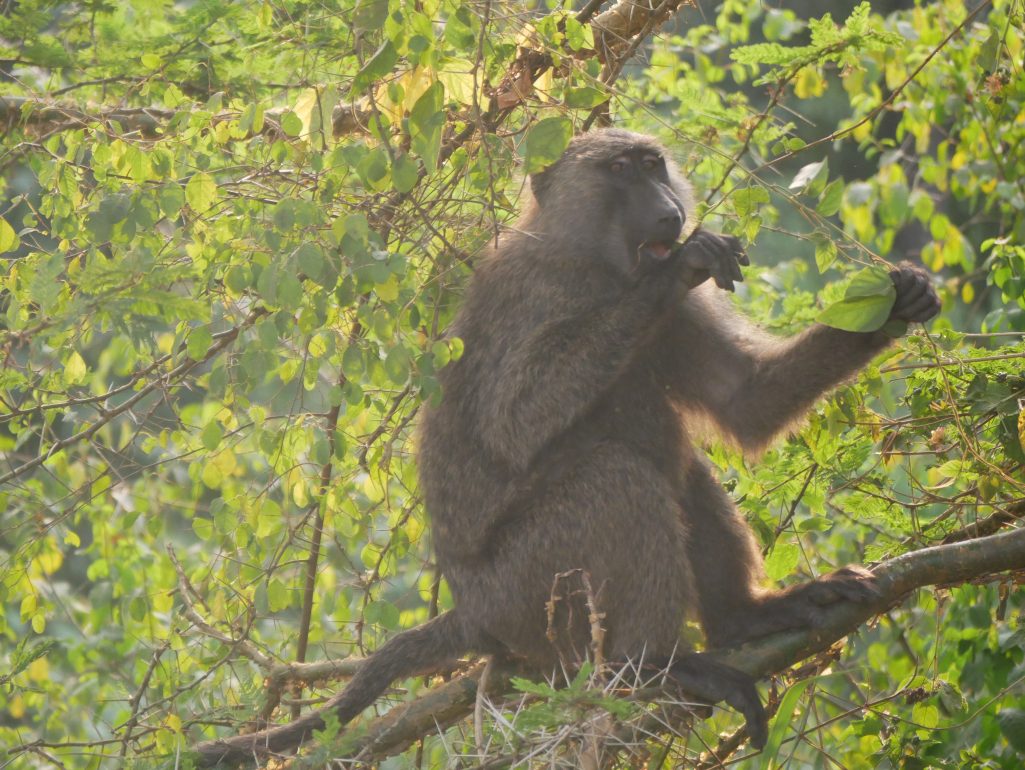
We ended the day in the Ishasha sector, famous for its tree climbing lions which is where bikes have their limitations. Being slow and exposed means they didn’t allow us to venture into the bush here. Perhaps a relief for our parents.
Whether we would have seen as much from the seat of a 4×4 is hard to say, but this was a day in the saddle that will be very hard to beat.
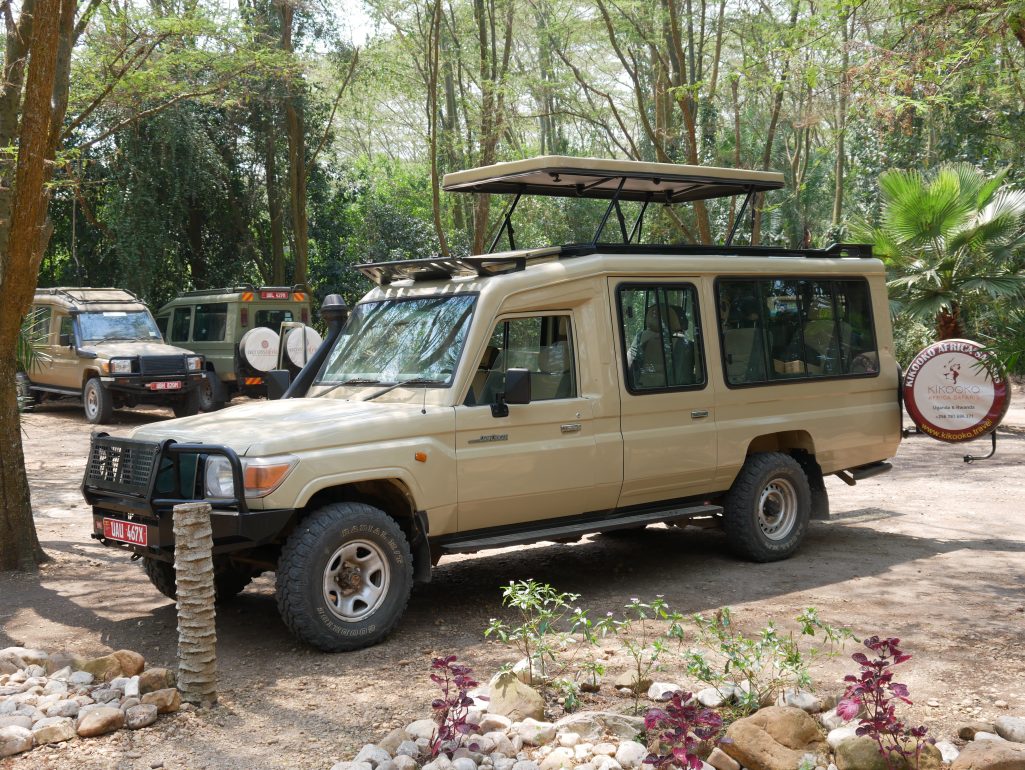
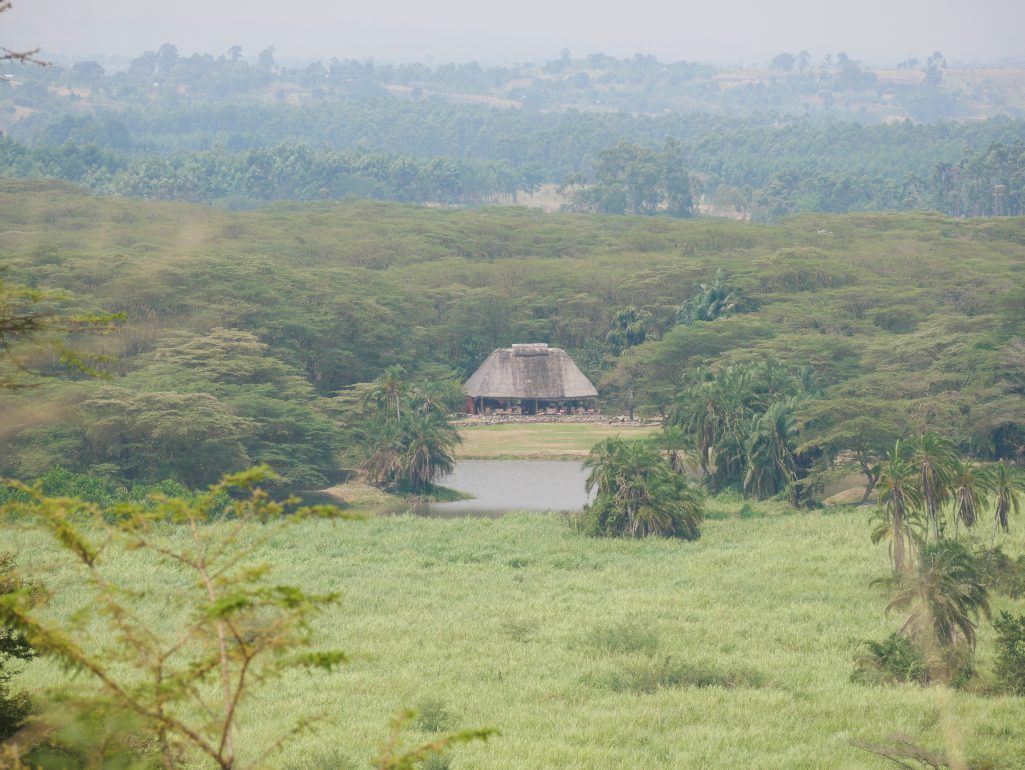
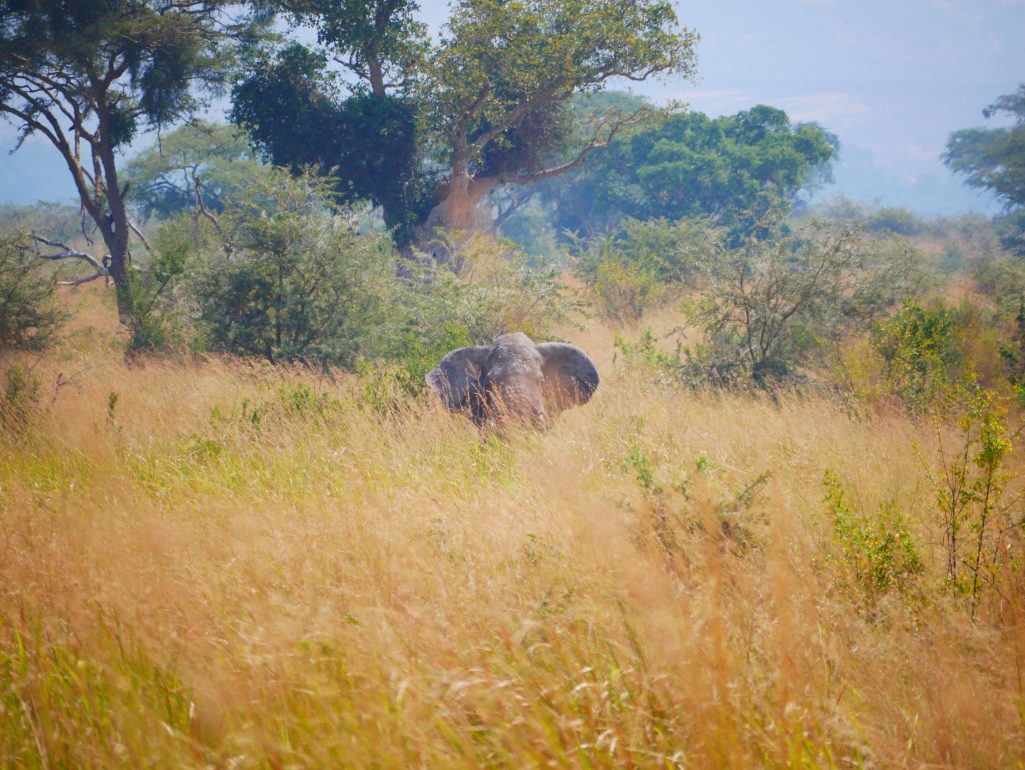
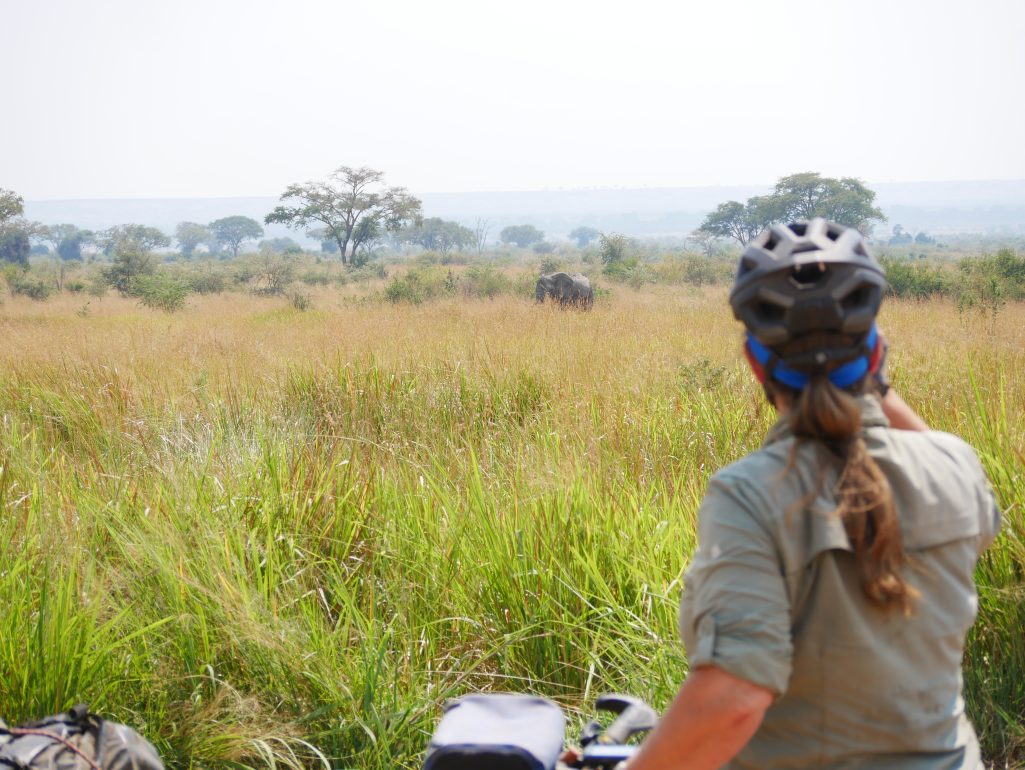
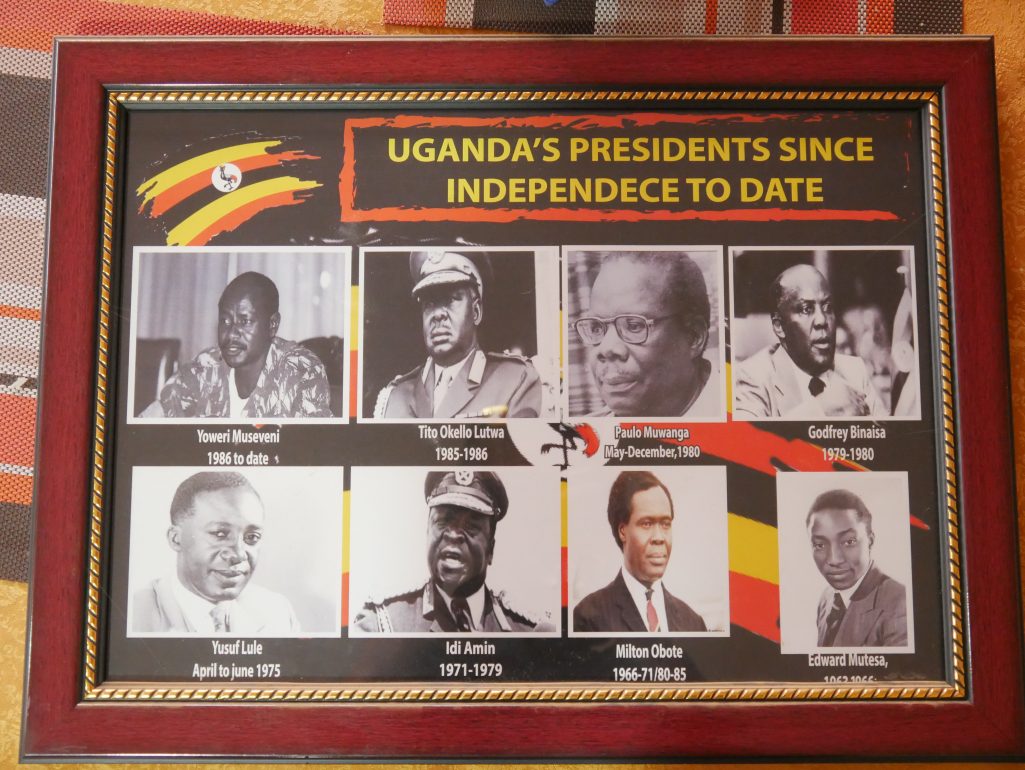
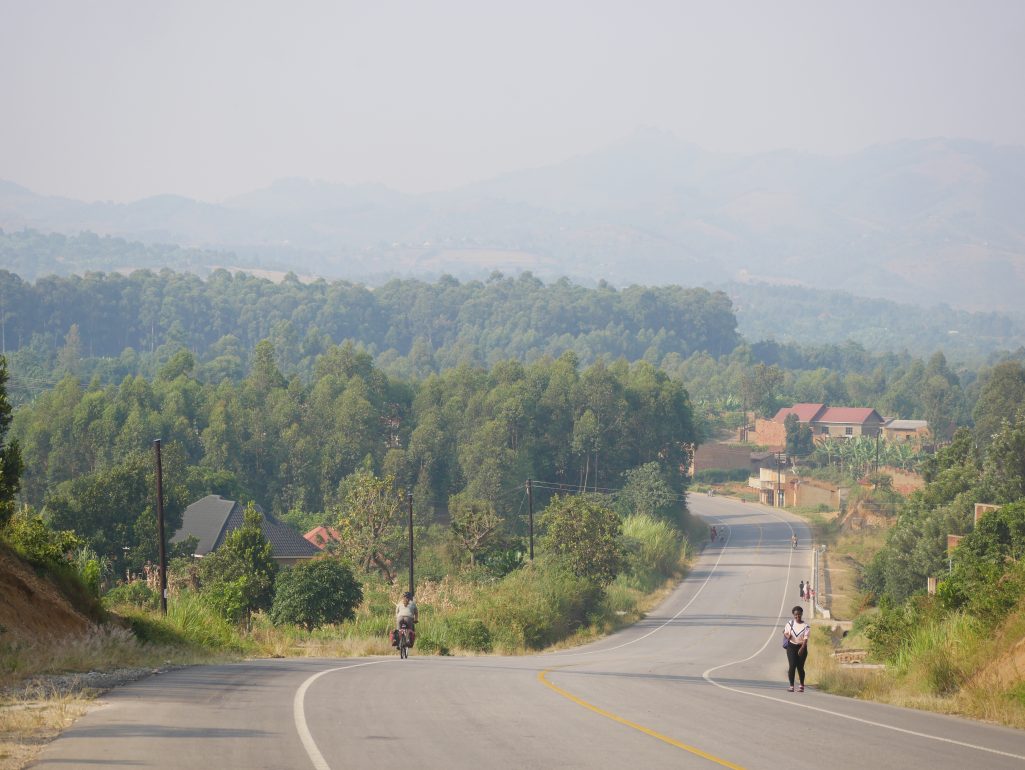
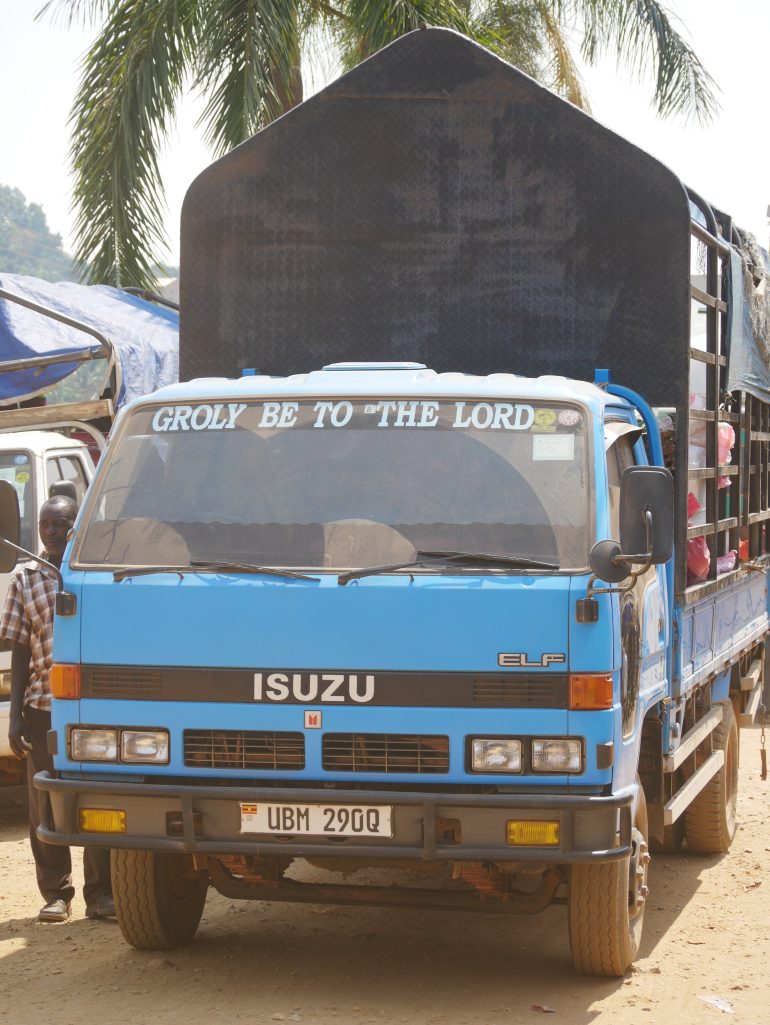
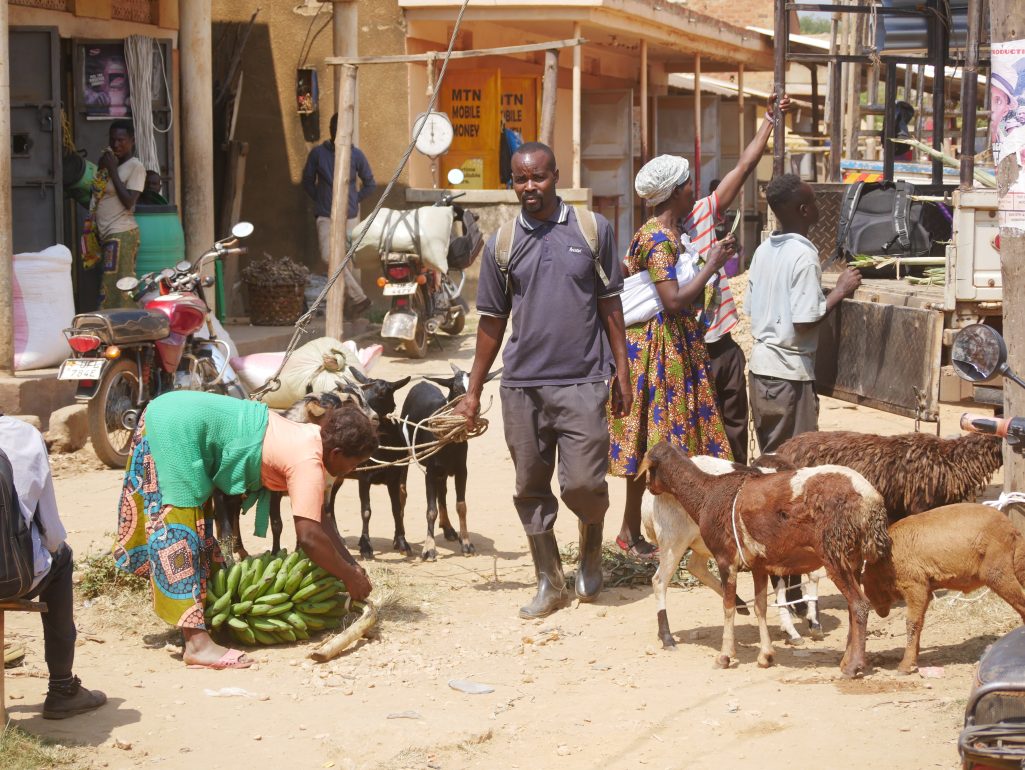
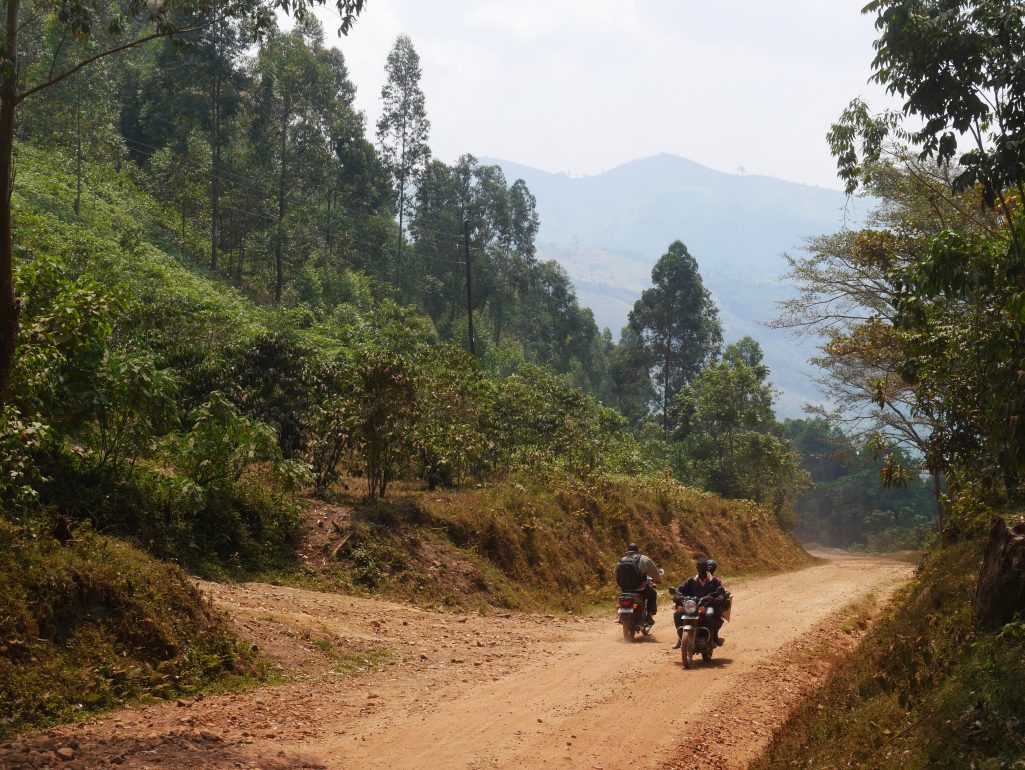
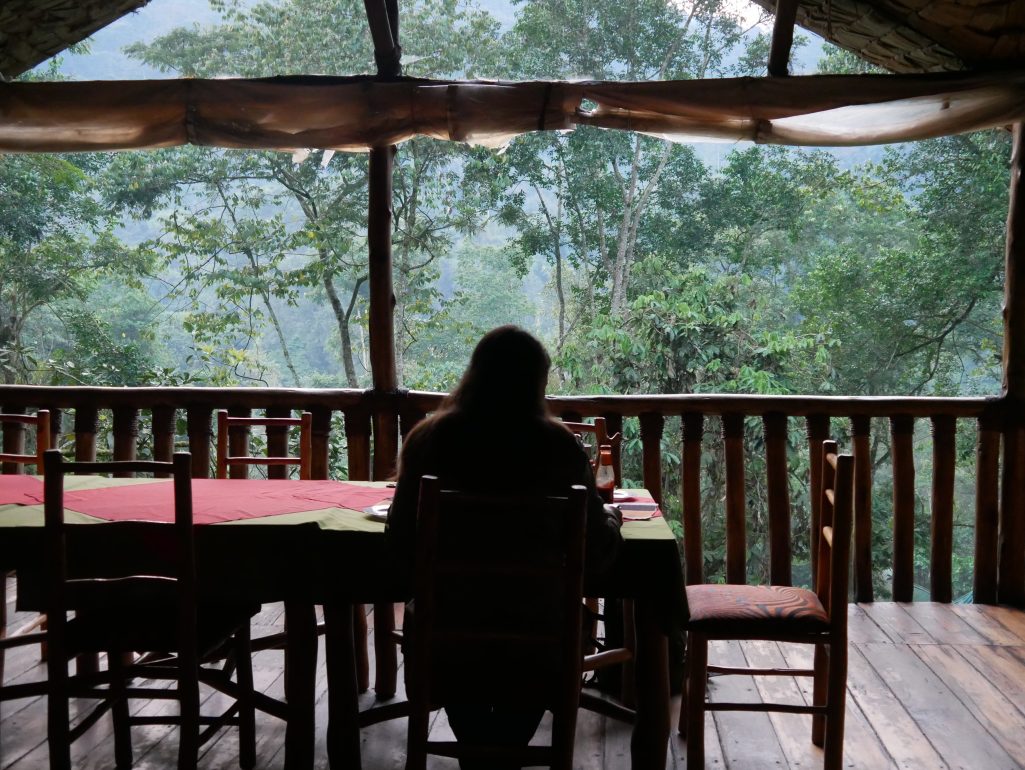
A couple of short days from Ishasha takes us back into the hills and high up to the edge of the Bwindi Impenetrable Forest, home to some of Uganda’s most famous residents.
One of the things any visitor to this country needs to decide is whether to visit the mountain gorillas. The trek is reassuringly expensive, but when our good friend Will, who’s been almost everywhere, said it was one of the best travel experiences he’s had, we knew we had to dust off the credit card.
The day starts with some traditional dance and a briefing before we are assigned our groups. There are about a dozen habituated family groups in the forest. Ours were called Mubare and were the first group to be habituated back in the early 90s.

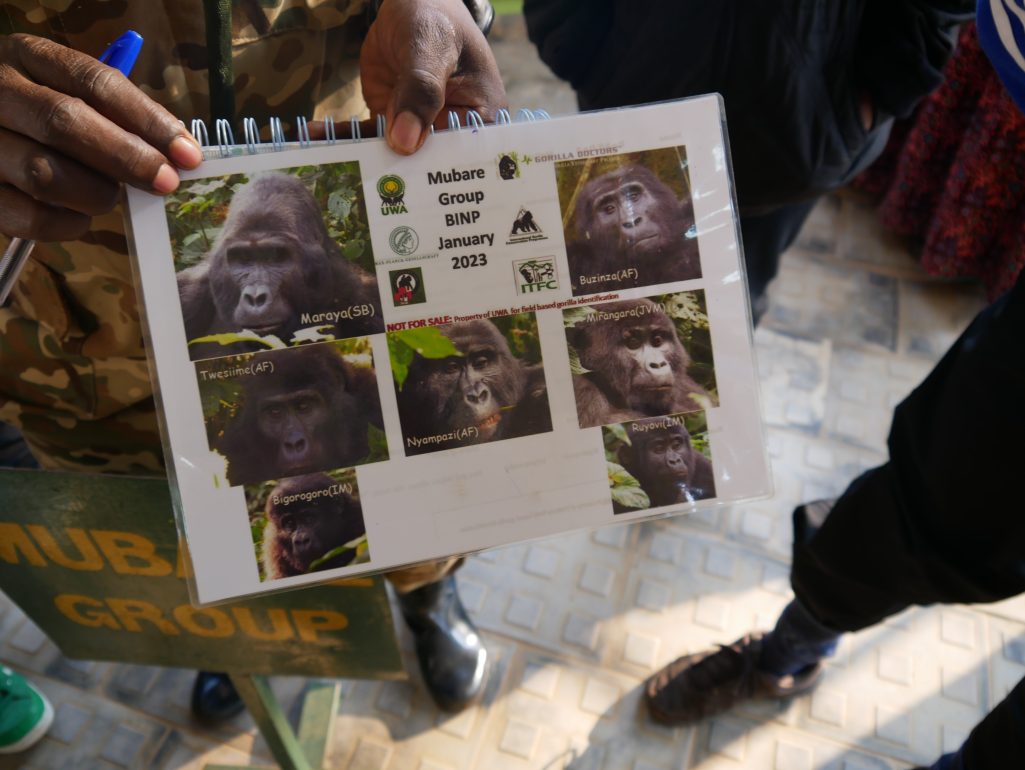
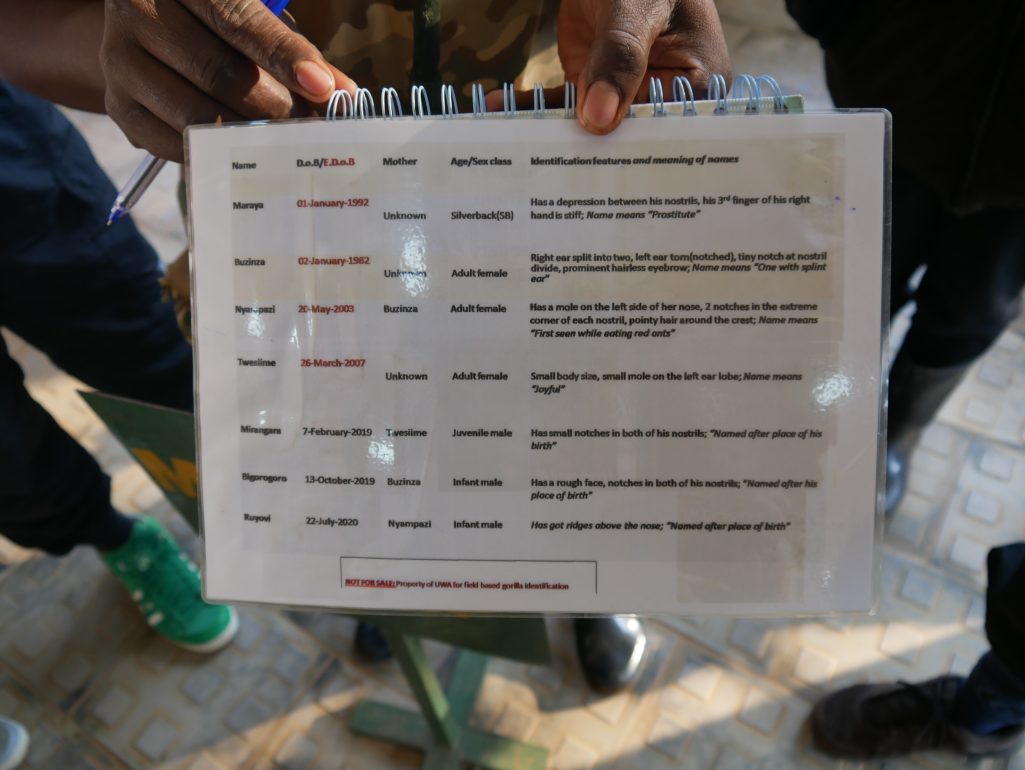
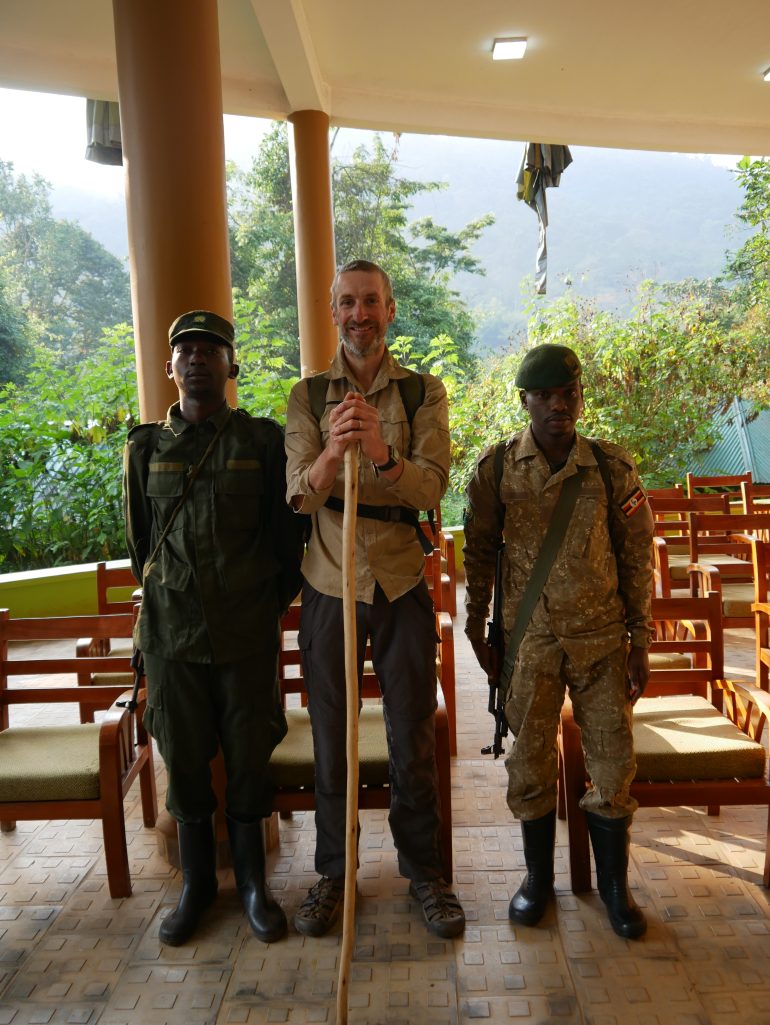
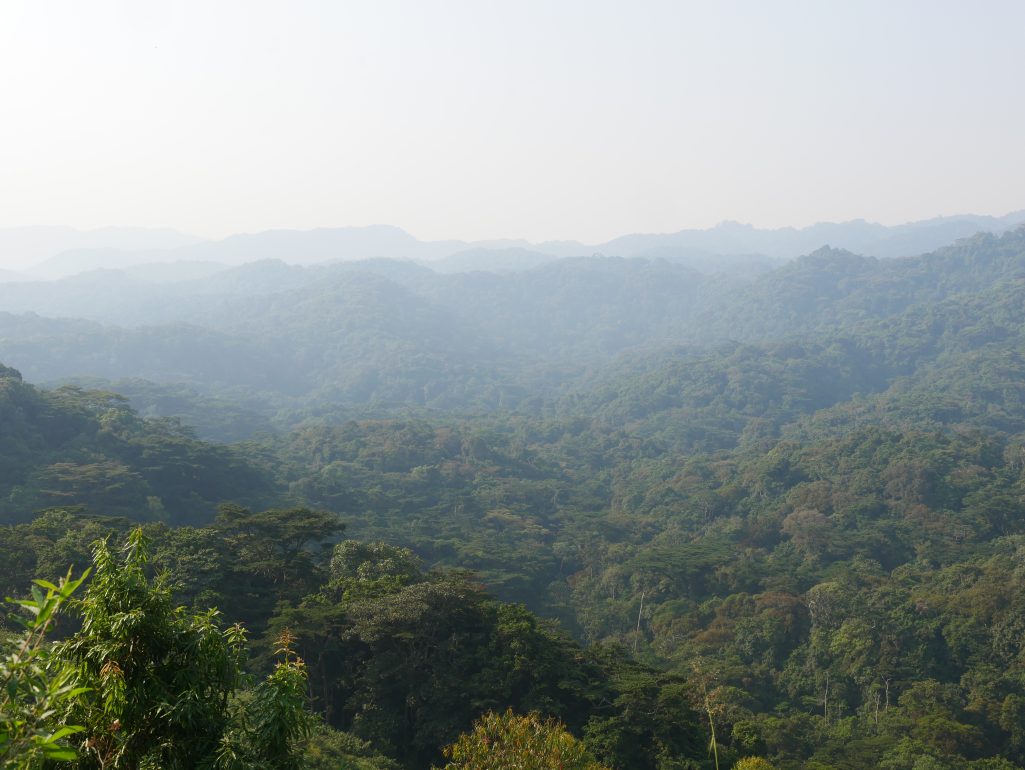
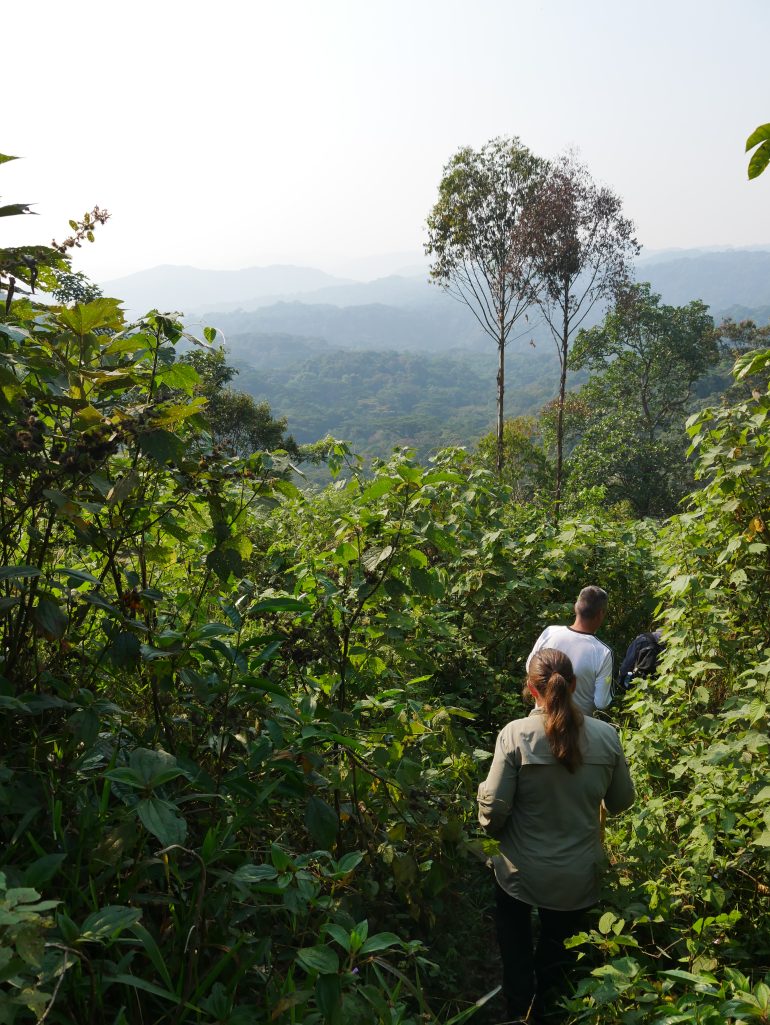
The length of the trek depends on how far into the forest the gorillas happen to be. Trackers go out early in the morning to follow them from where they nested the night before, and communicate the location to the guides. We’ve only been walking about 30 mins when we are told we are getting close. Then a few more steps and suddenly we see a black shape sitting in the bushes.
It’s quite something to see these magnificent animals in the wild and so close up, so that first encounter fills us with emotion. The group consists of a huge silverback, as big as a sofa, who is joined by three wives and three juvenile males. They are very relaxed and apparently just see people as part of their group now. The silverback lounges in the undergrowth while munching on enormous handfuls of leaves. We’d been warned in the briefing not to get any closer than 10m but the gorillas have other ideas. The youngest two are wrestling together and barrel towards us, narrowly missing our legs. Then all but the silverback climb up into the treetops to pick fruit. All too soon our hour with the gorillas is up and we make our way back through the forest with a few gigabytes of photos and memories that will stay with us for the rest of our lives.
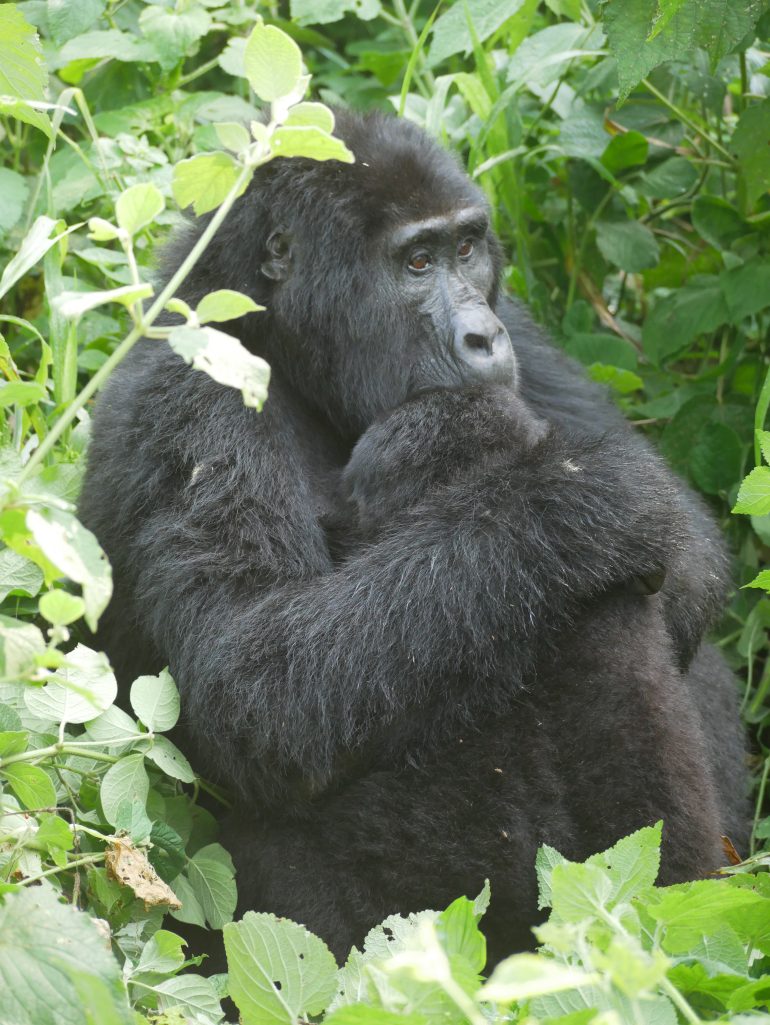
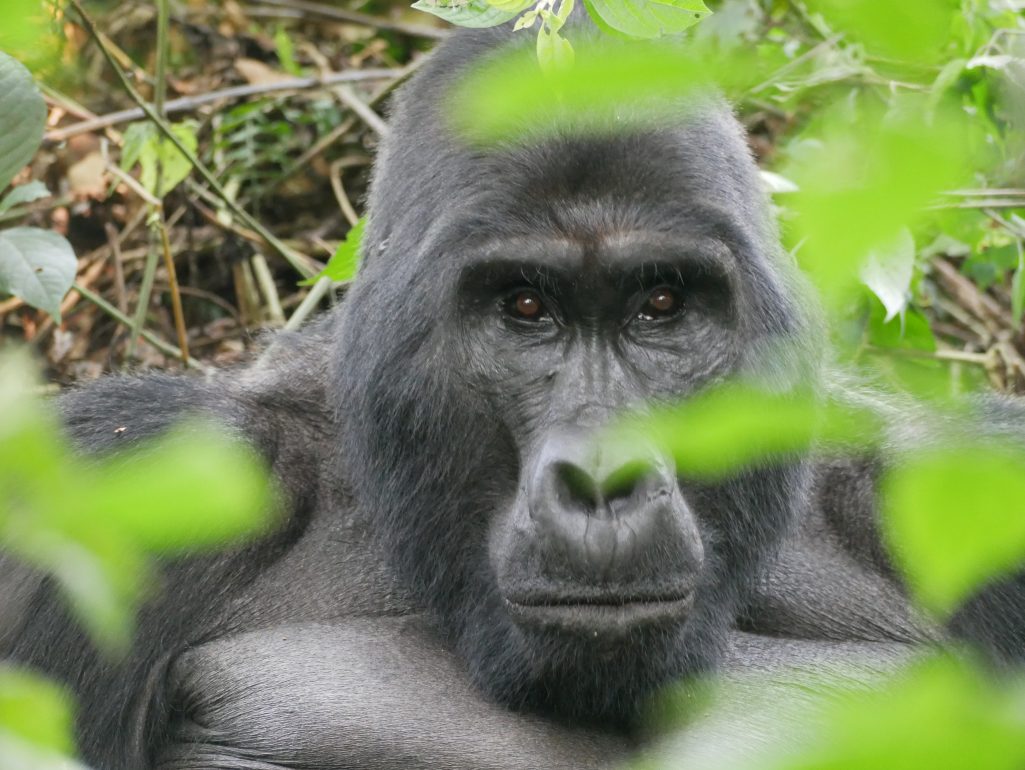
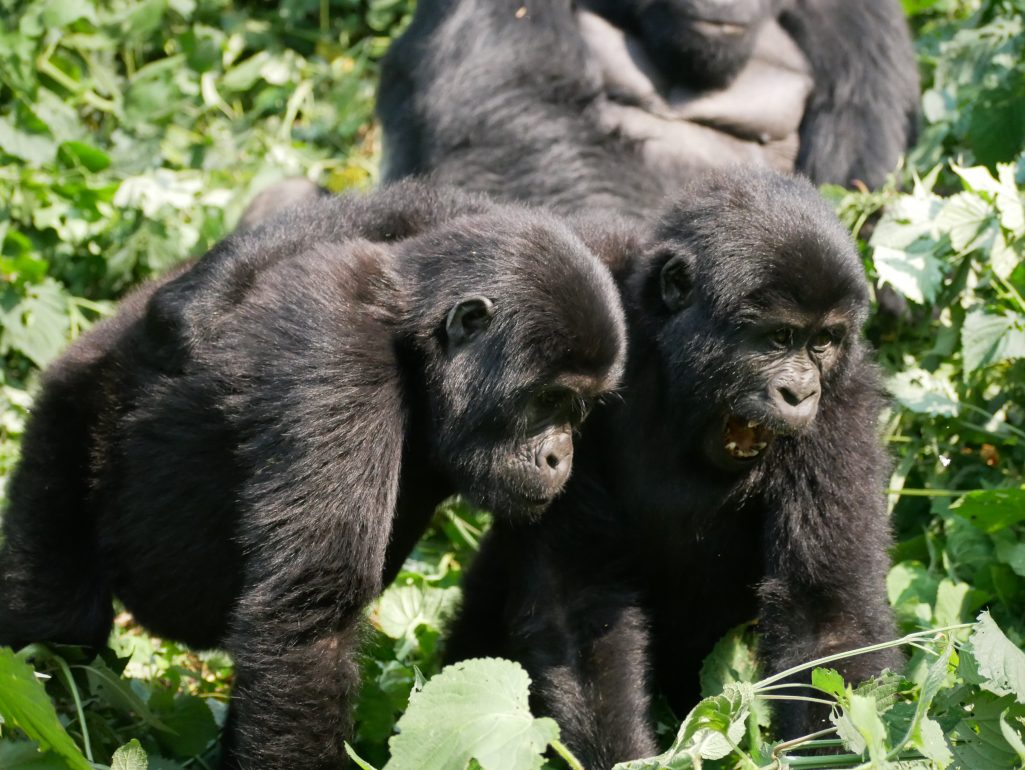
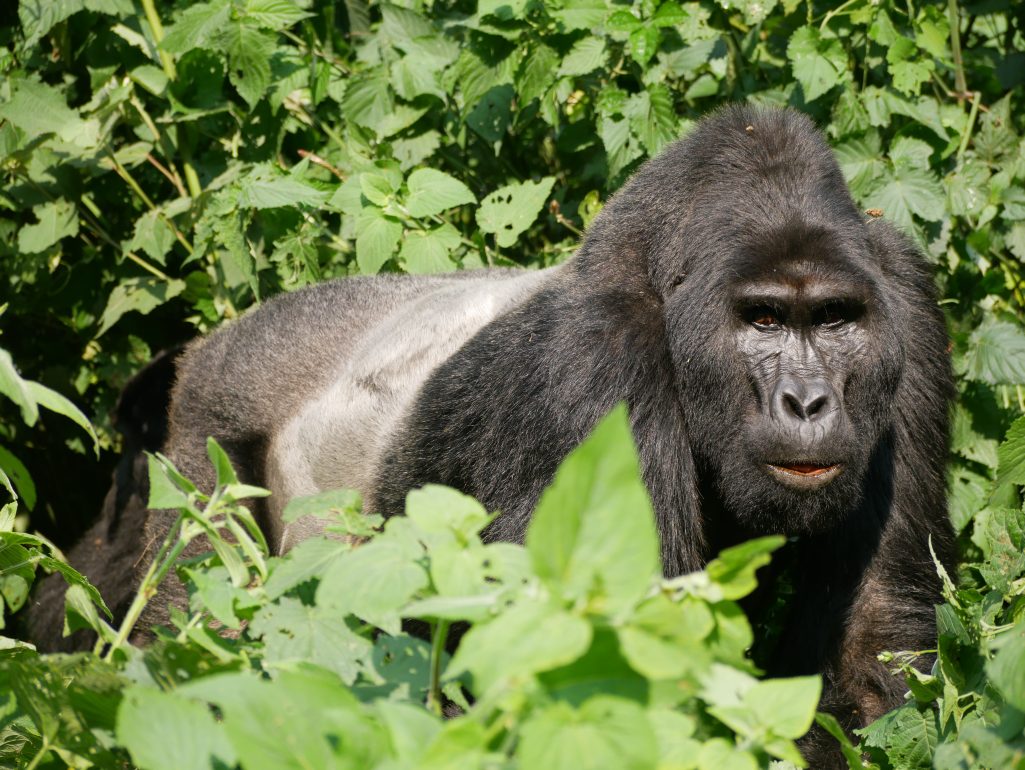

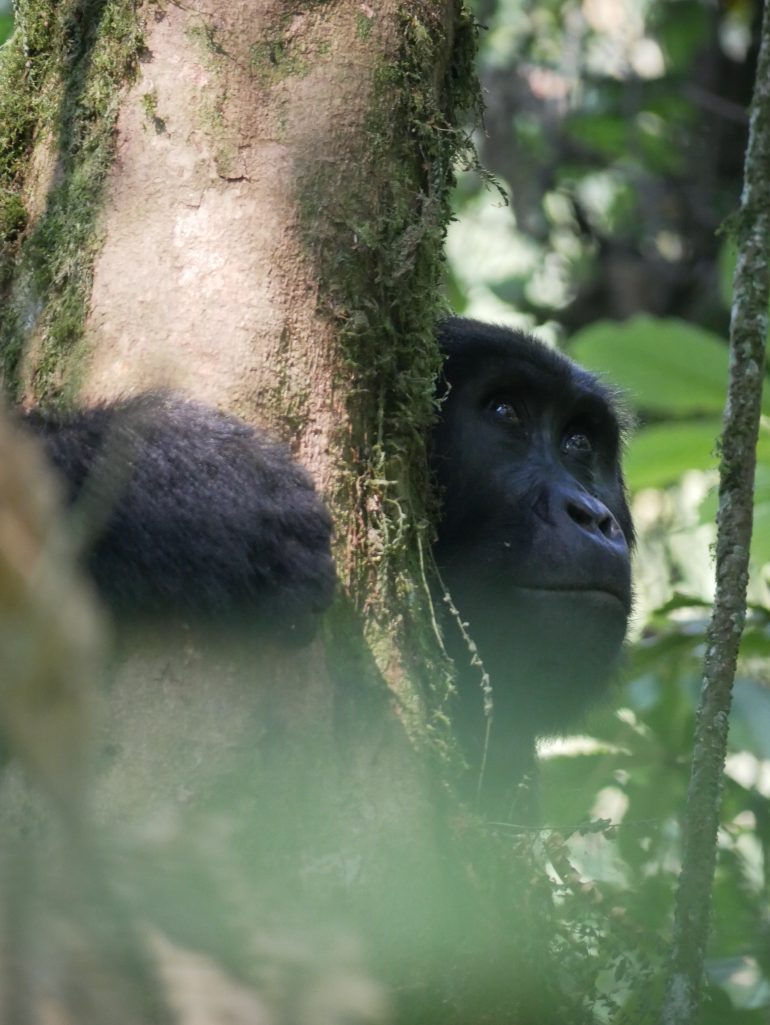
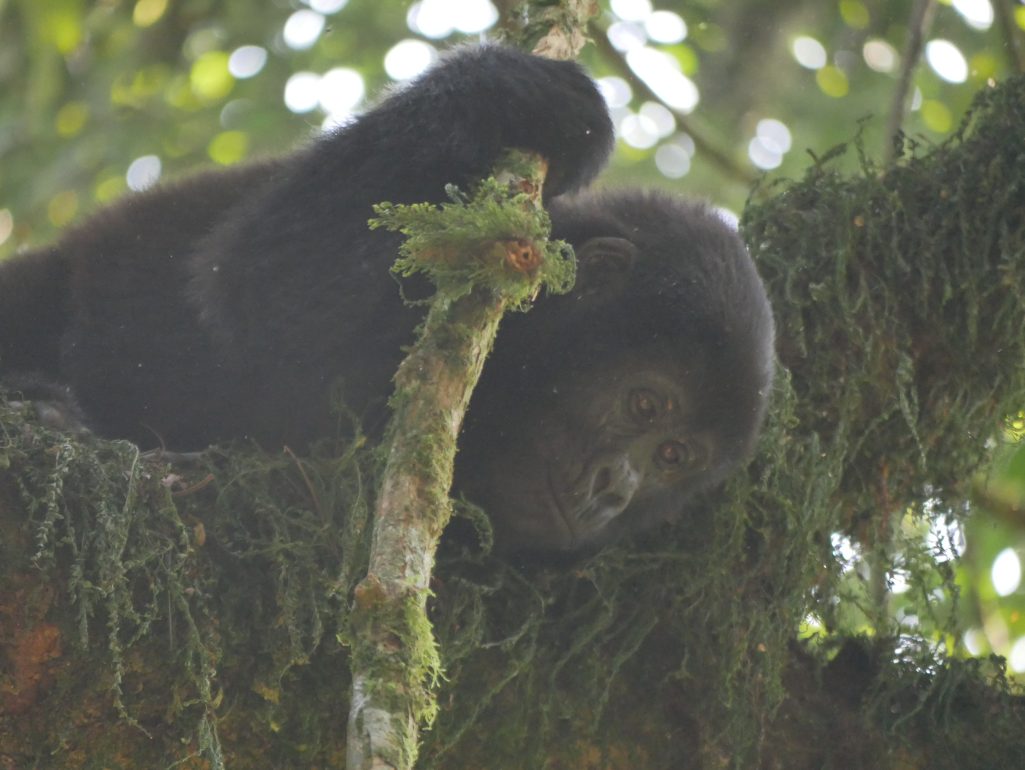
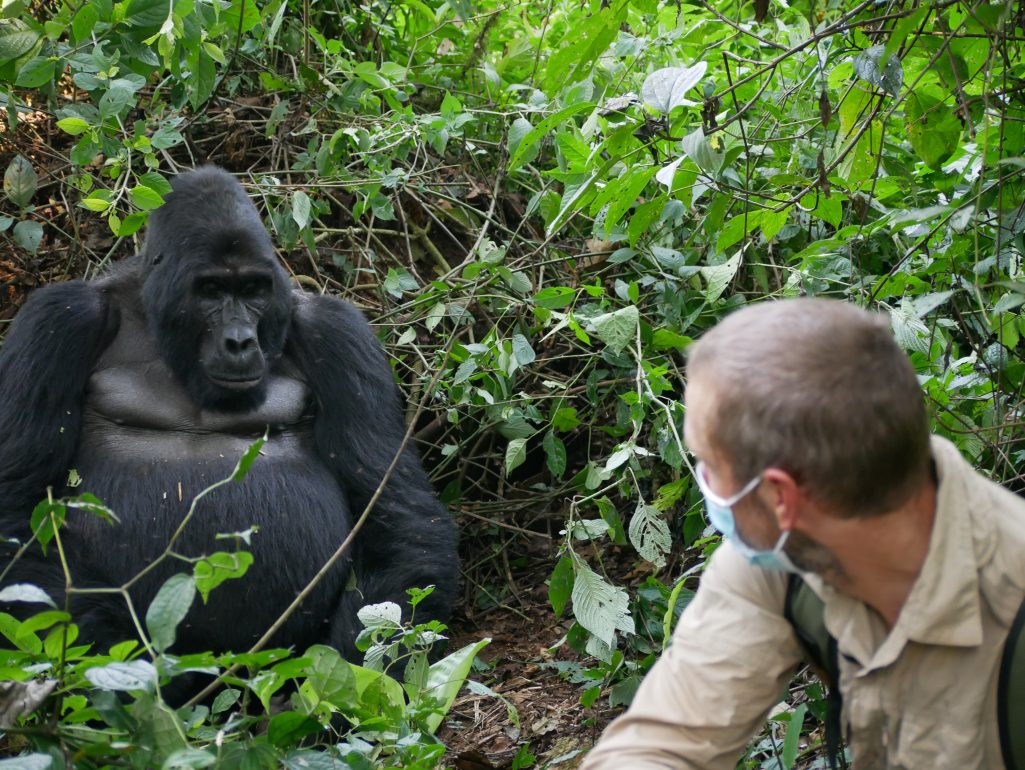
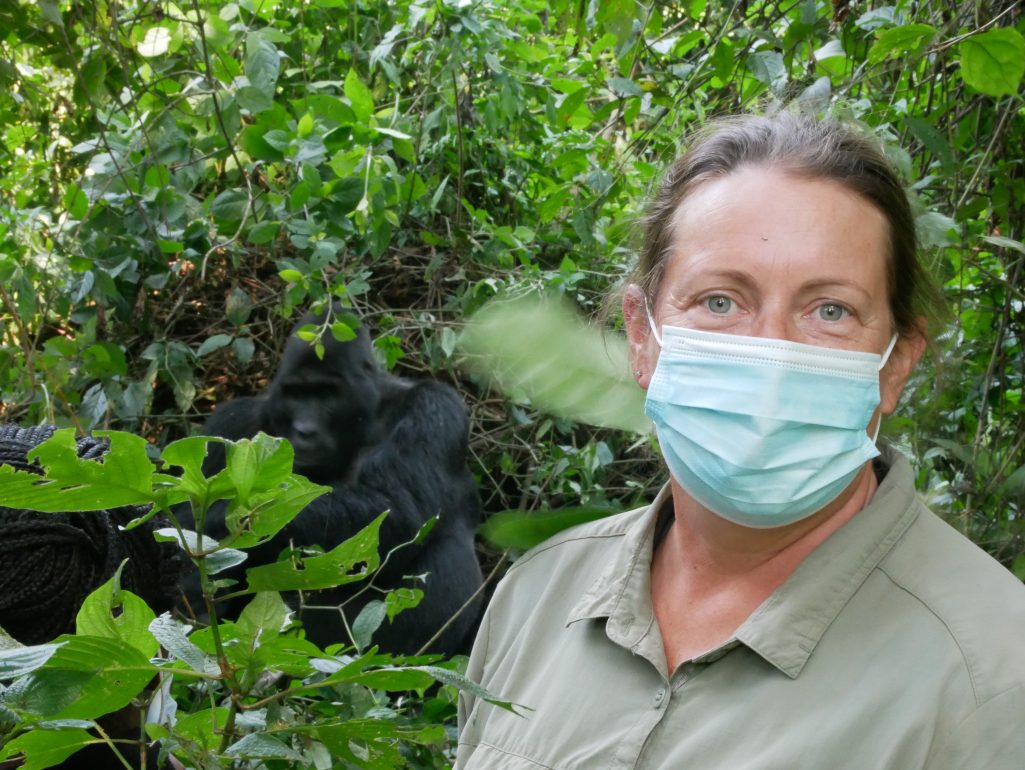
The mountain gorilla programme is a genuine conservation success story. In 1981 it was estimated that just 254 individuals existed in the wild. Their habitat was being cut down, poachers were killing them, and war and unrest in the region was having a huge impact. Thanks to the work of the conservationist Dianne Fossey, the issue was highlighted to the world and measures were put in place to try and protect them. The habituation and tourism programme plays an important role in this by using the fees from visitors to help fund the conservation effort with rangers protecting their habitat and education for the surrounding villages. Some of the money also pays for schools and healthcare which helps to keep the locals supportive.There are now over 1000 mountain gorillas living in Uganda, DRC and Rwanda. It might have been expensive (a third of our total budget for the trip), but we decide it was money well spent.
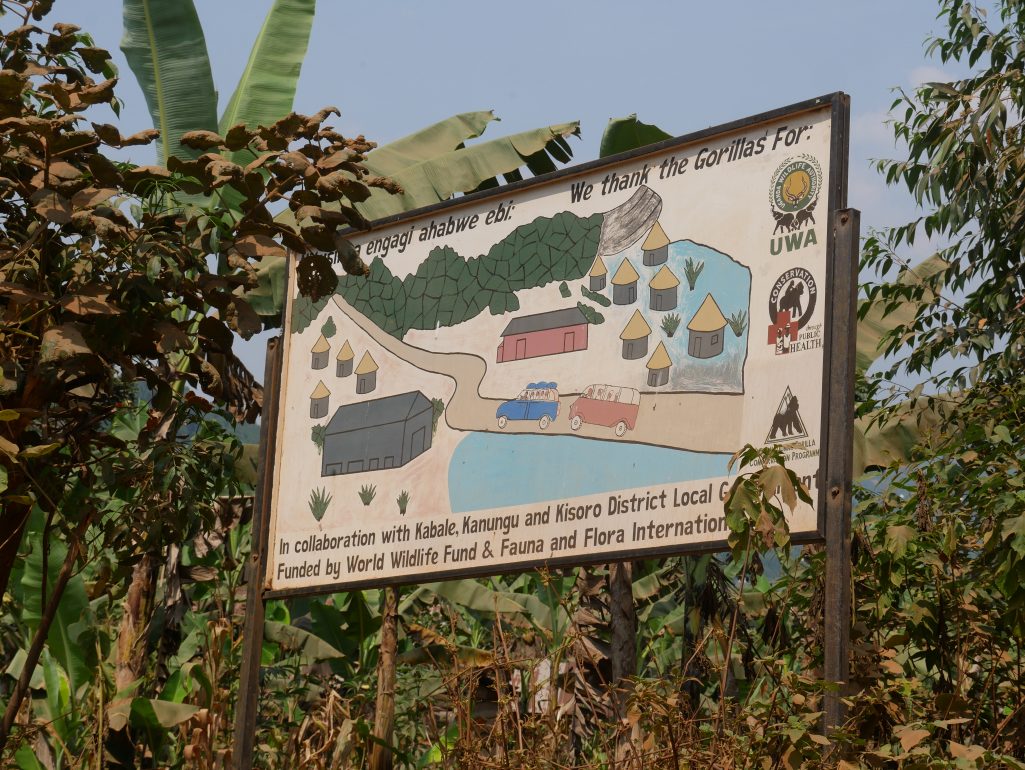
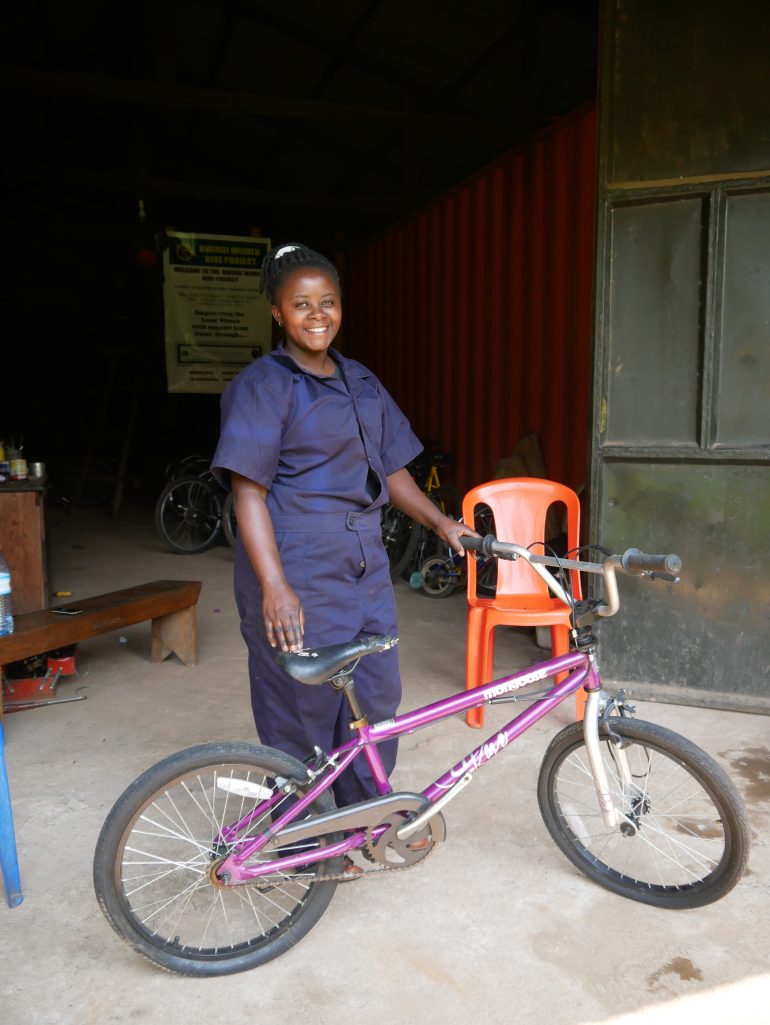
We leave the eco-lodge the next day and skirt round the edge of the vast forest then dive back into it. The roads are very steep and very high, topping out at a breathtaking 2500m. A tour group on e-bikes pass us with sympathetic/smug looks and later we meet a pair of Poles who have ridden up from Rwanda. Other cycle tourists have been few and far between so it’s nice to share stories with some fellow two-wheeled travellers.
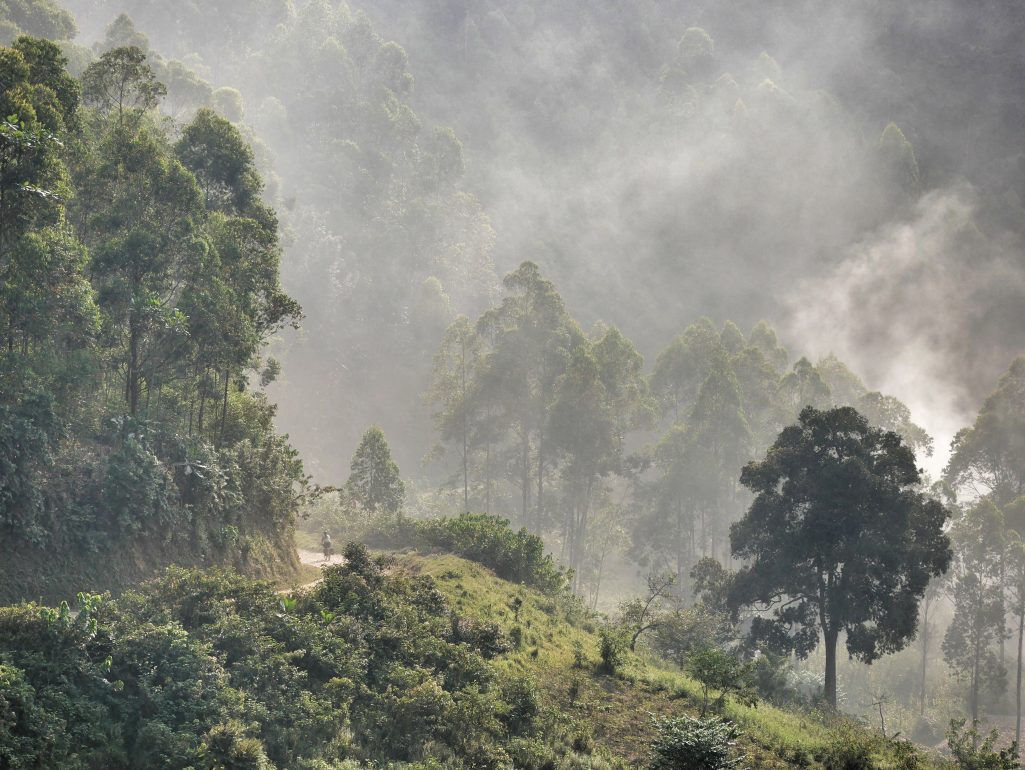
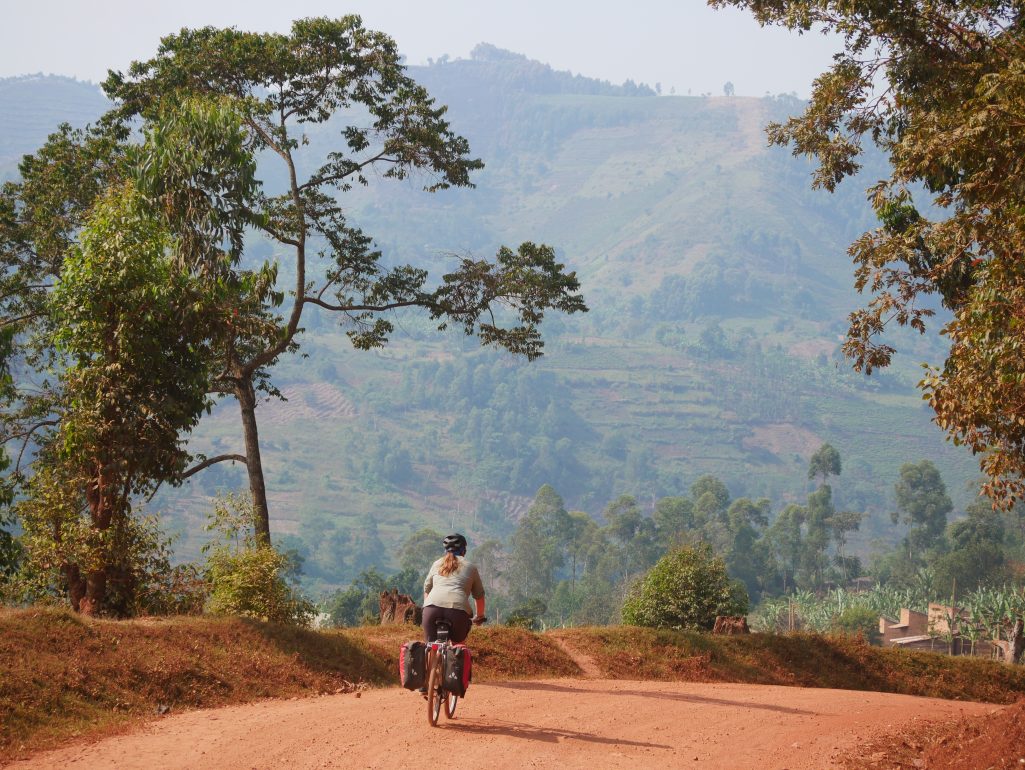
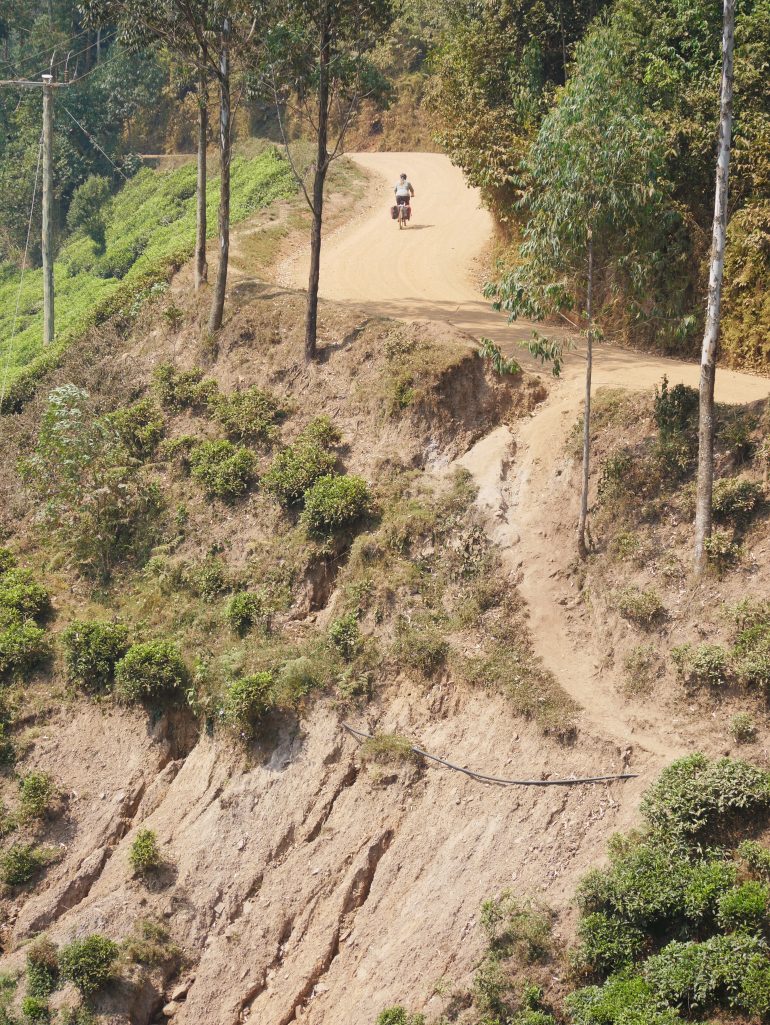
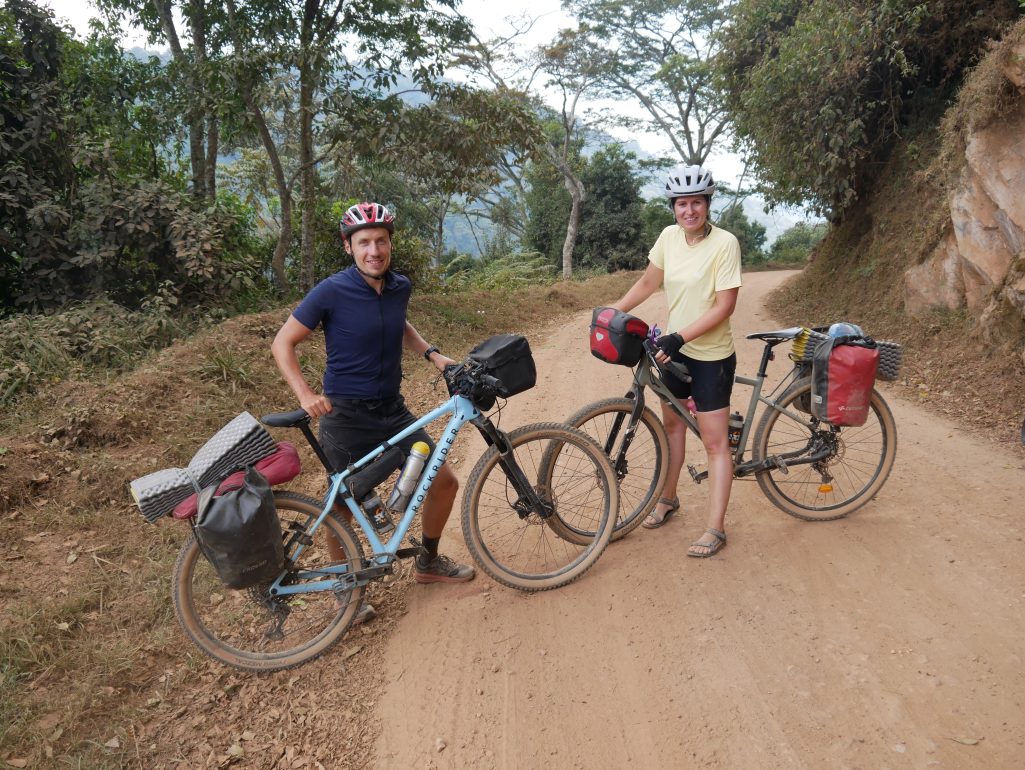
After two days we reach the gate at the edge of the park and the tree line ends abruptly to return to intensive farmland again. A stark reminder of what would have happened if the forest had not been protected: There would have been nothing left.
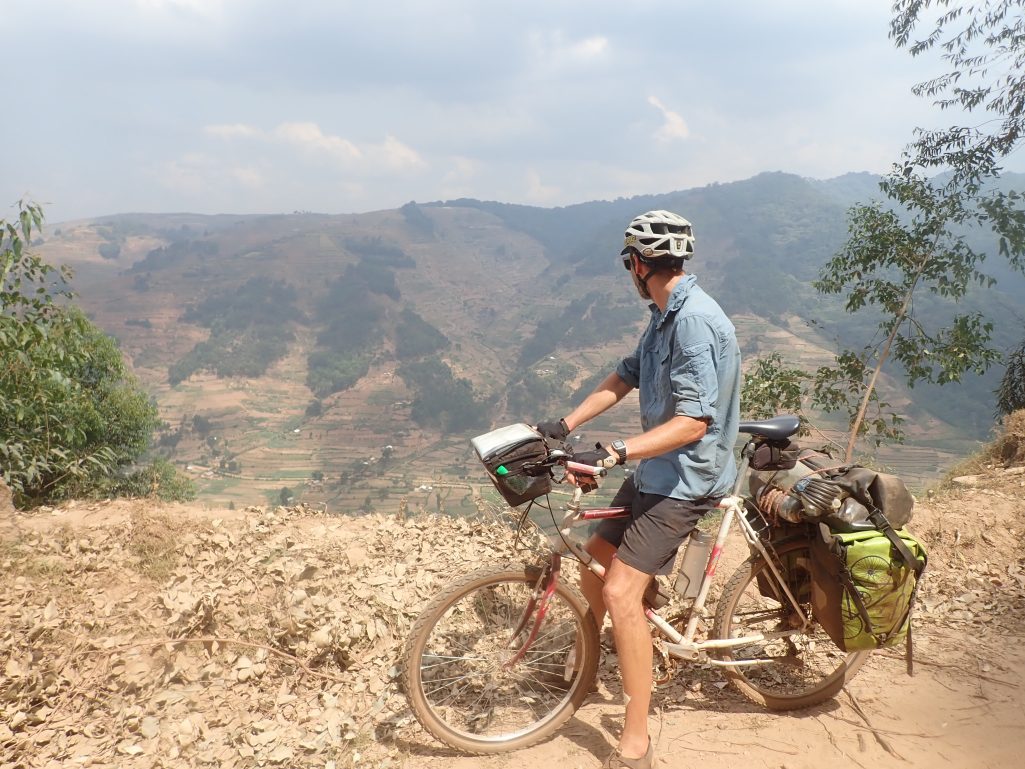
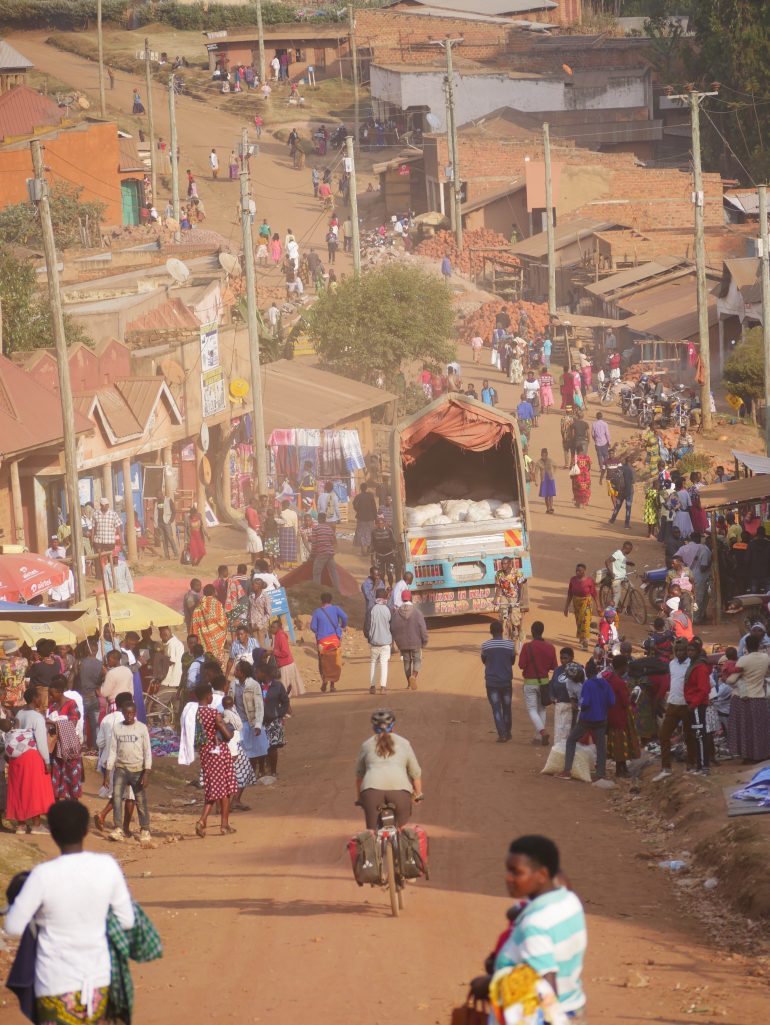
Dropping down to Lake Bunyonyi we follow the shoreline, looking down to the many islands. This is a birders’ paradise and the name means ‘Lake of Many Small Birds’. Finally we get to see some of Uganda’s national bird, the great crested crane, up close. The original punks of the bird world. I’ve become a novice twitcher during the trip and have enjoyed spotting at least seven types of kingfisher!
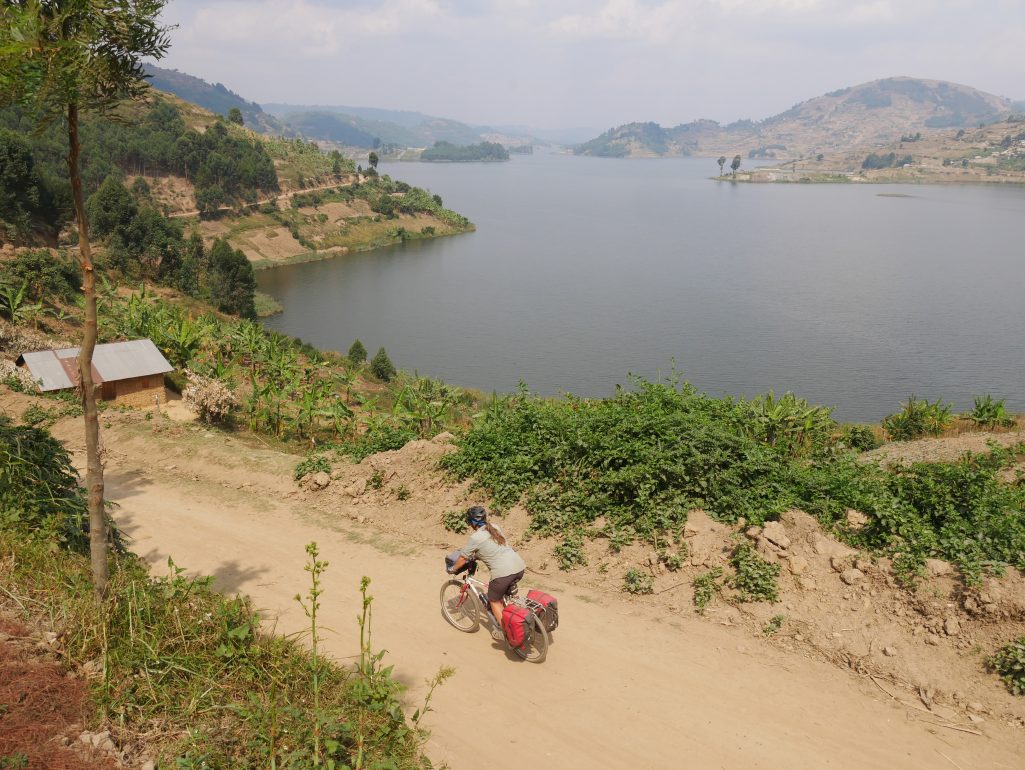
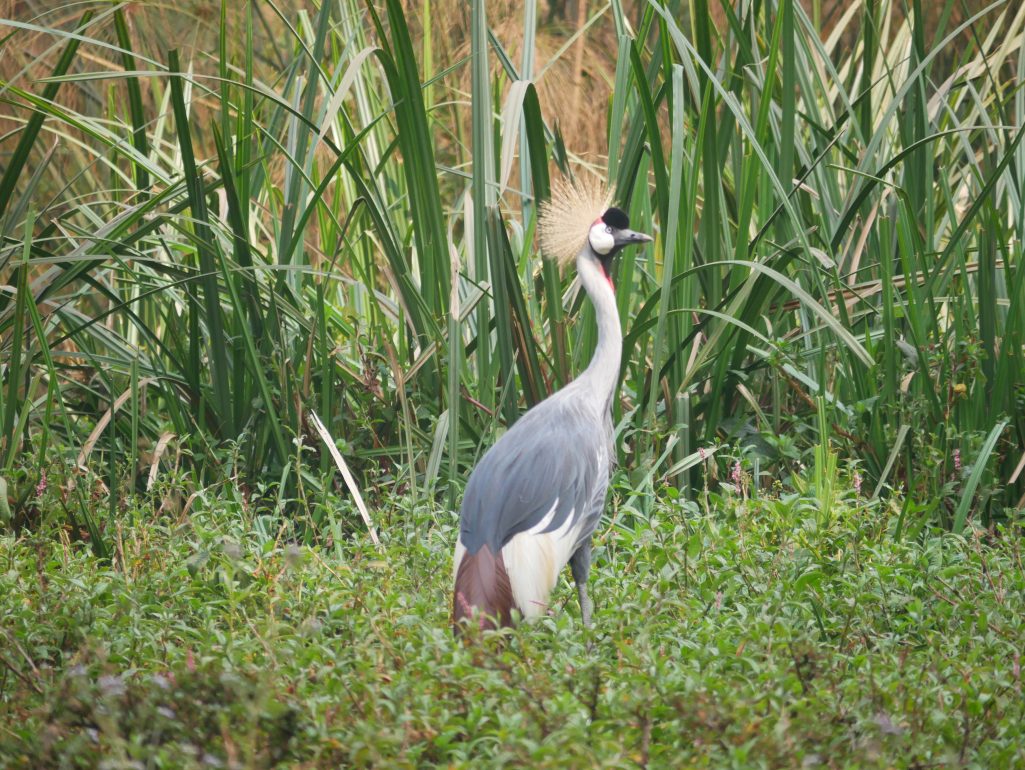
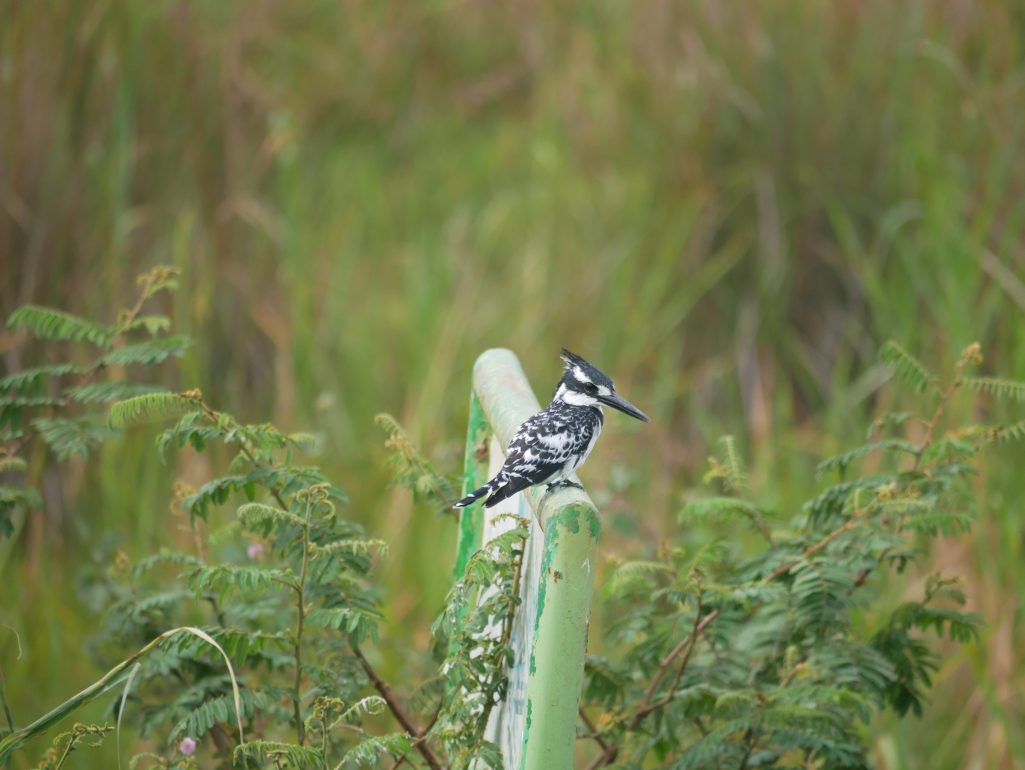
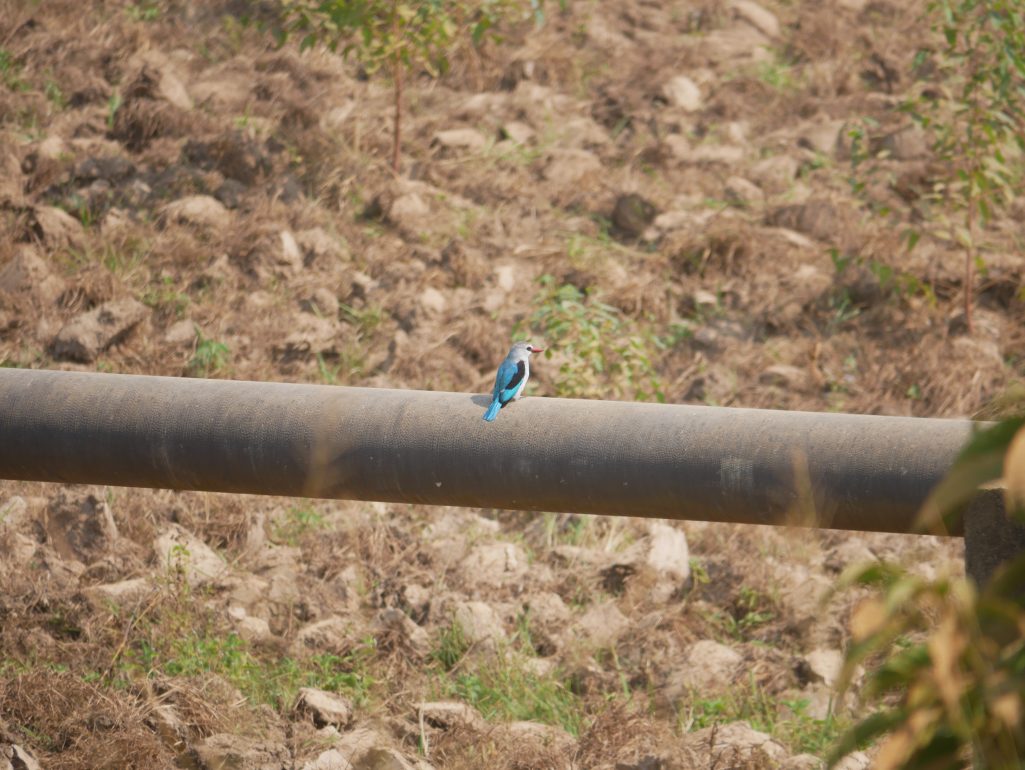

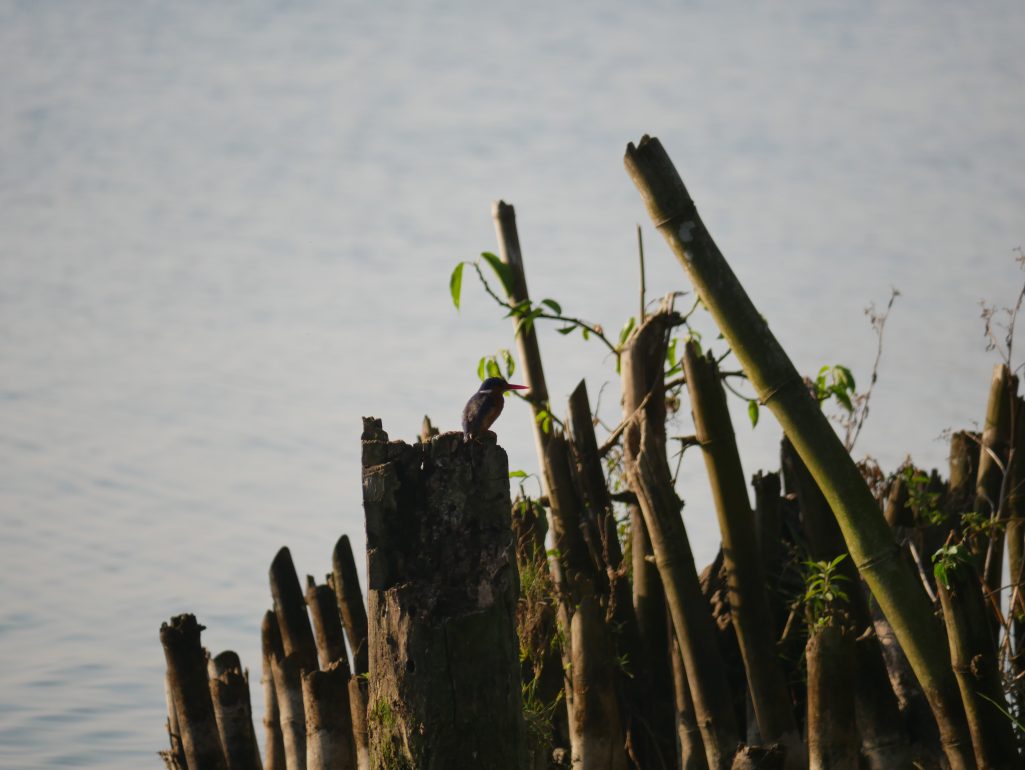
The dust on the roads is now getting a lot worse as we reach peak dry season. Everything we own has an orange tinge and we have to try and cover our mouths when cars drive by. Not easy when you’re hauling up another 2000m high pass. It marks the end of this mountainous section though so it’s with some relief that we drop down onto a flat smooth road for an easy spin to Mbarara.
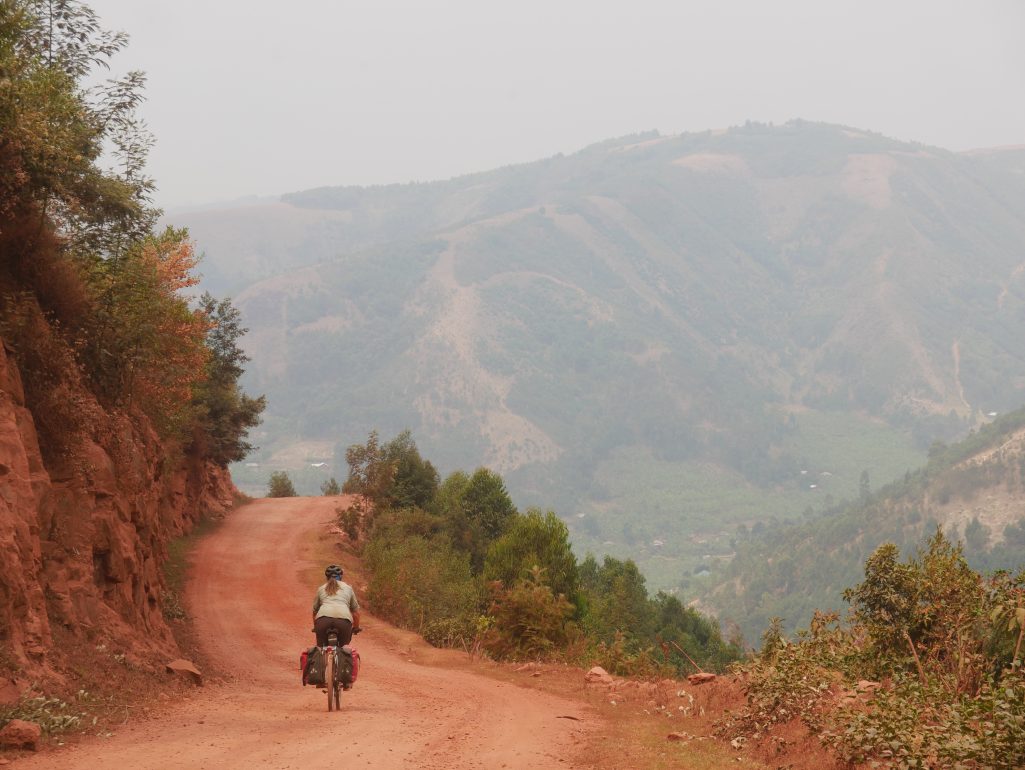
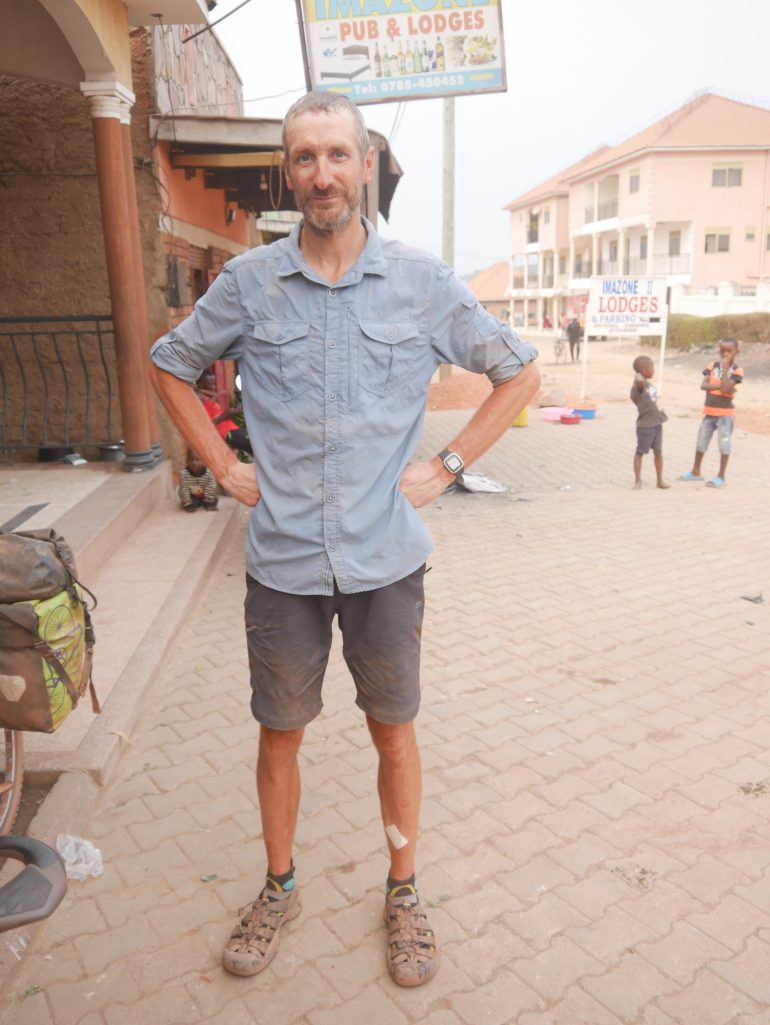
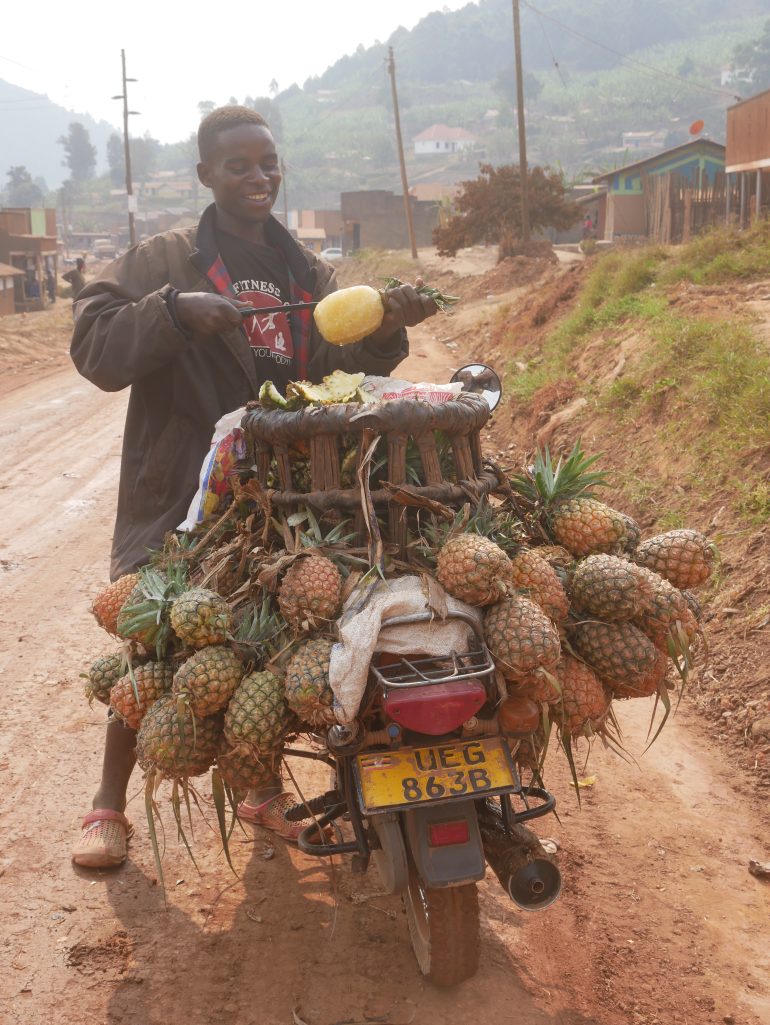
Feeling refreshed, the next day we head out to Lake Mburo national park. This is the only park that you’re allowed to cycle in, provided you hire an armed ranger. We had arranged to meet Aaron and his AK47 at the entrance and he arrives in the back of a pickup at the same time as us. His bike is in a poor state of repair so I give it a quick service before we set off. We enter the park and are immediately surrounded by different animals.
Herds of zebras, impala and small groups of waterbuck line the road. Warthogs scamper around with their tails in the air. Buffalo amble between the trees and are one of the reasons we need Aaron’s gun, rogue hippos and leopards being the other.
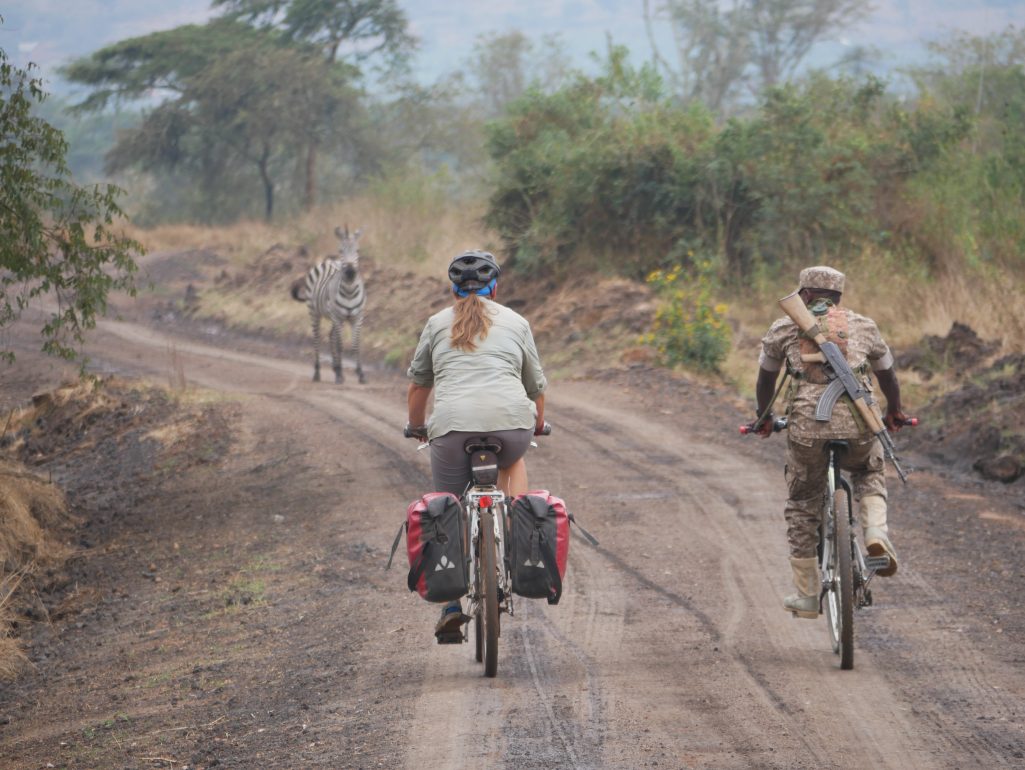
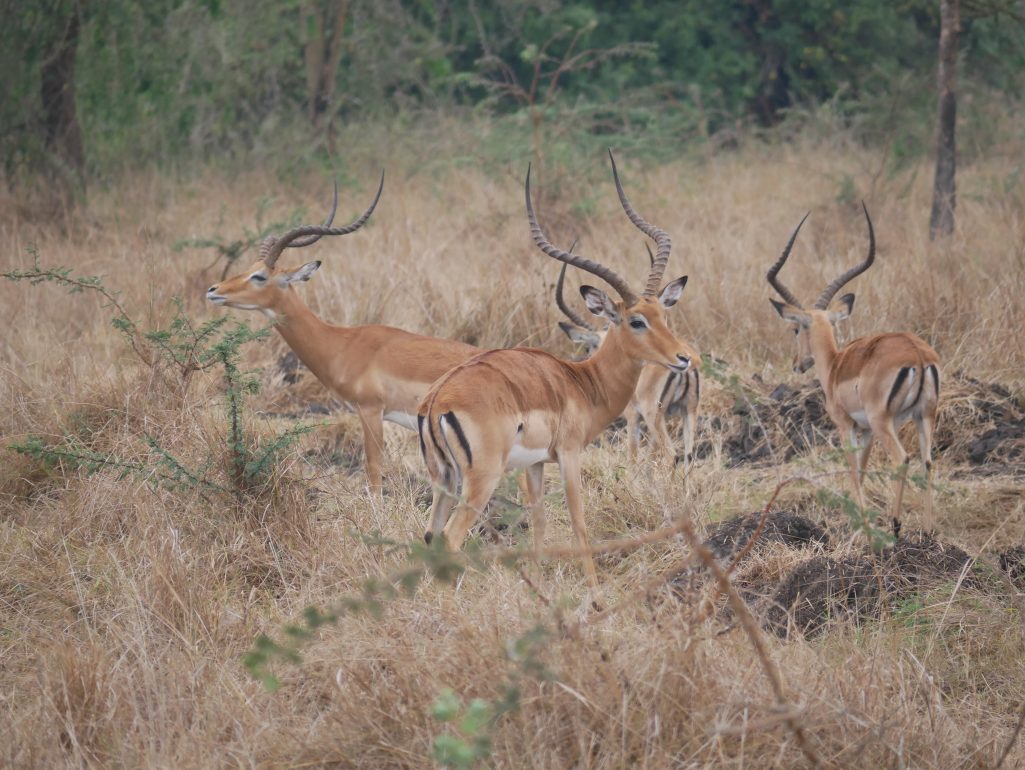
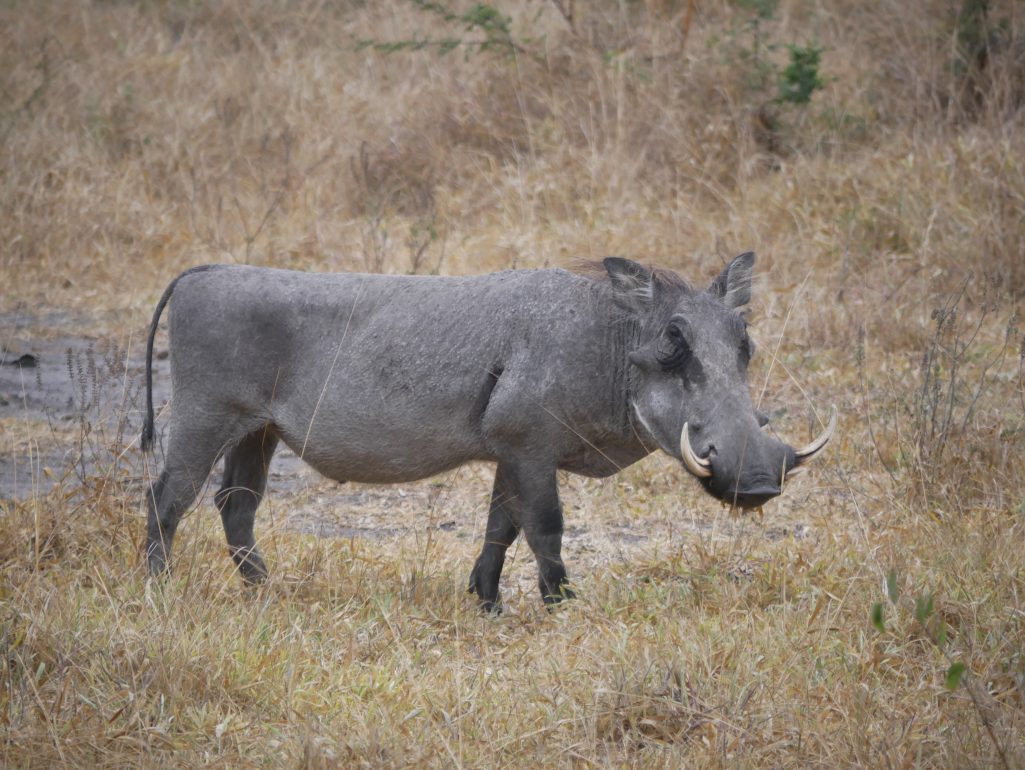
The main event though comes as we join an acacia lined sand track. We spot them from a distance above the tree tops and Aaron motions for us to leave the track. Soon we are right alongside a tower of giraffes so we dismount and walk with them for a while. Evolution works in wondrous ways, and these graceful yet ridiculous animals are an extraordinary sight.
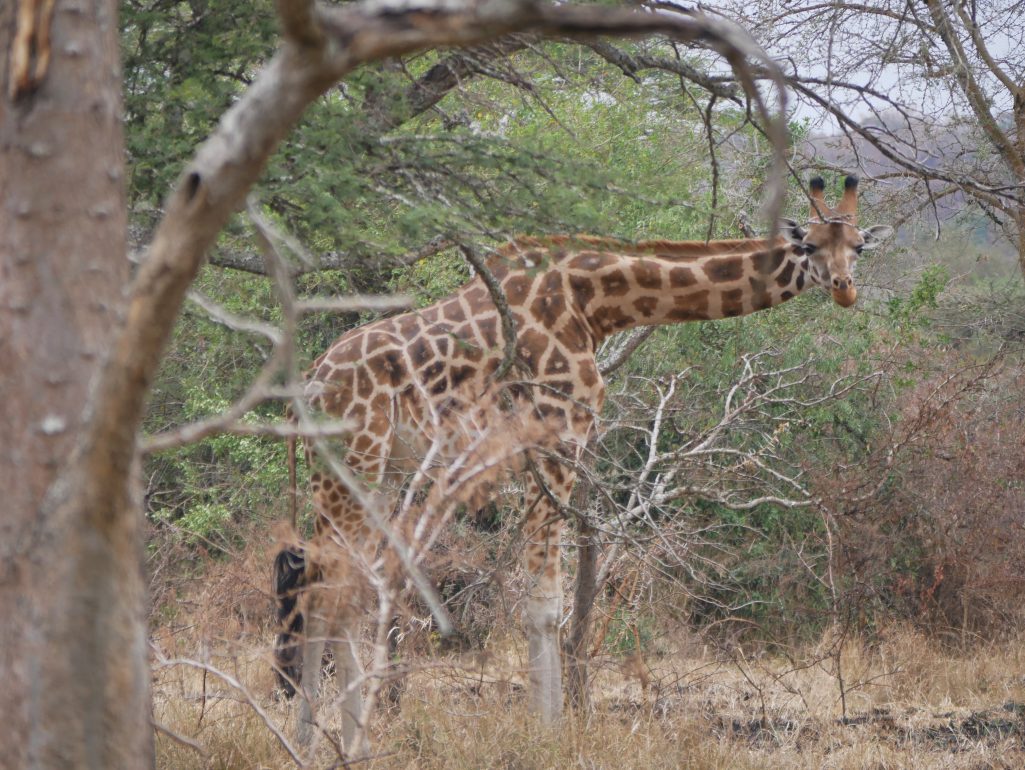
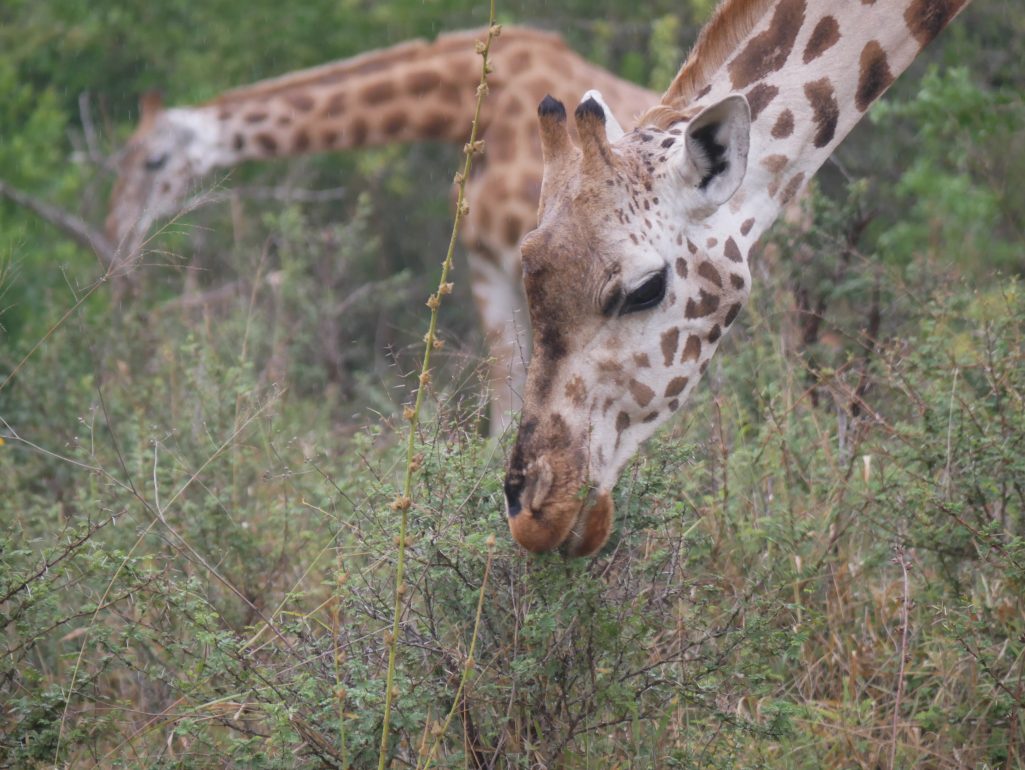


Before leaving the park we are lucky to see some elusive Eland antelope, the largest antelope breed and notoriously shy. As well as offering protection, Aaron was more than worth his fee with his knowledge of the park and its inhabitants.
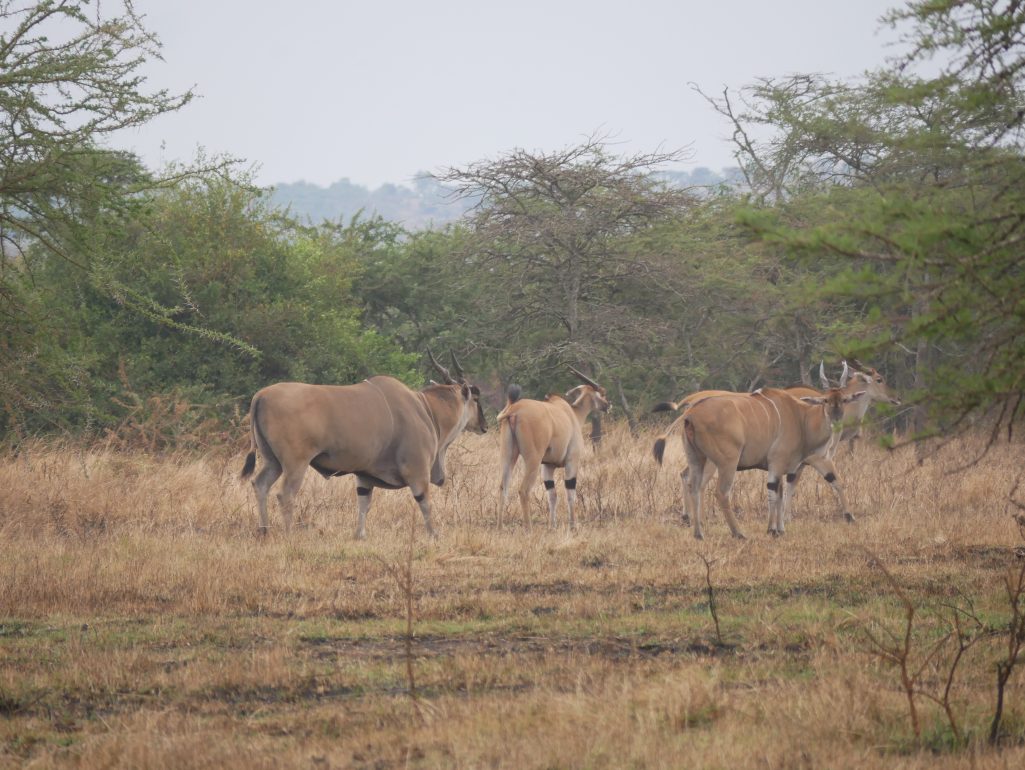
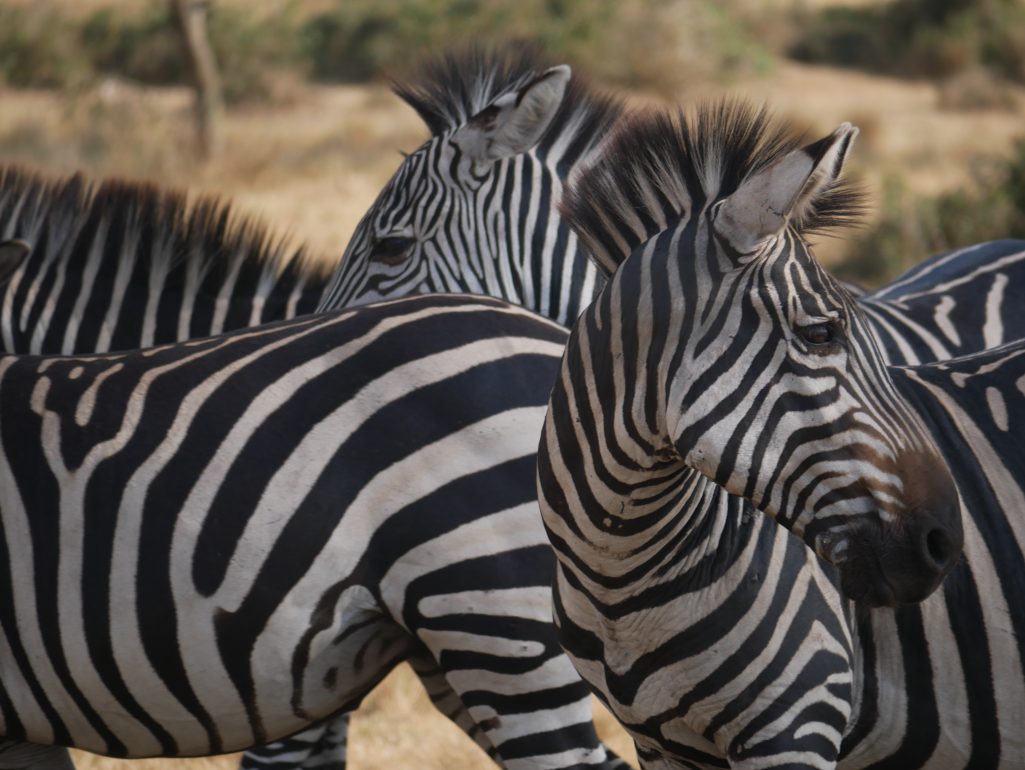
Leaving the animals behind, we pass through Lyontonde and on an innocuous descent I hear a loud bang and the bike judders to a halt. I’d just been thinking how impressive our bargain bikes had been, having carried us 1800km on some of the continent’s roughest roads, but hitting a large rock at speed is just too much for the poor Peugeot and it has killed my rear rim. Trying to stay calm I grab the damaged wheel, leave Kirsty with the remains of my bike and hop on a bodaboda back to Lyontonde to a bike shop I’d seen earlier. On arrival I inspect the ramshackle machines they have on display and find one that looks half reasonable. After some negotiation they agree to sell me the rear wheel and between us we swap the parts I need from the old wheel to the new.
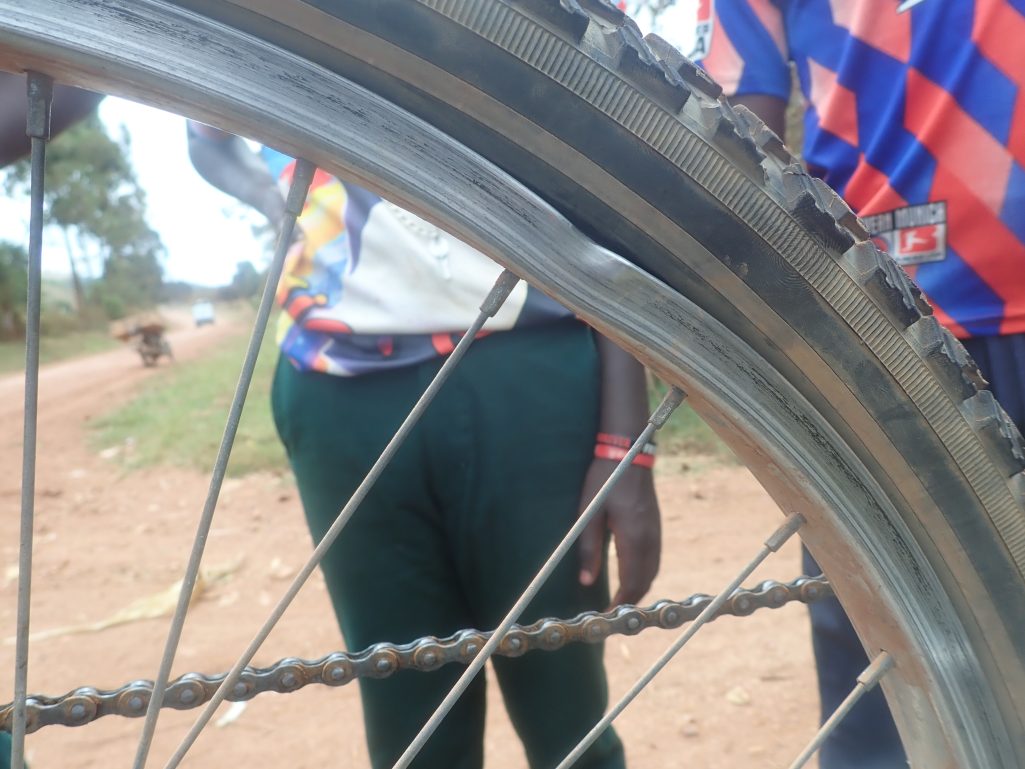
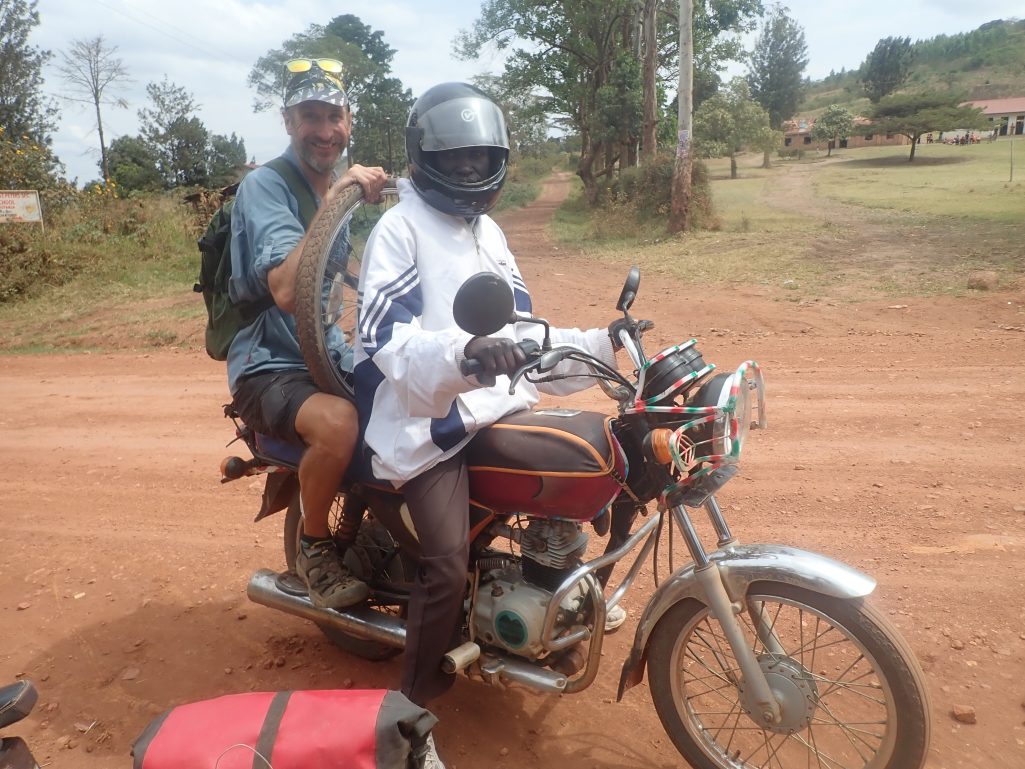
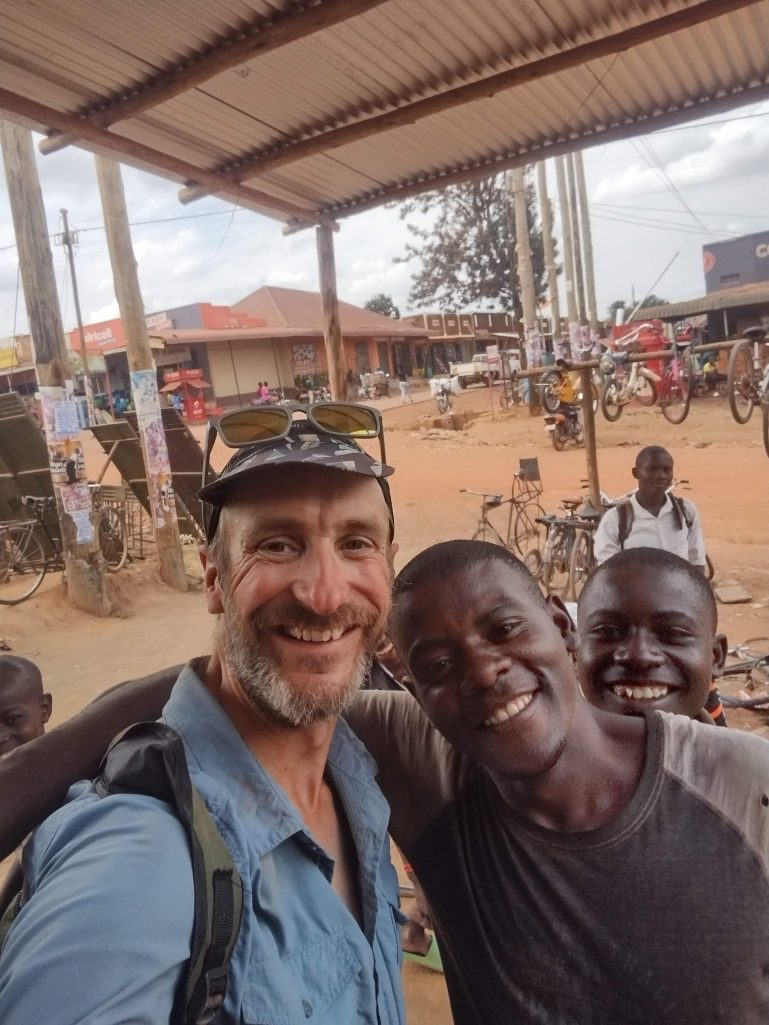
I hop on another bodaboda and find Kirsty surrounded by children from the nearby school and discussing English football teams (not her specialist subject). We give a bike maintenance and English lesson to the crowd and soon we’re off again. The whole episode has taken about an hour and a half and demonstrates that riding an old 26″ wheel with rim brakes was the perfect choice. Anything with modern components would have meant a long bus trip to Kampala and back, taking days. Luckily we’d brought the right bikes.
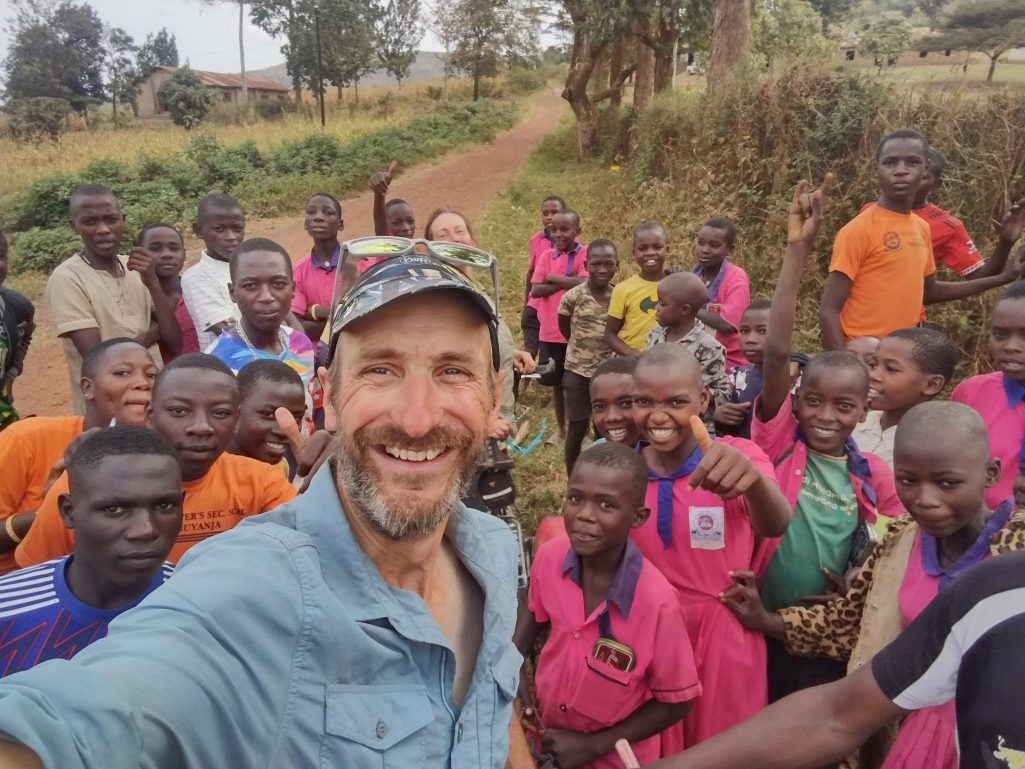
Riding first to Masaka we then spin on to catch the ferry out to the Sesse Islands in the vast expanse of Lake Victoria, sharing the boat with a lively bunch of Gomba Lions FC supporters.
We’re at the stage where we’re trying to savour all the little things that have made this journey unique: The hundreds of shouts of ‘mzungo!’ from the children, refueling on rolex and fresh fruit, catching sight of another incredible bird, surviving yet another poorly timed overtaking manoeuvre, the smiles and calls of ‘safe journey’, being woken by the combined sound of the call to prayer and loud music from an early morning party.

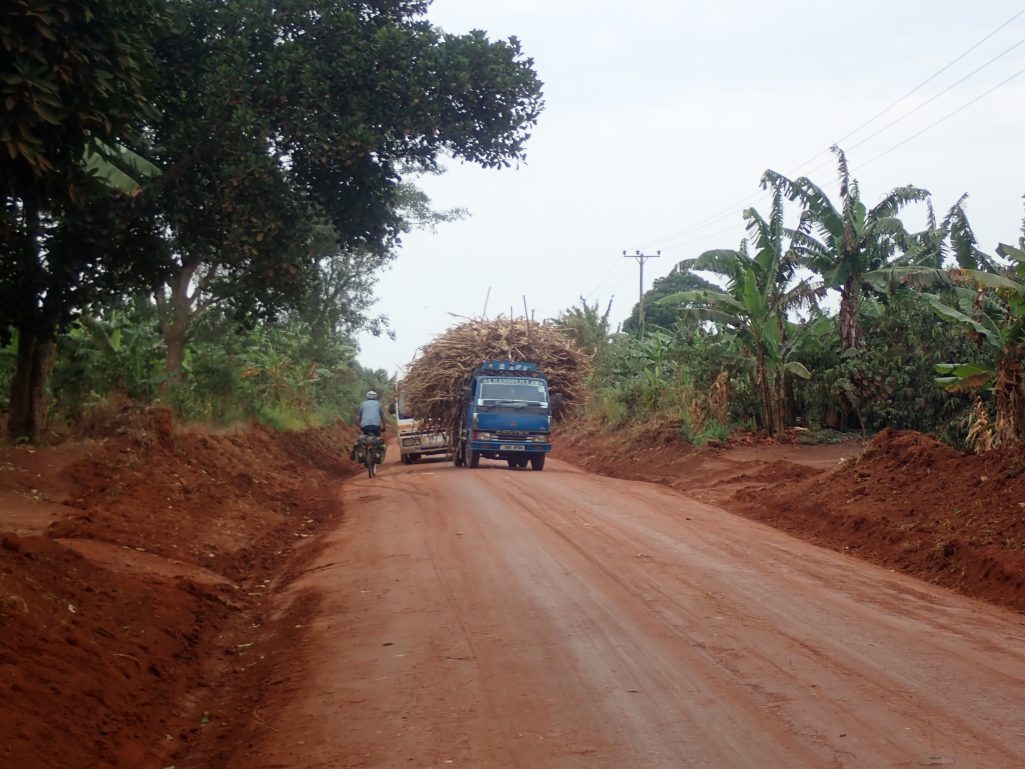
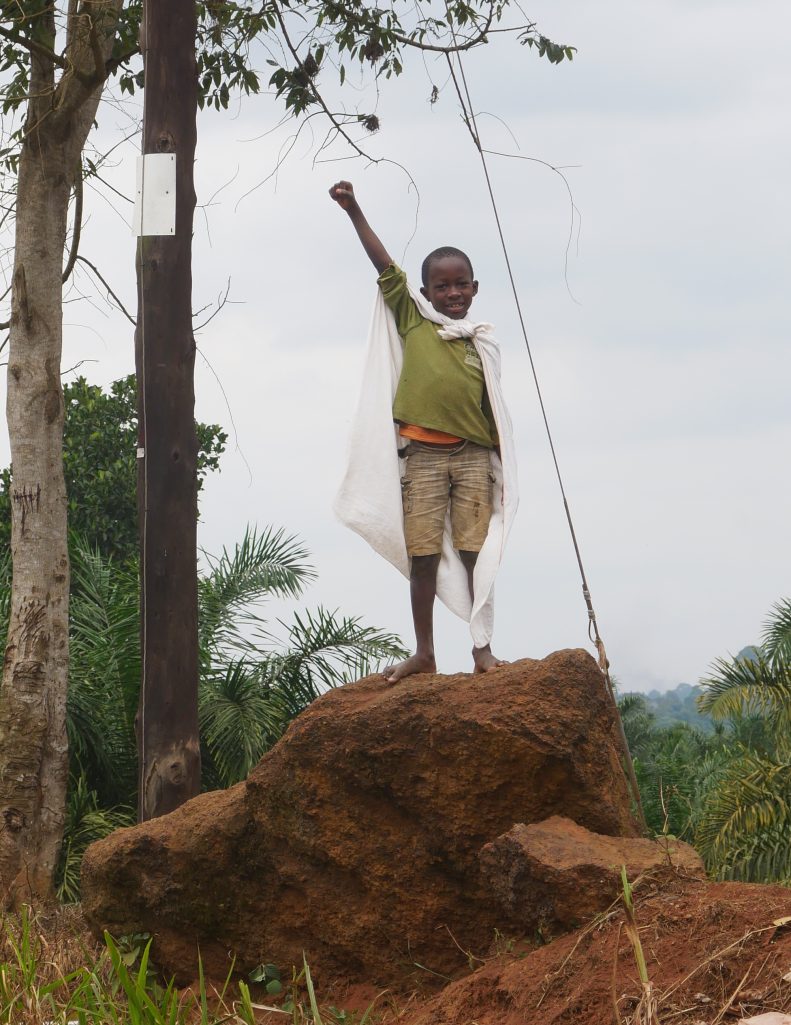
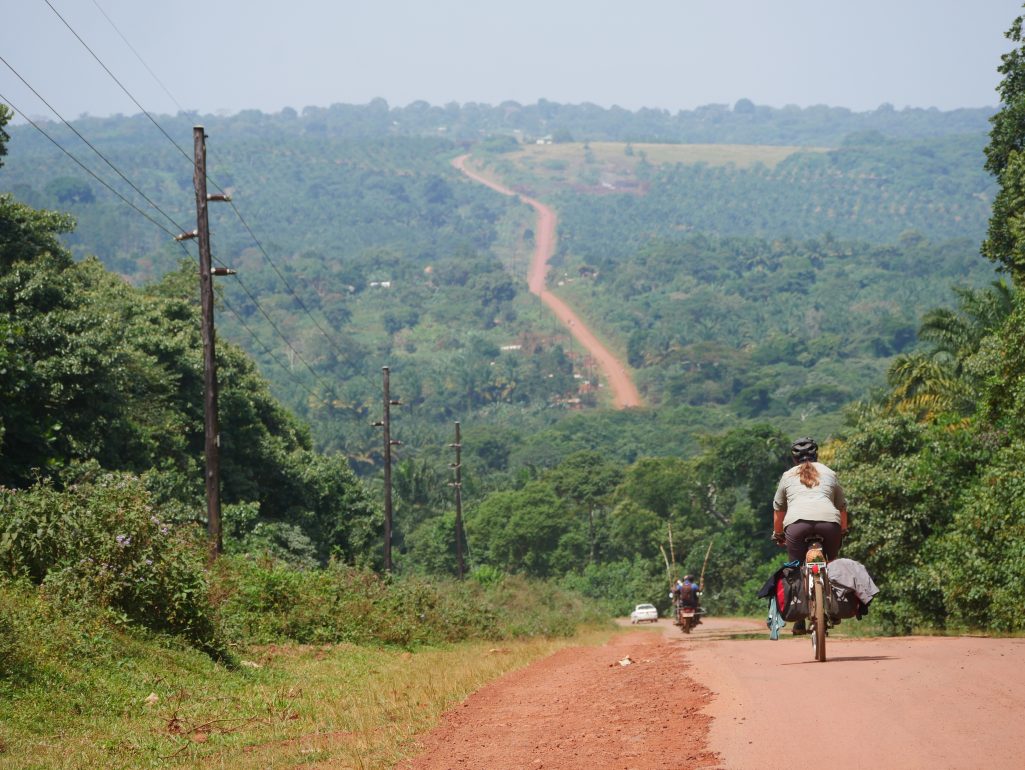
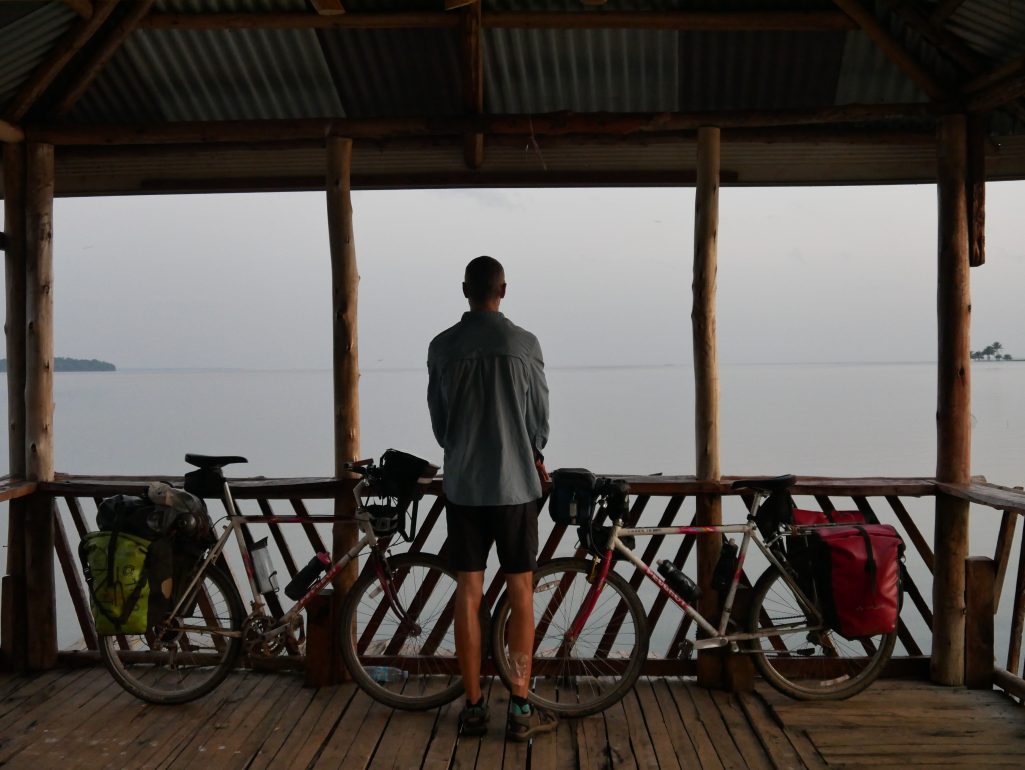
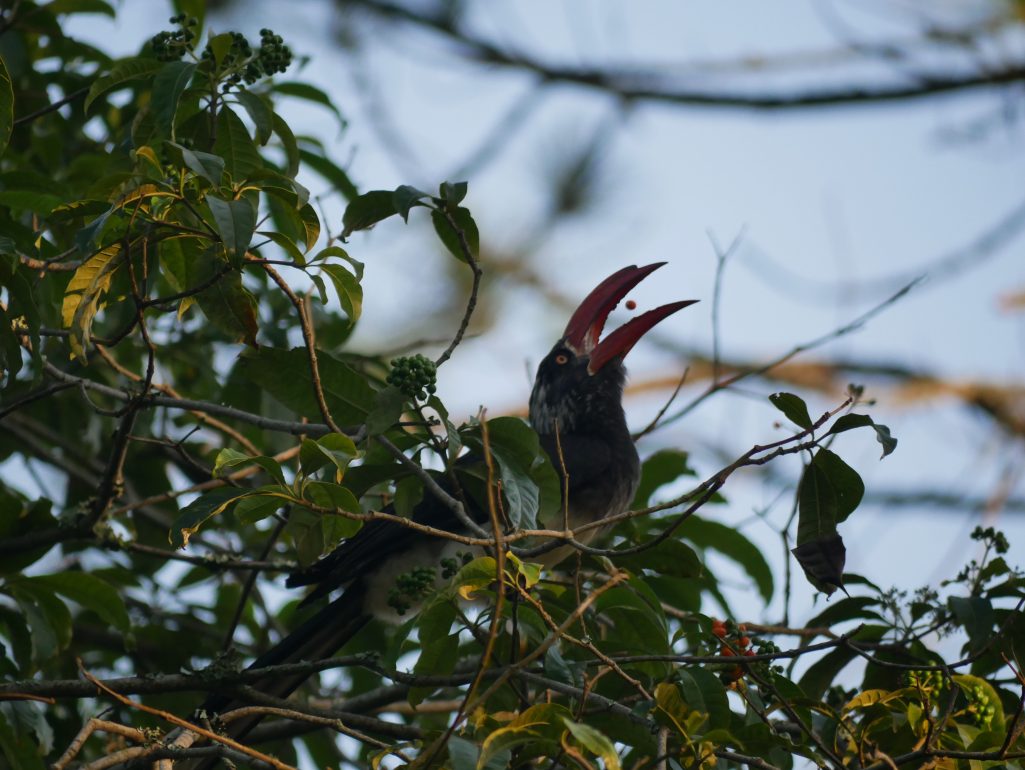
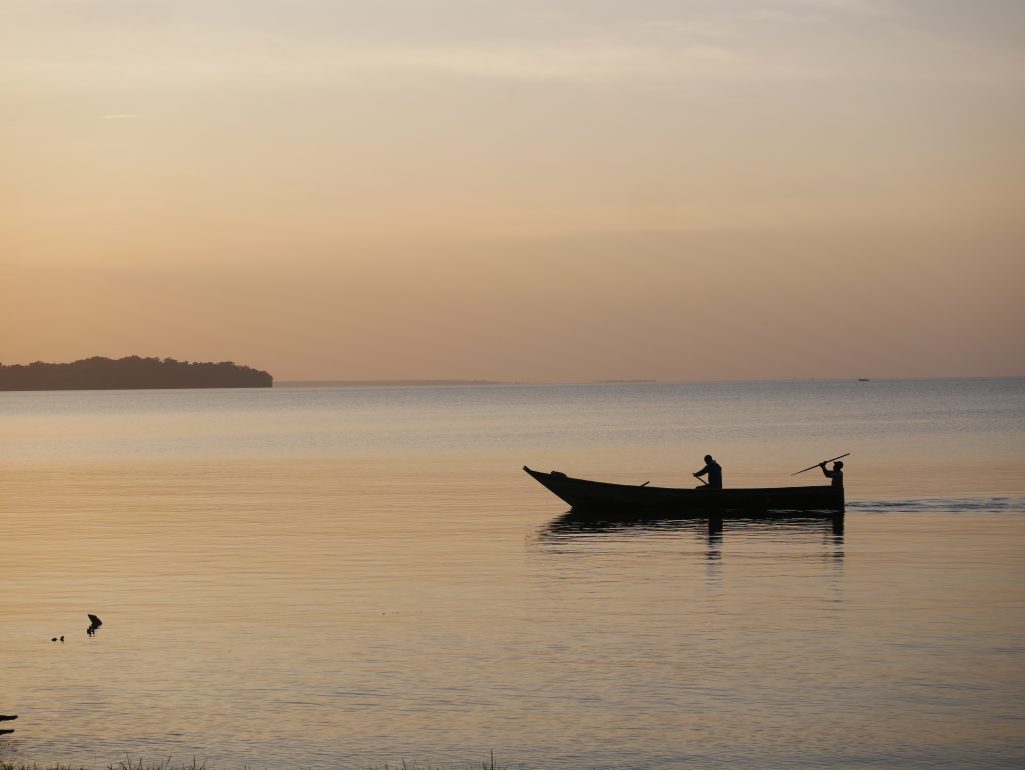
After a night on Bugala island we take a 3.5hr ferry to Entebbe then find someone to take us across the bay in a small boat to begin our final ride up to Kampala. The traffic gets heavier and we encounter the most dangerous thing of the trip so far, a swarm of tuktuks.
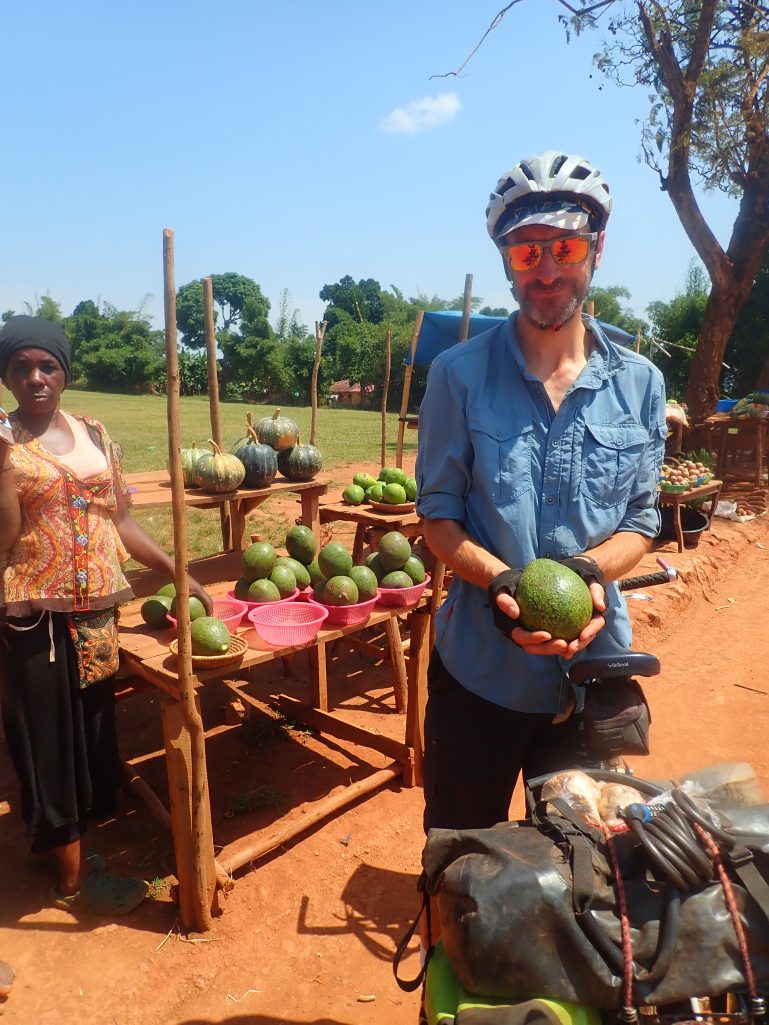
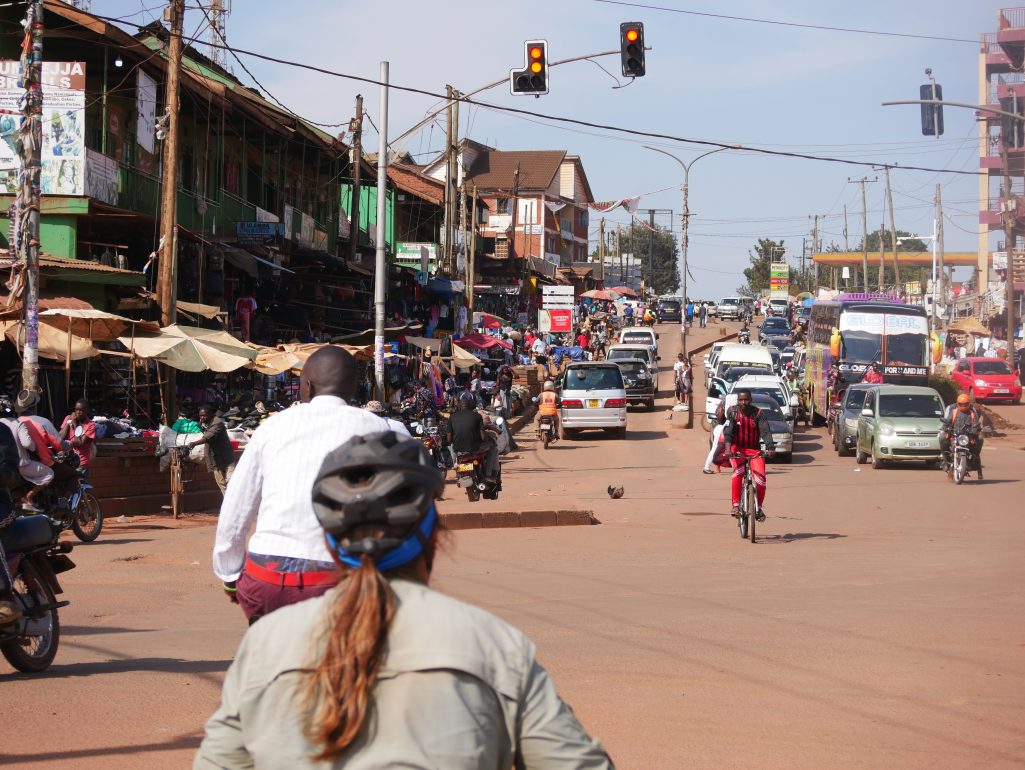
While trying to keep a 360 degree view around us and expecting the unexpected, we eventually arrive at our end point, The Red Chilli Hideaway, safe and sound. Our lap of Uganda is complete.
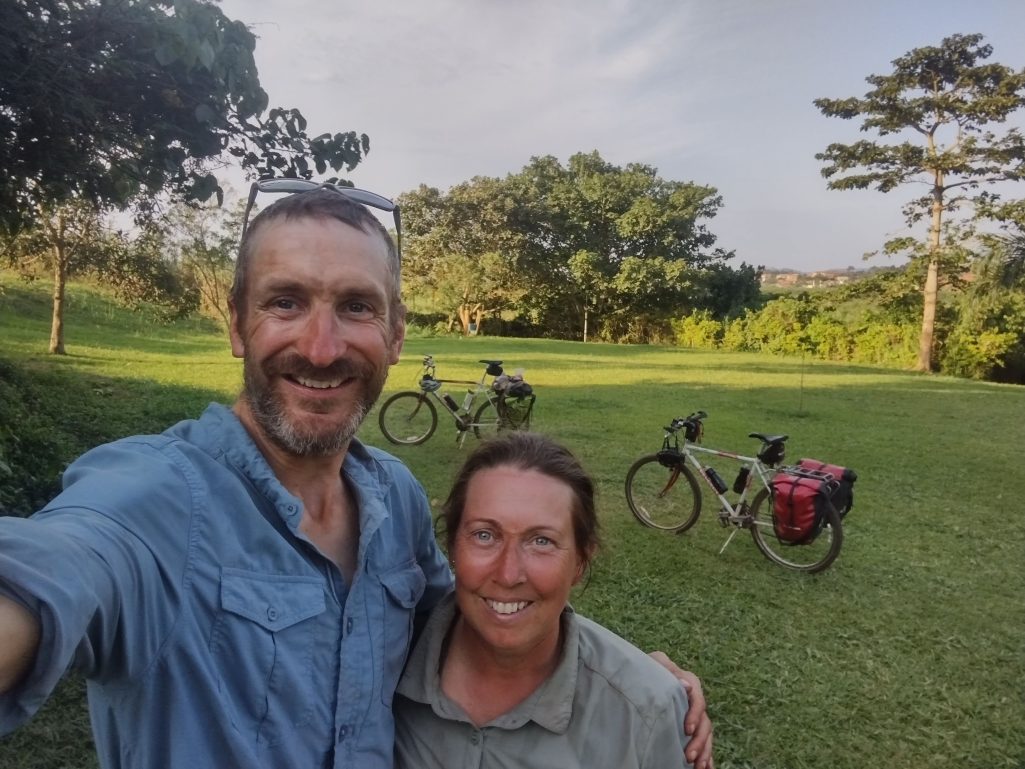
We have become quite attached to our trusty Peugeot bikes. Both of them were found on Facebook marketplace and rescued before they were thrown on the scrap heap. With a few upgrades from Evesham Adventure Playground and some other bike recycling projects they were tour ready. They have put up with a lot of abuse but kept coming back for more during our 2000km journey.
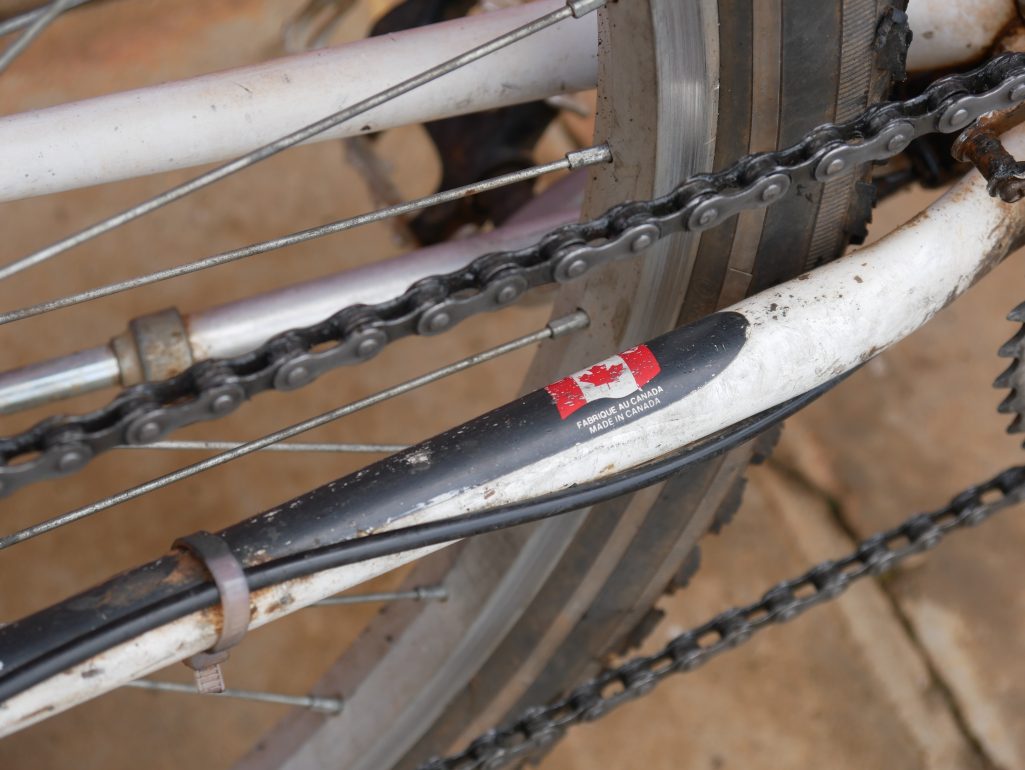
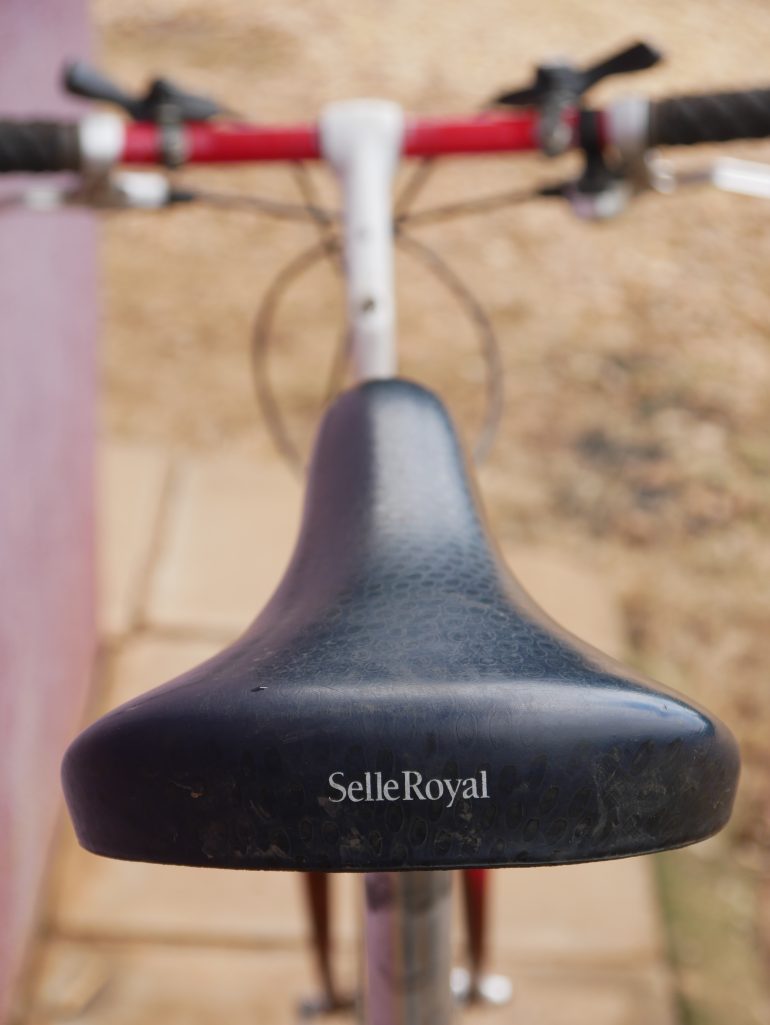
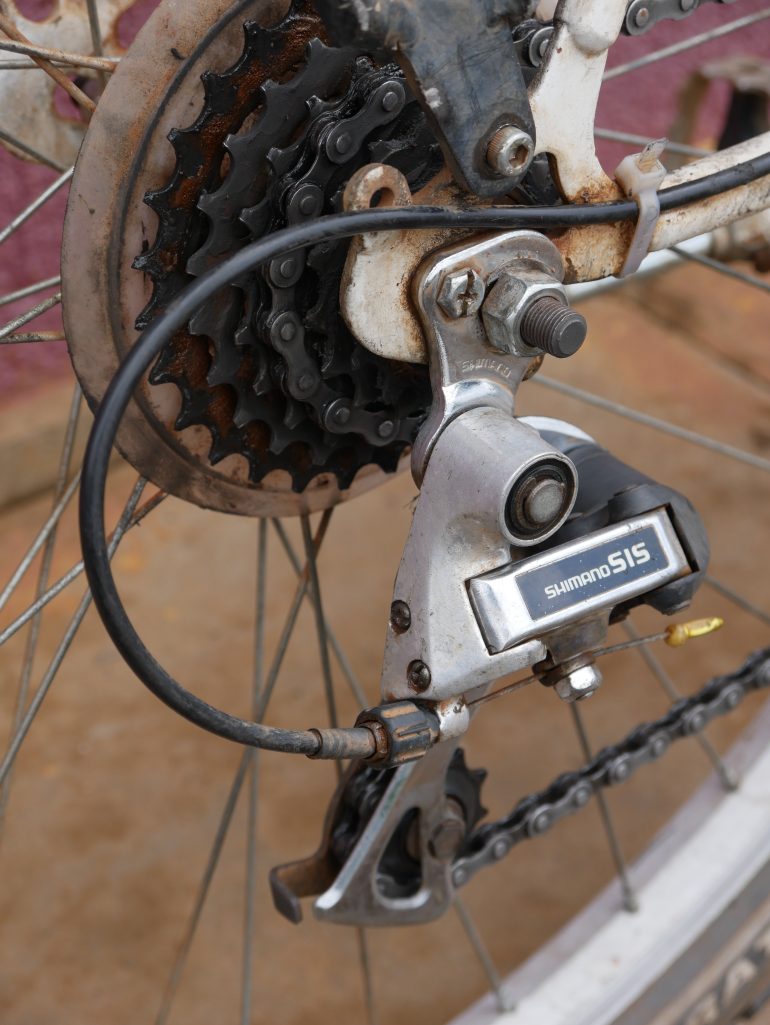
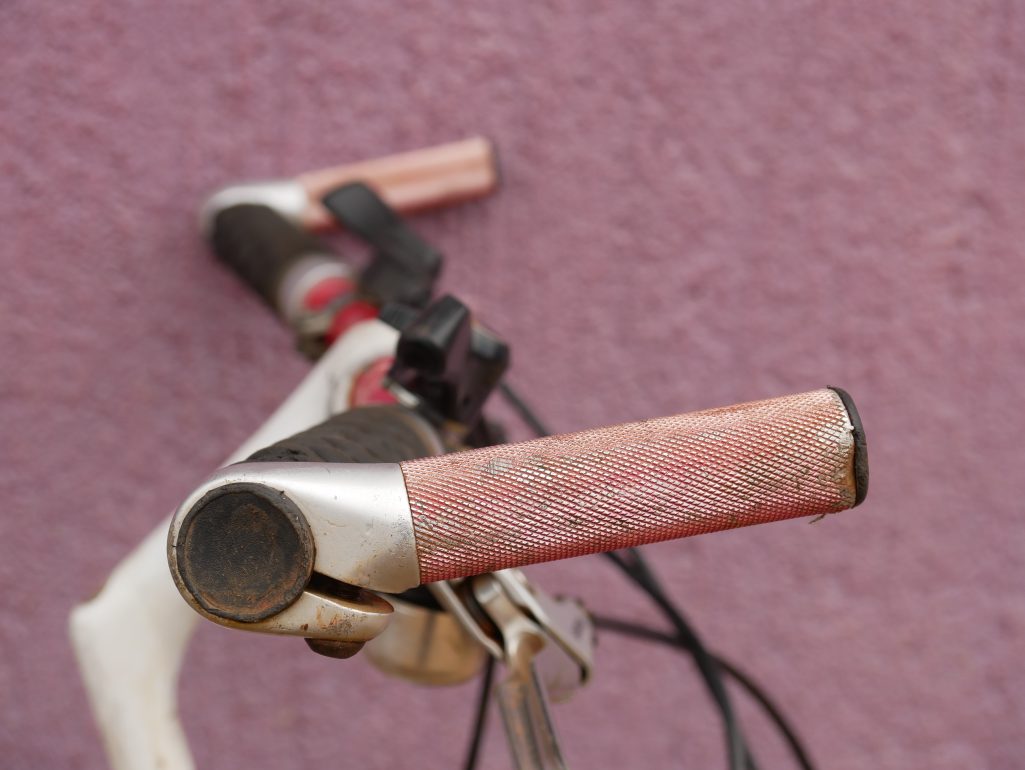
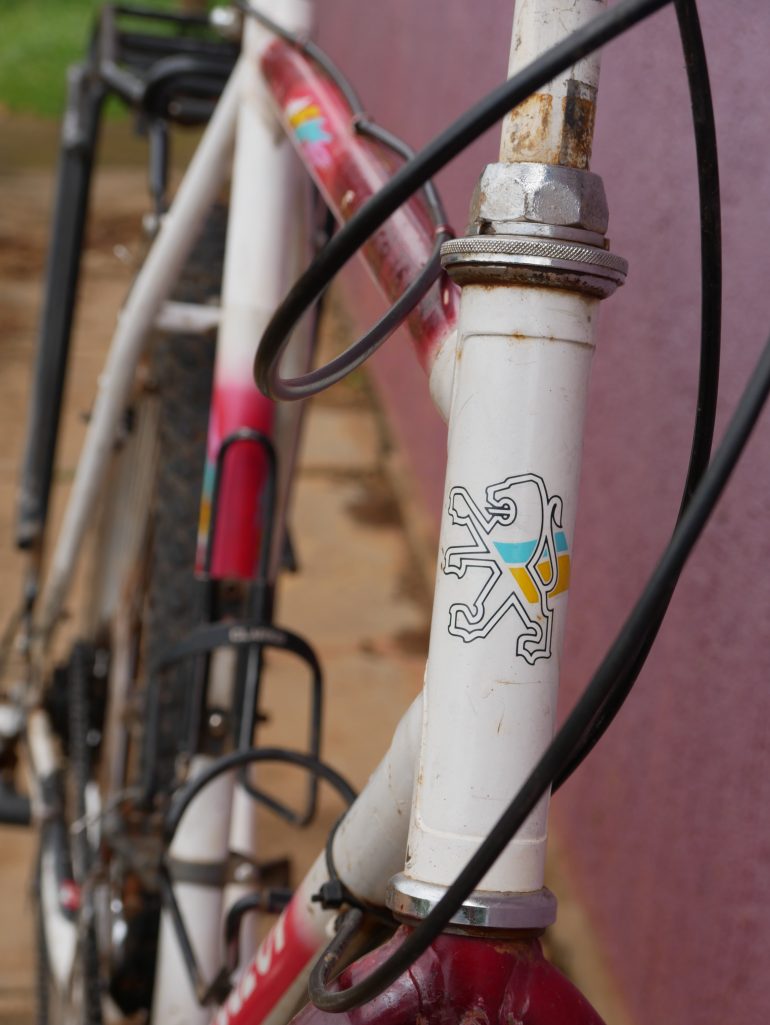
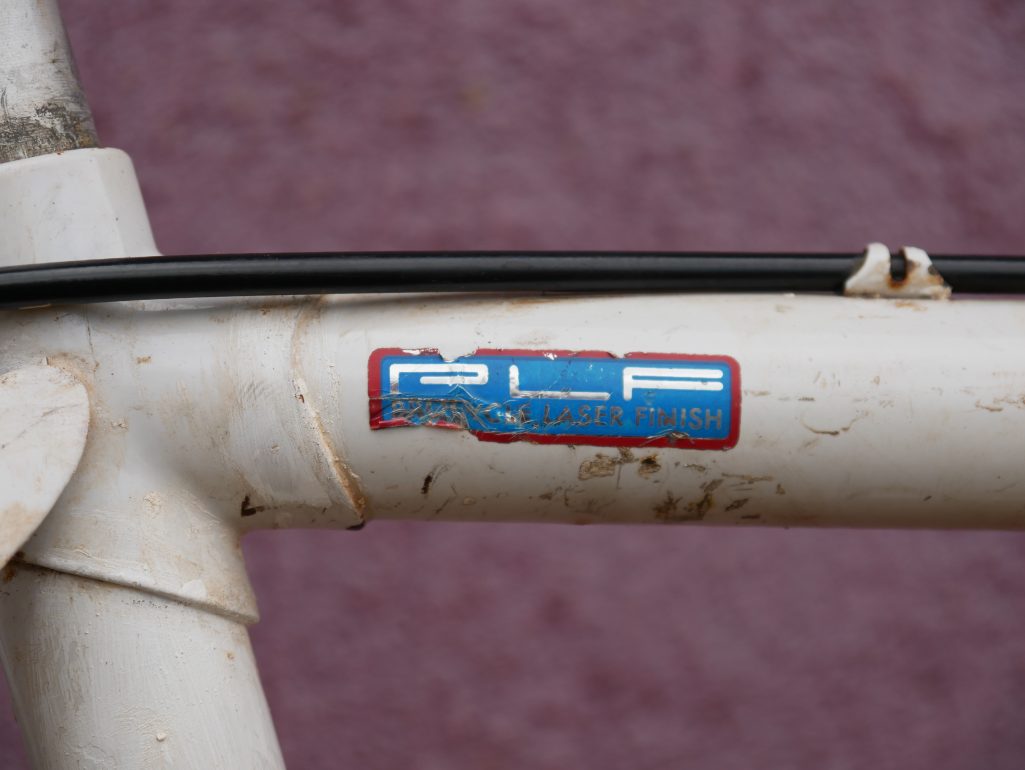
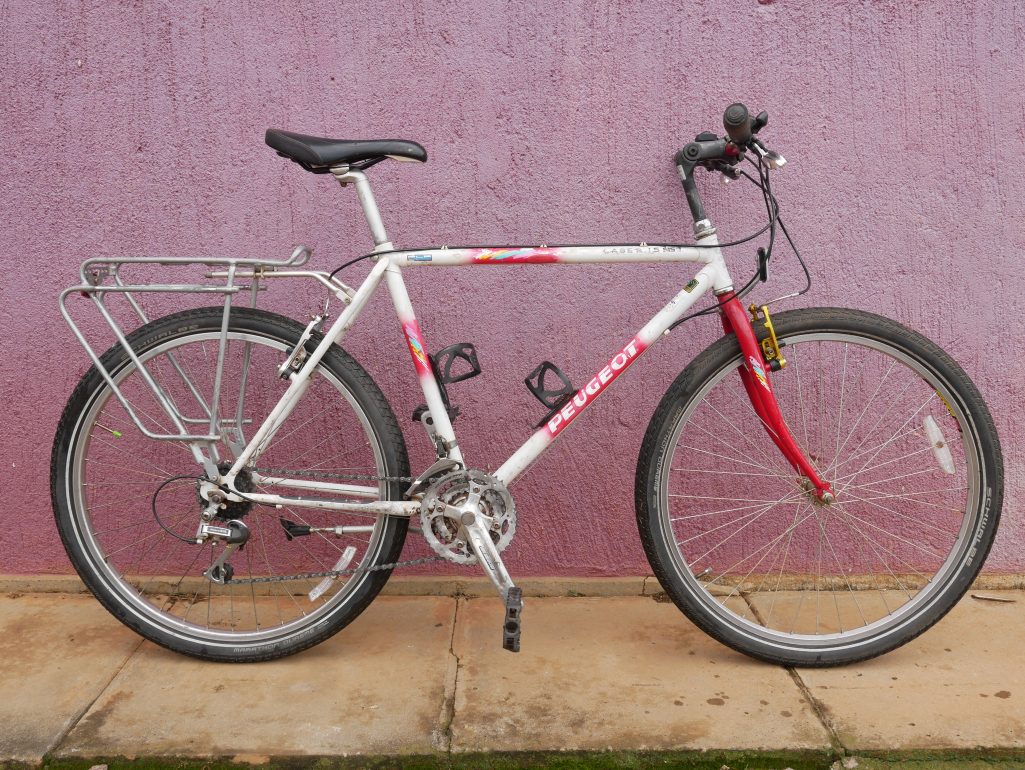
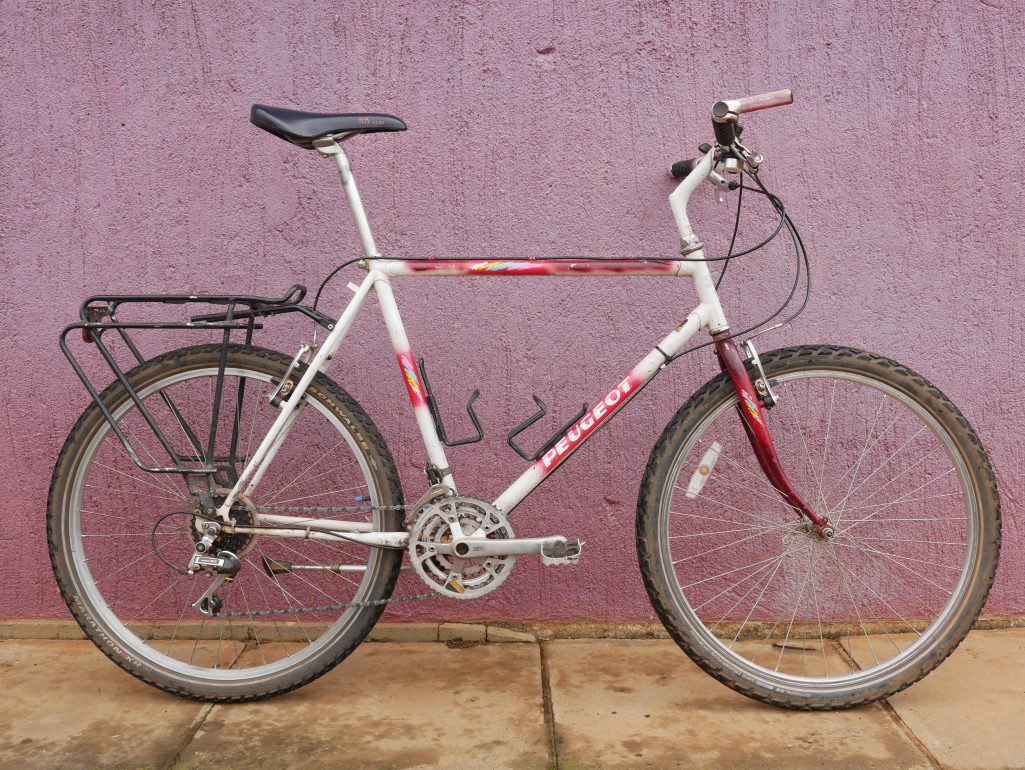
But our time with them has come to an end. We ride through the back streets of Kampala to reach the offices of Platform for Labour Action where we meet with Lydia and her team. One of their projects is to help eradicate child labour through training and education. Two graduates of their scheme are Shafiq and Abdul who now work as a hairdresser and mechanic. Currently their trip to work is a 2.5hr walk leaving them exhausted before they even start with their jobs.
Lydia hands over our bikes to them and the smiles say it all. Our small contribution will have a huge impact on the boys and help them progress their careers as well as allow them to support their families.
We’ll be sorry to see the bikes go after everything we’ve done together but they have a whole new adventure ahead of them now and they are much more valuable here than with us.
An emotional day.
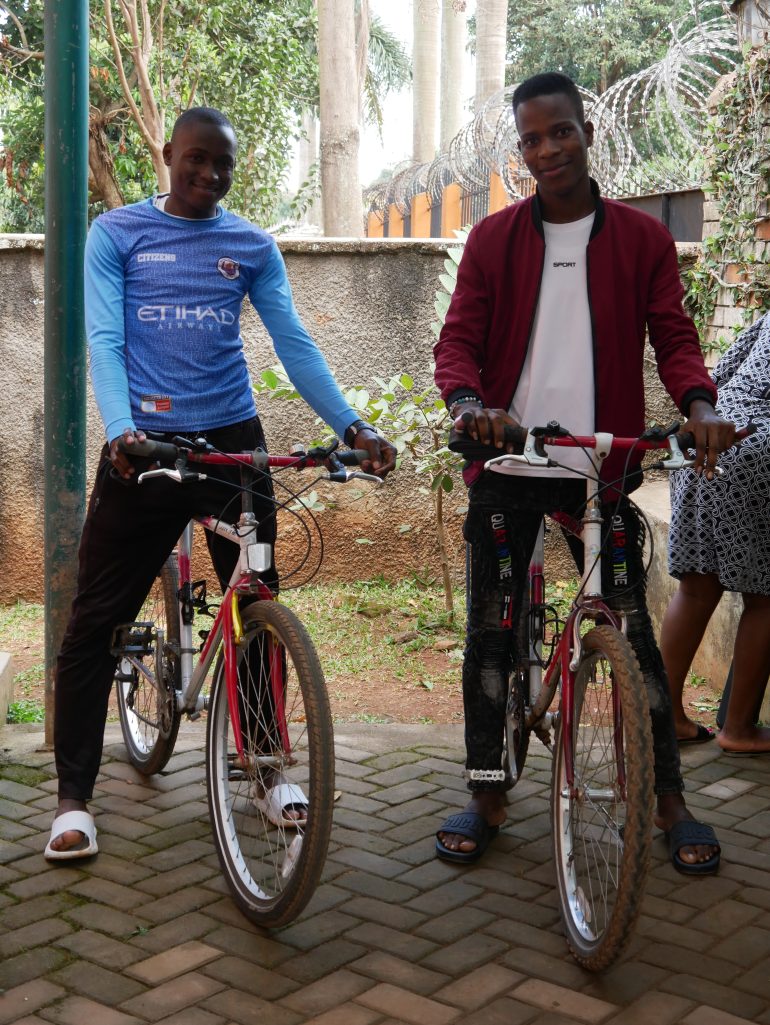
As we take off from Entebbe airport we look back down at the red dirt below us and the glistening expanse of Lake Victoria. This country has given us so many memorable experiences through the wonderful people, the incredible wildlife and the rugged landscape in a journey that has been unlike any other for us. As we rise higher the African continent opens out below before we suddenly disappear into the clouds. We will be back here one day, I’m sure of that.
Platform for Labour Action is supported from the UK by @actionon_poverty. If you’d like to help them make huge impacts on amazing people like Shafiq and Abdul then any contributions will be much appreciated and very well used. Please consider making a donation here: https://aptuk.org.uk/donate/

